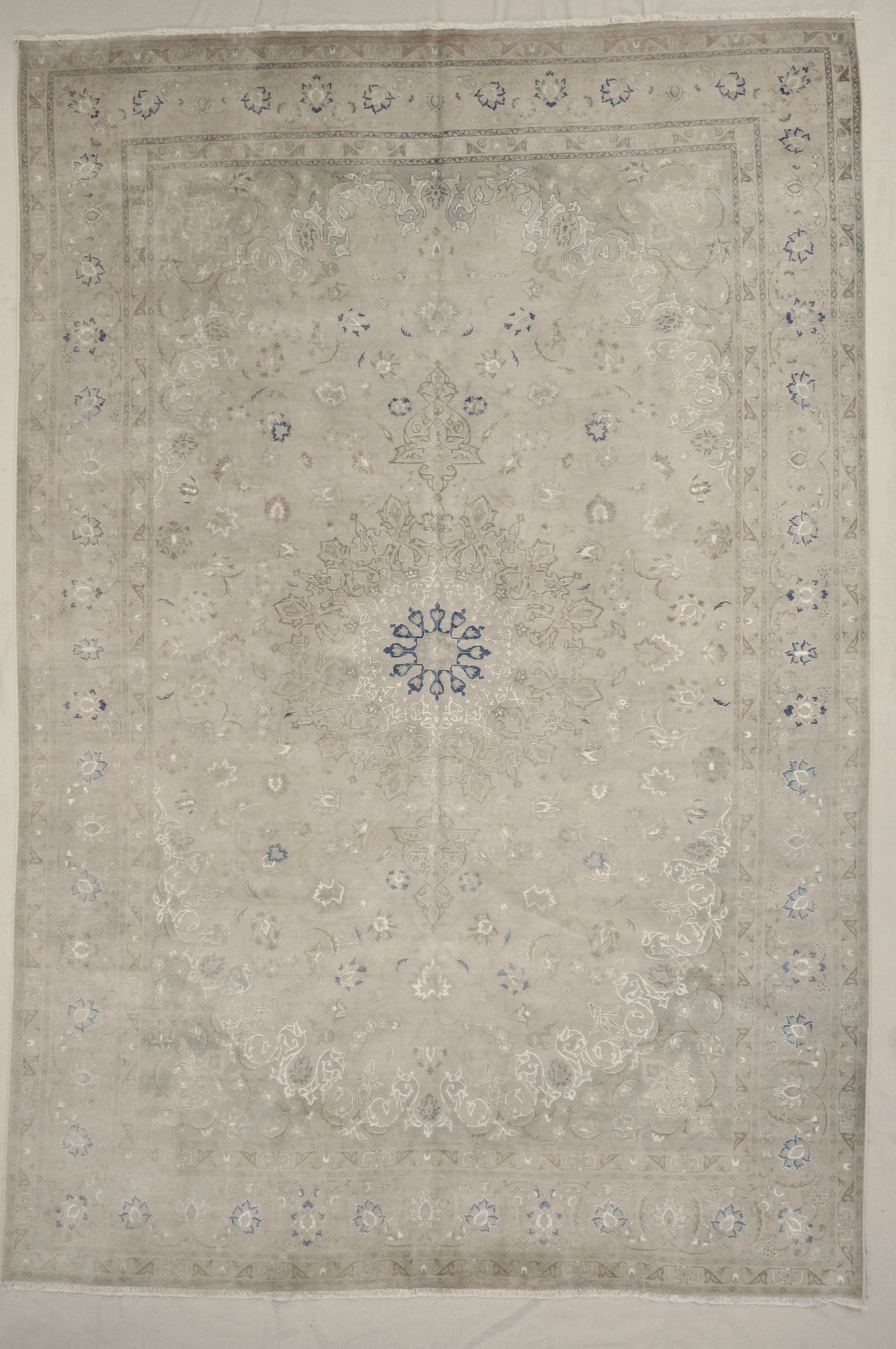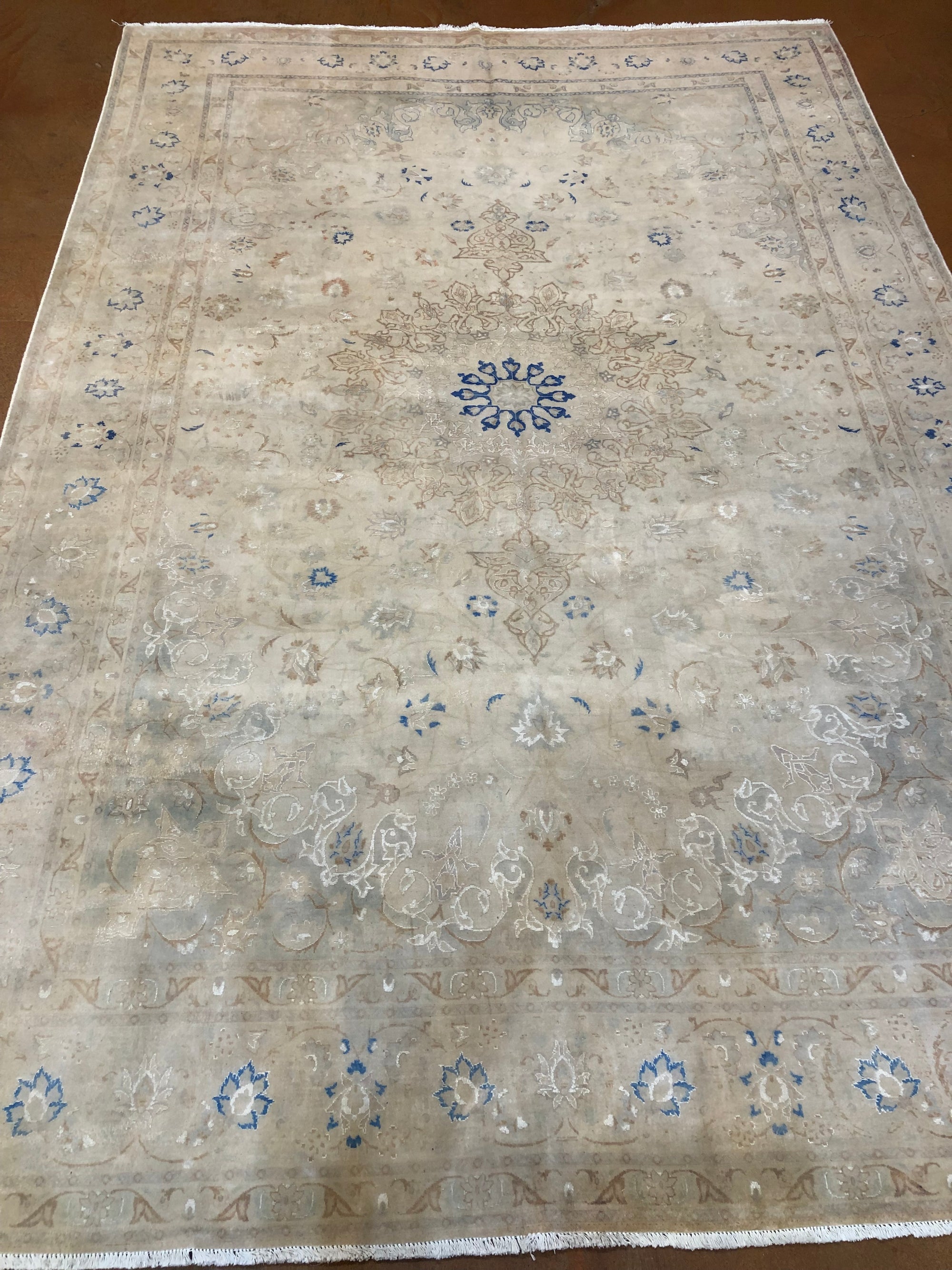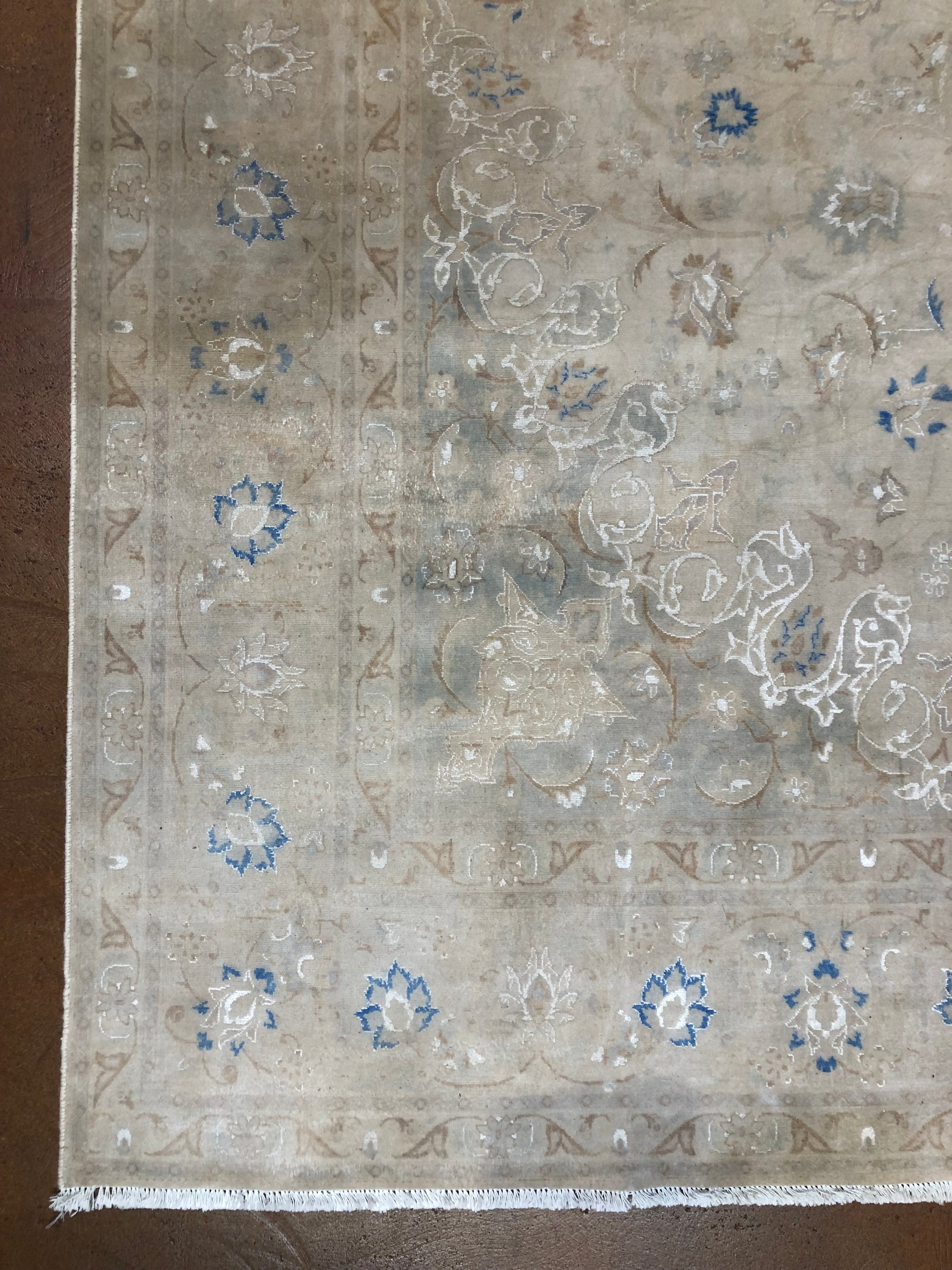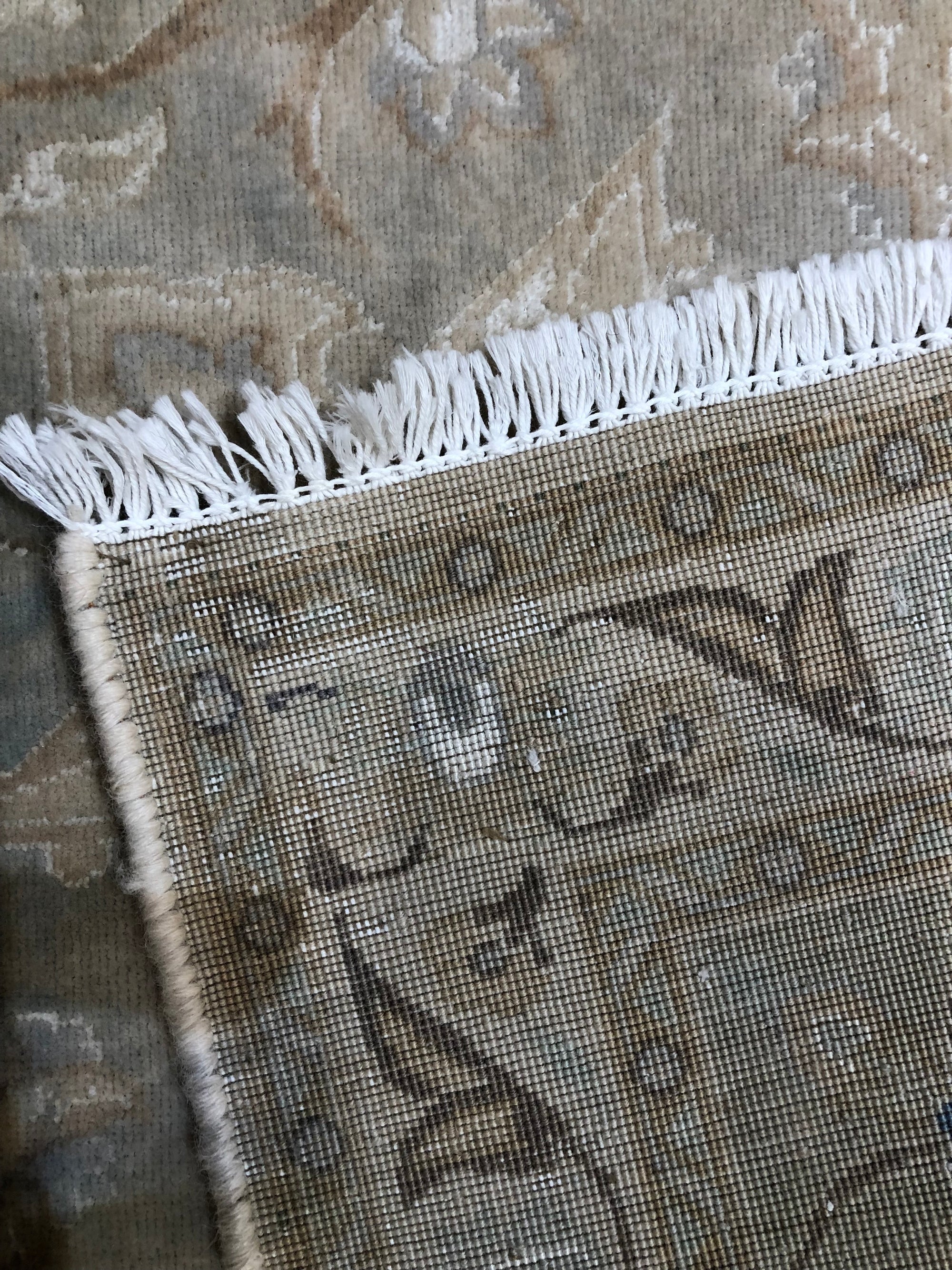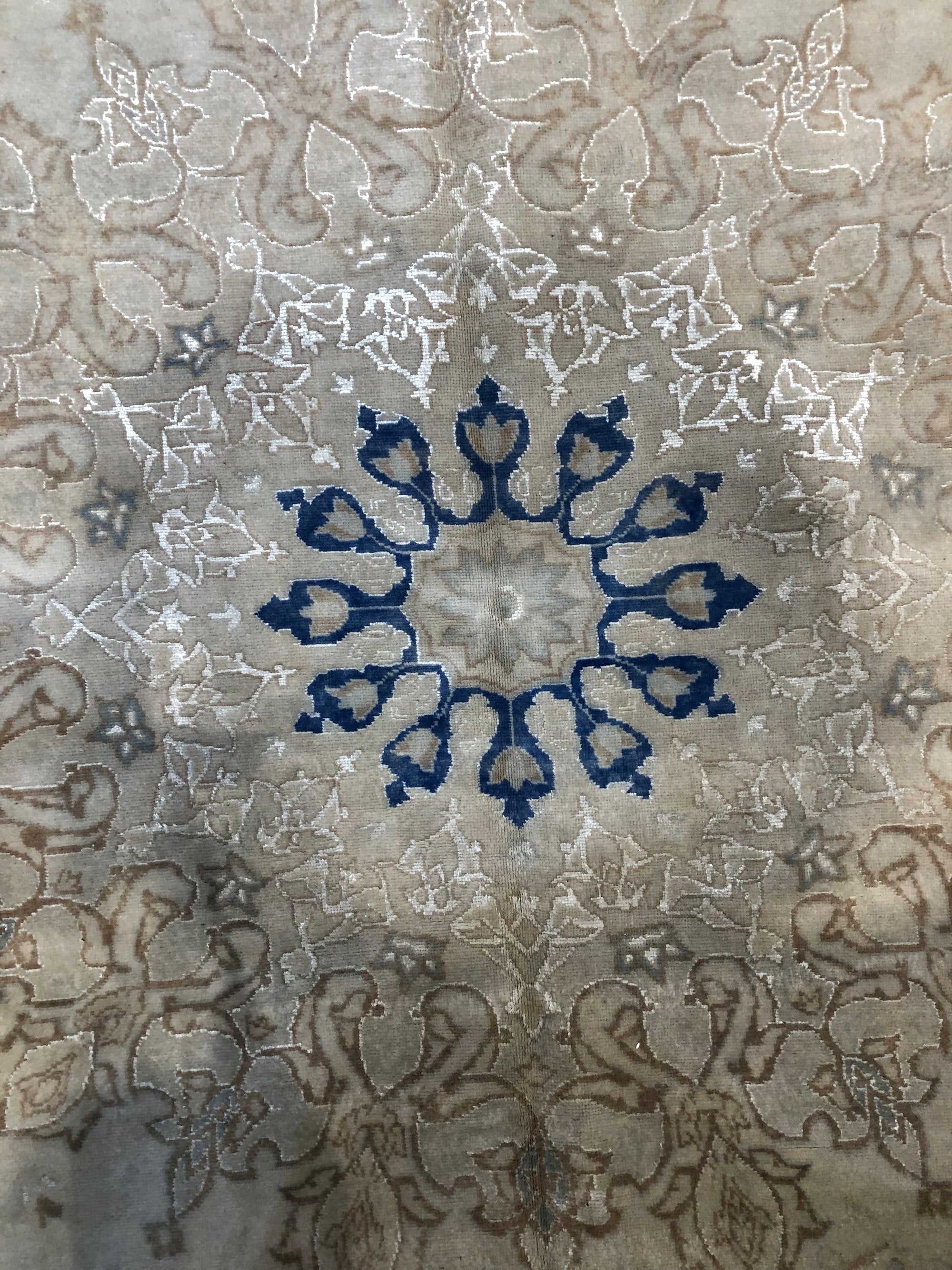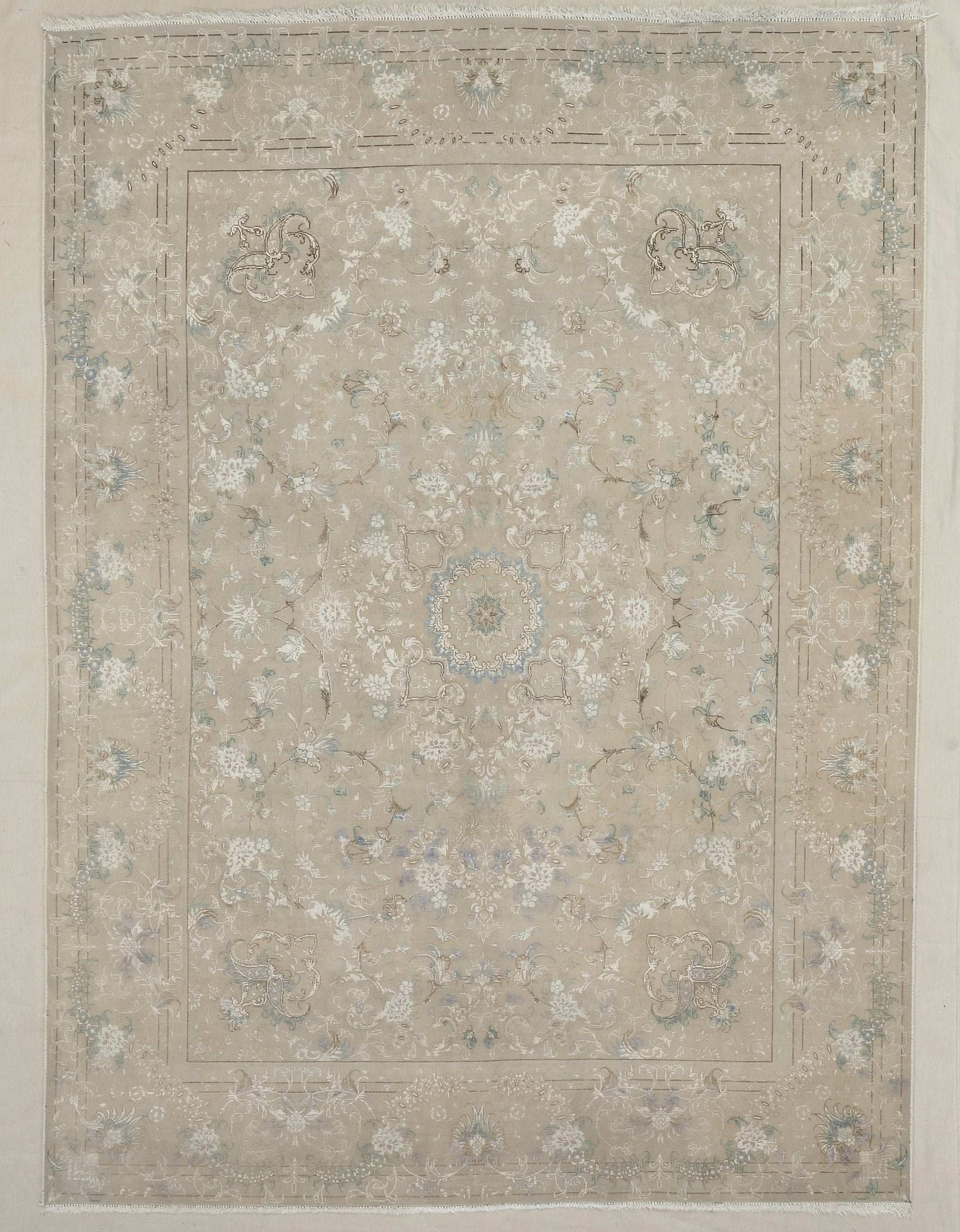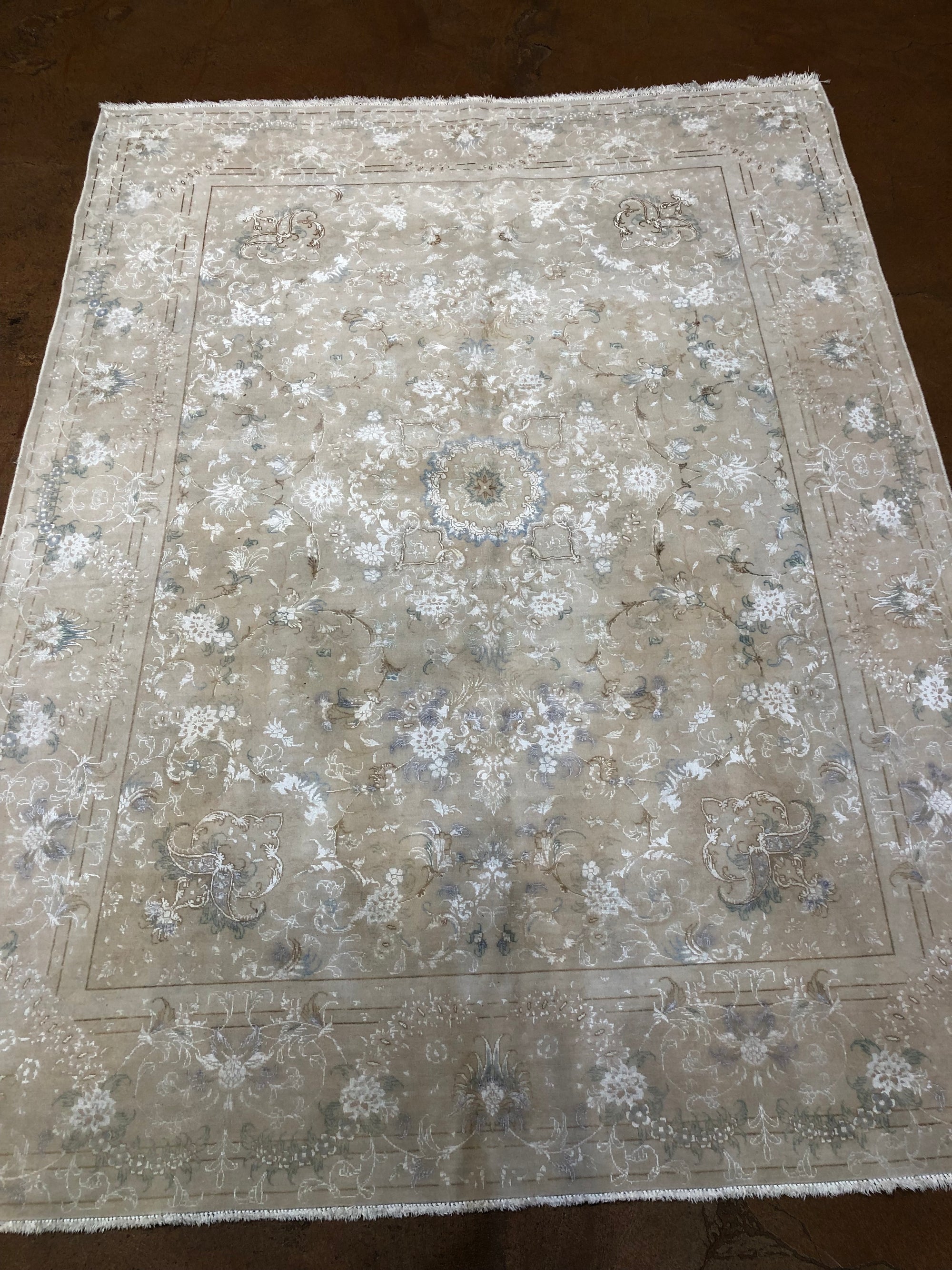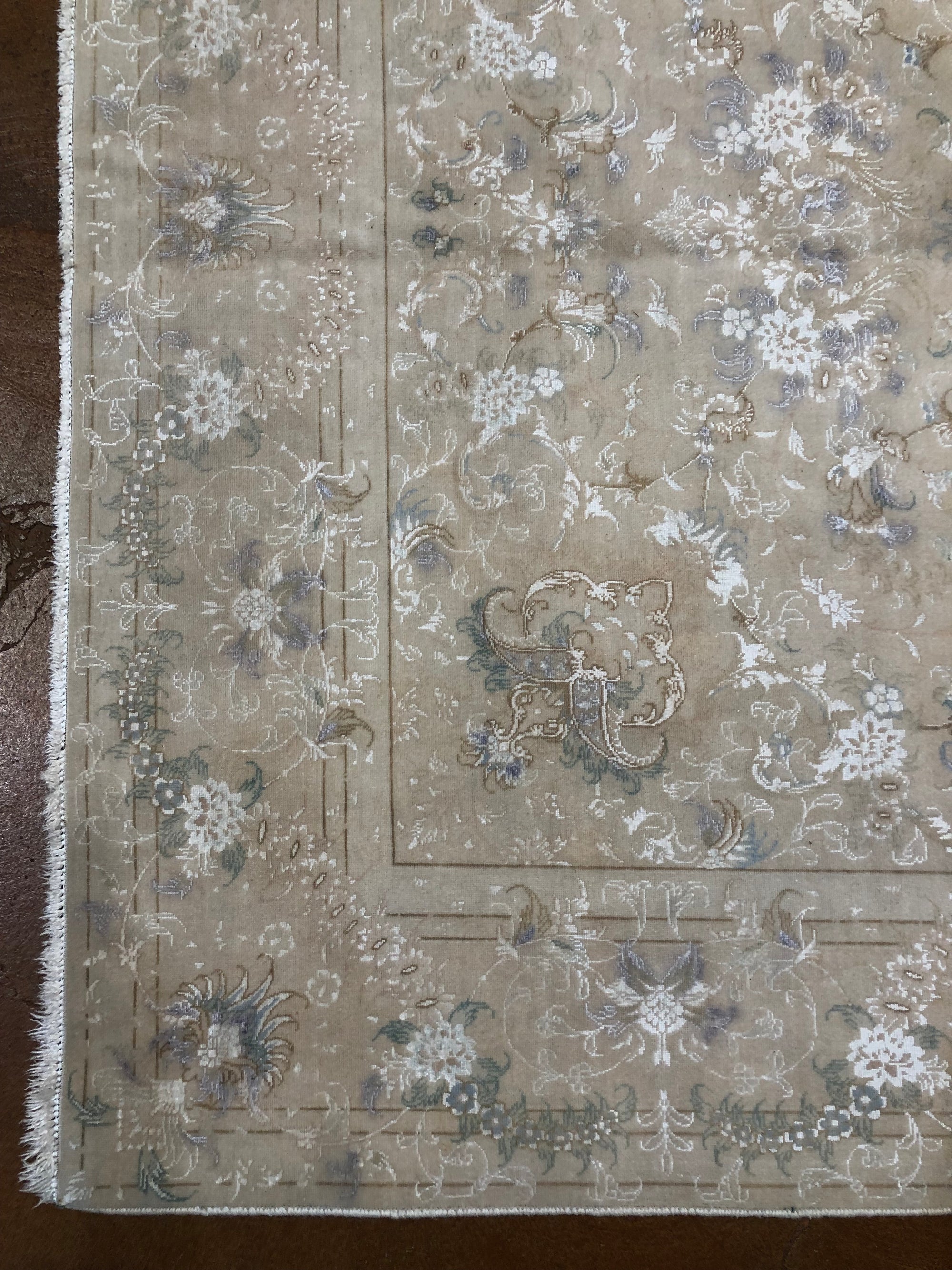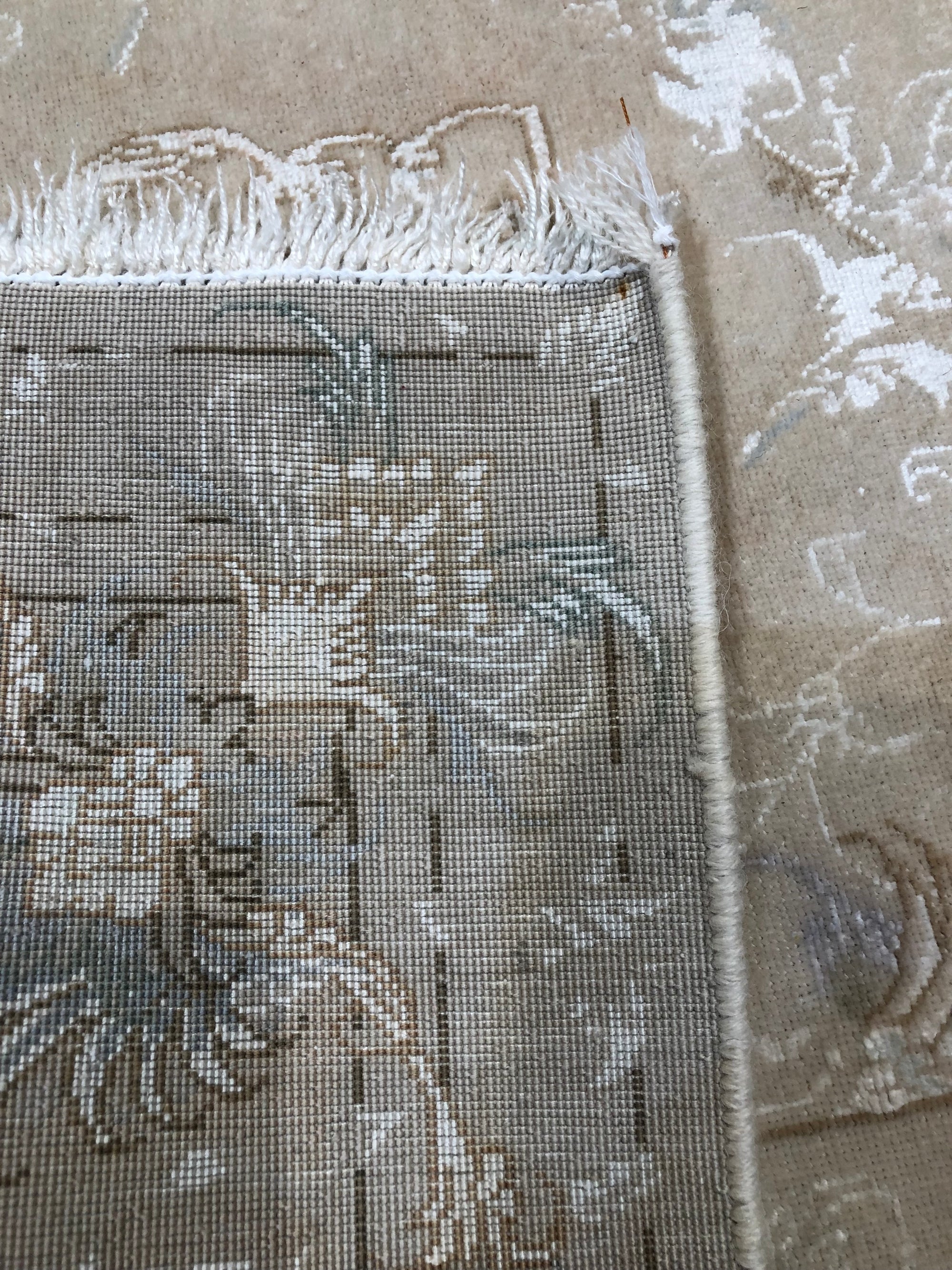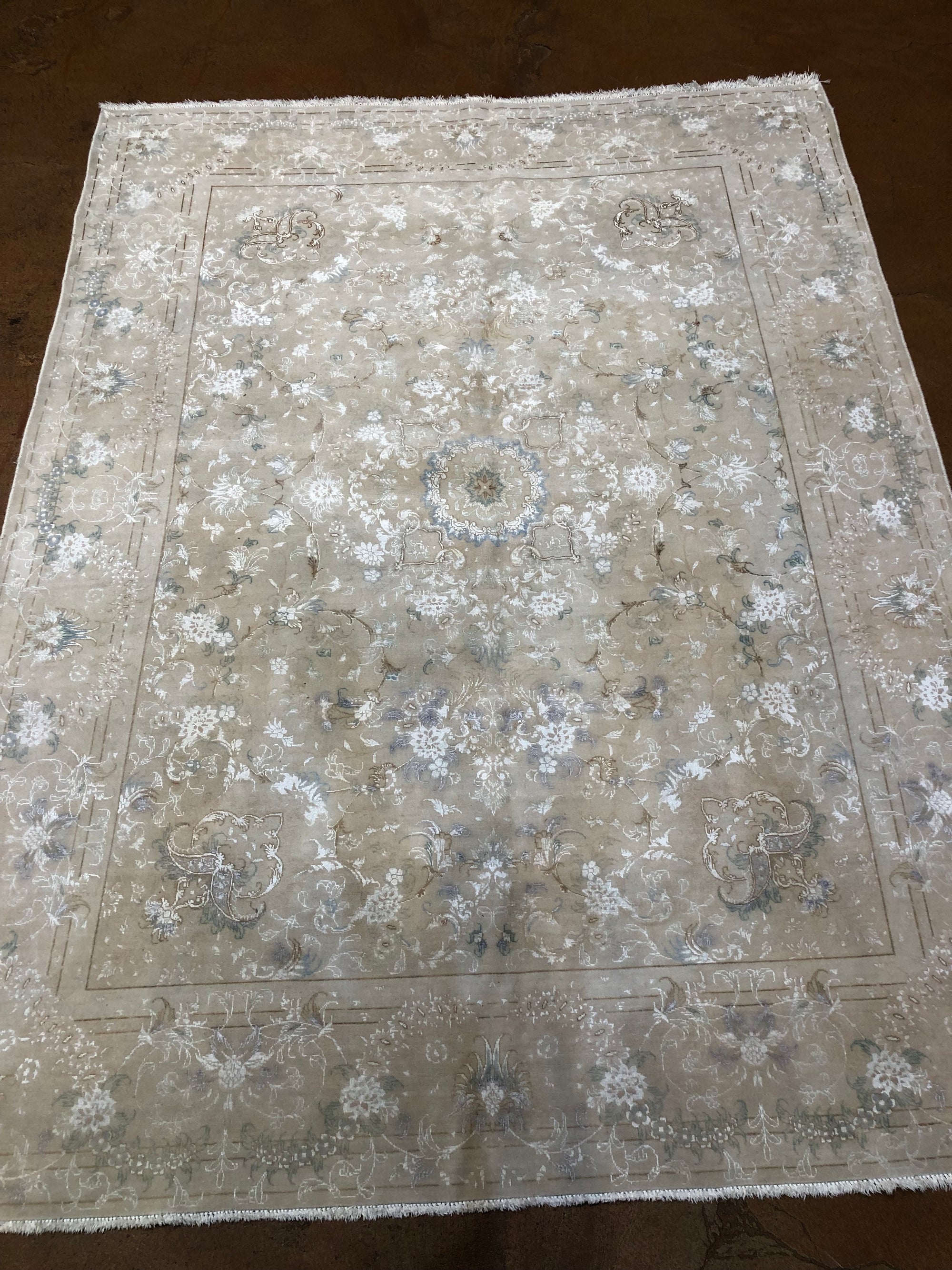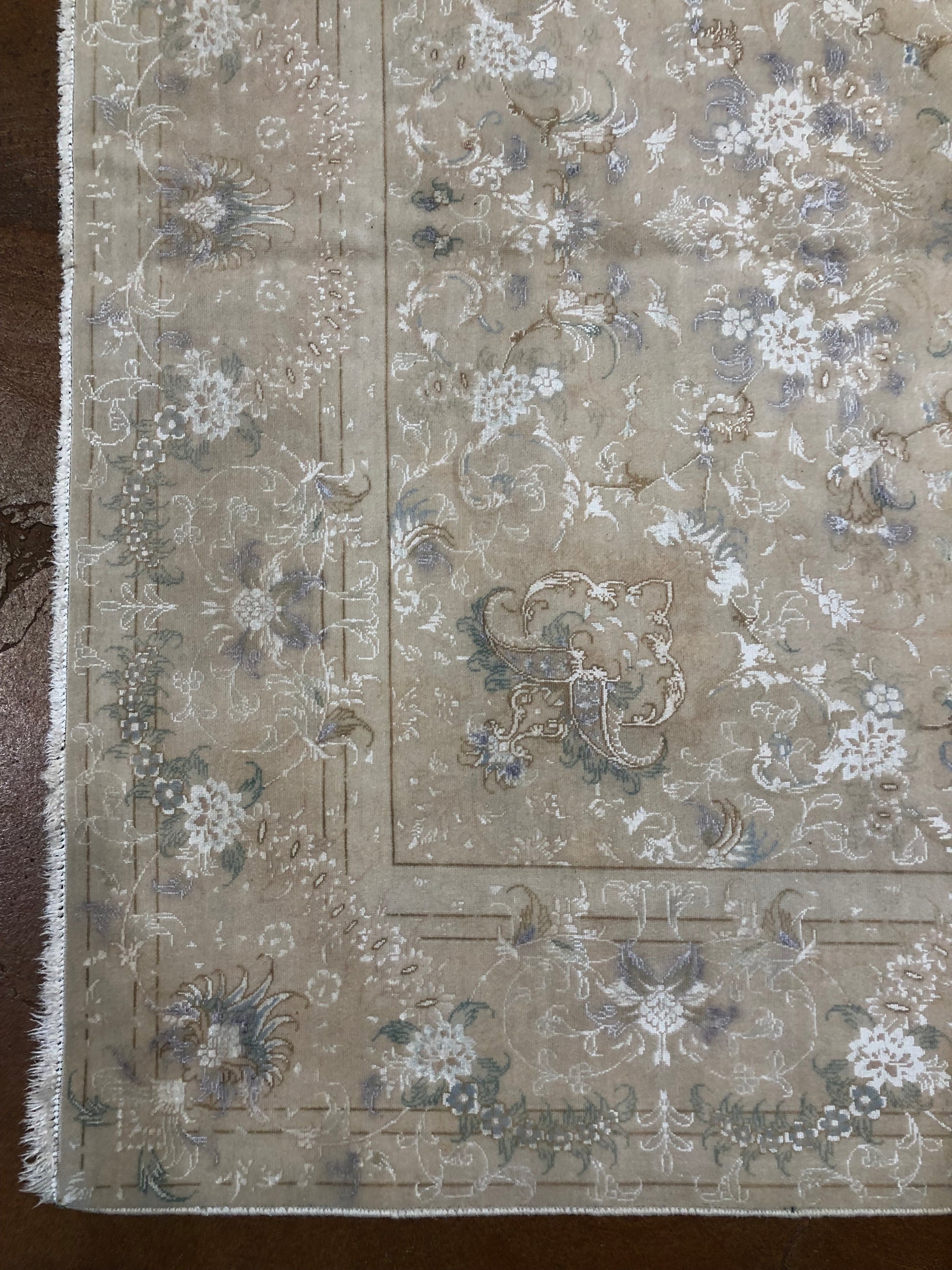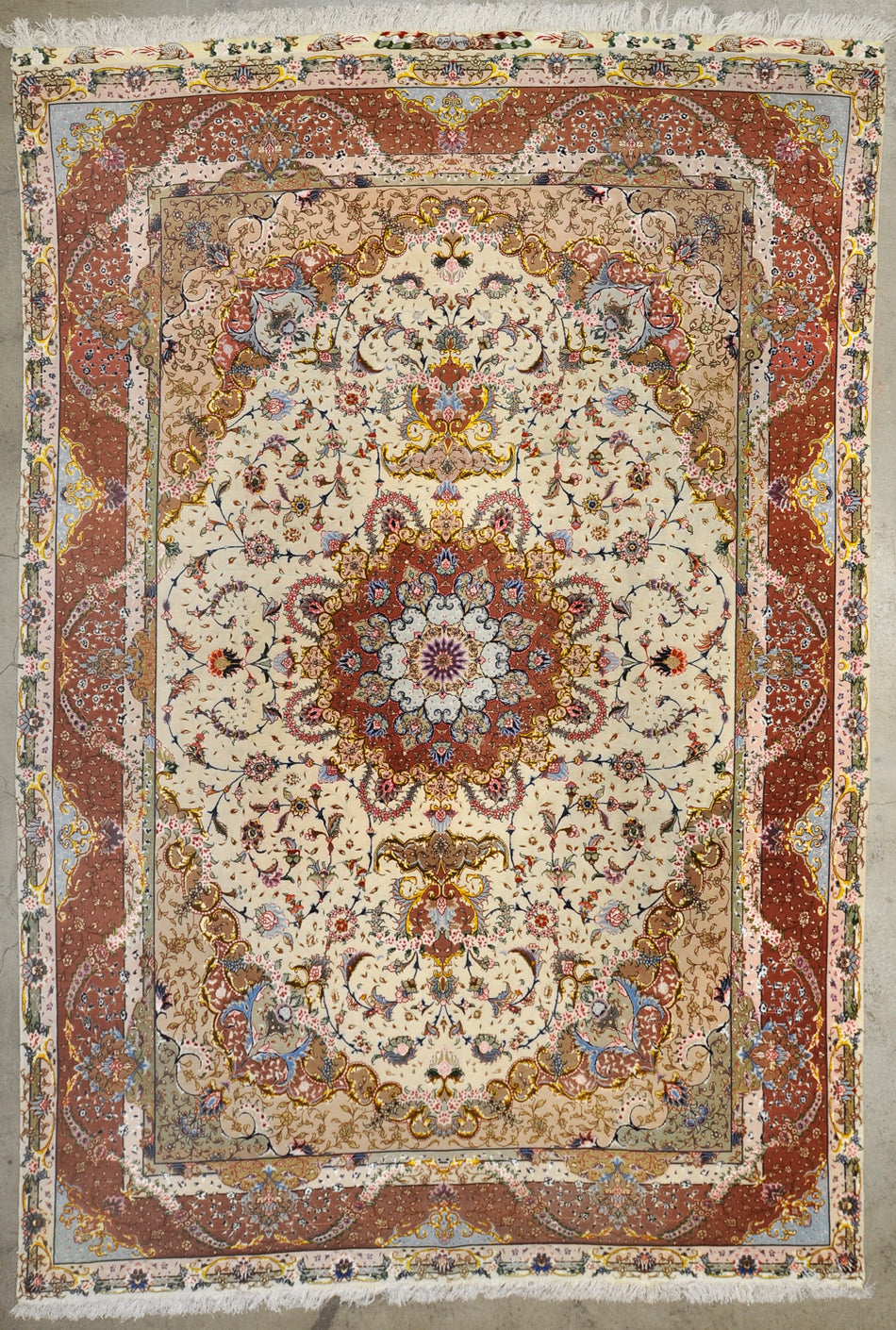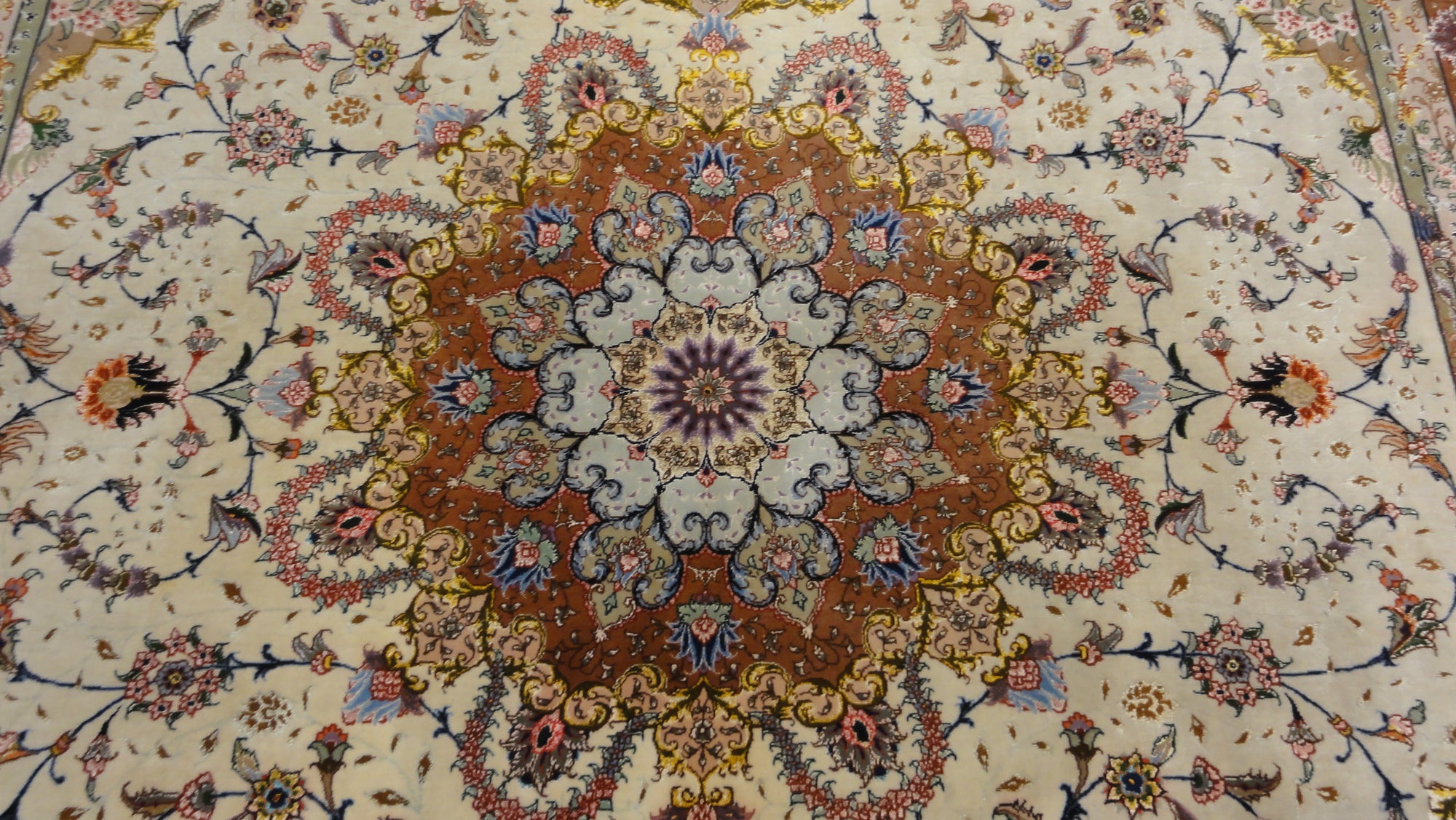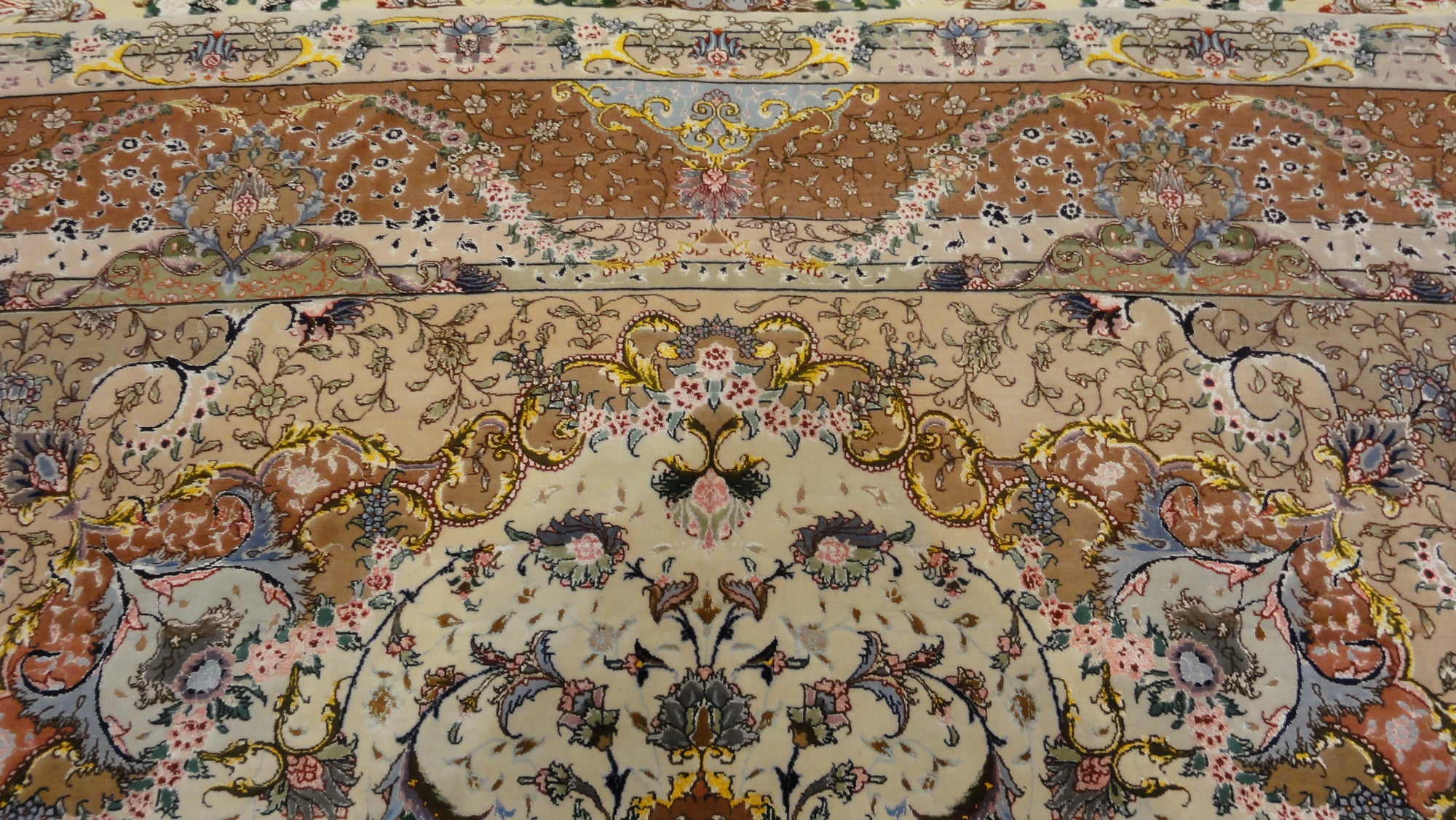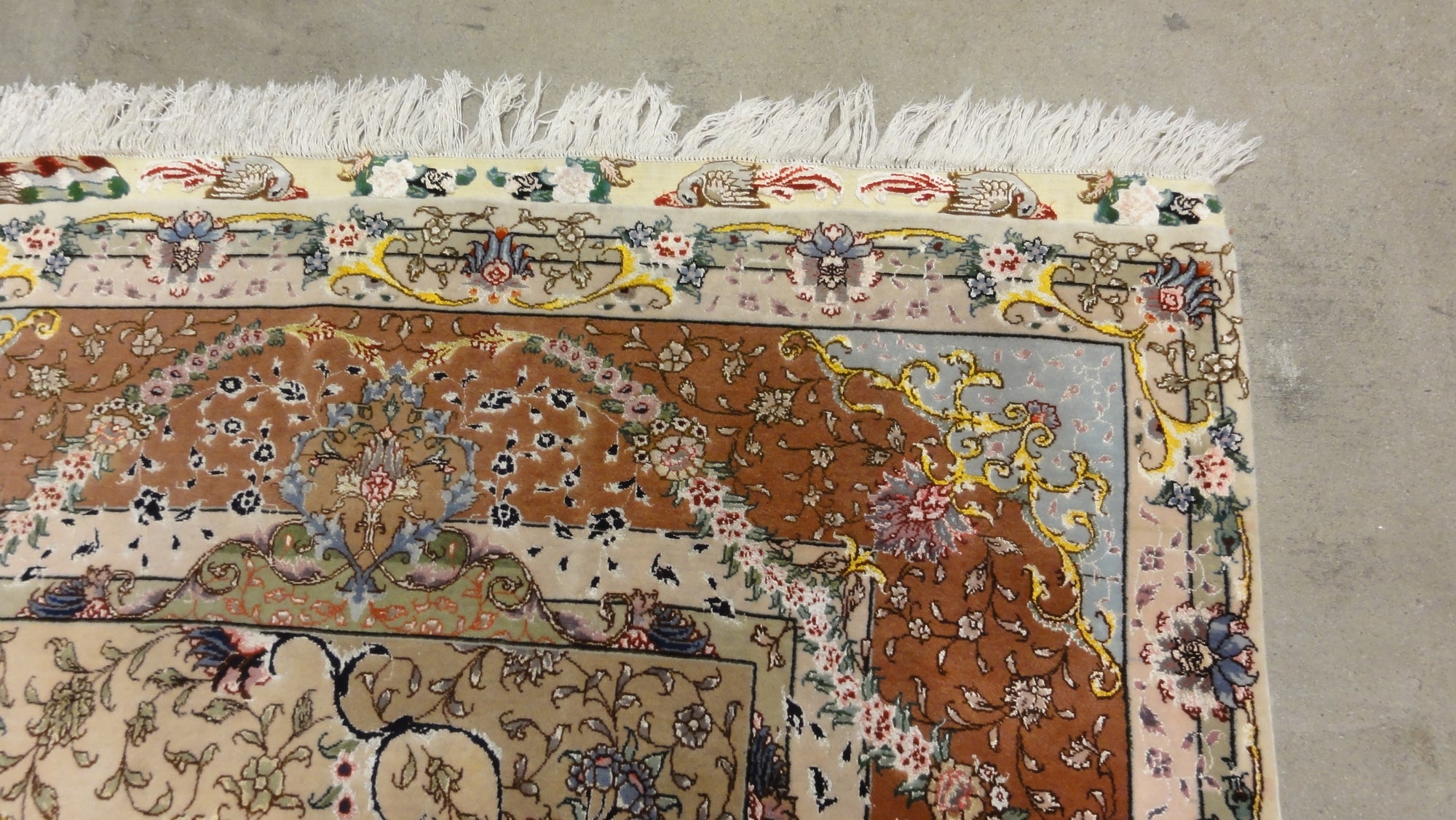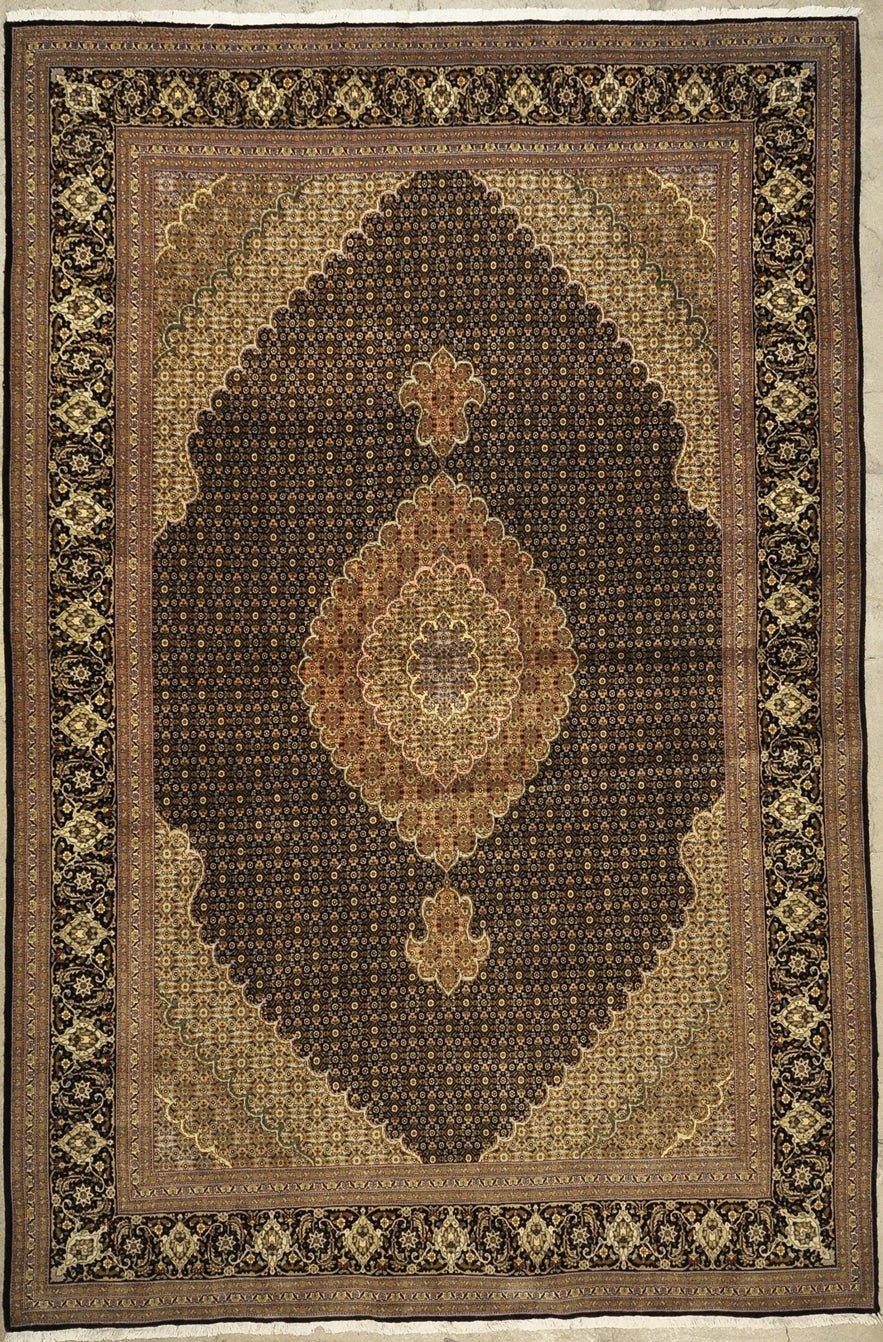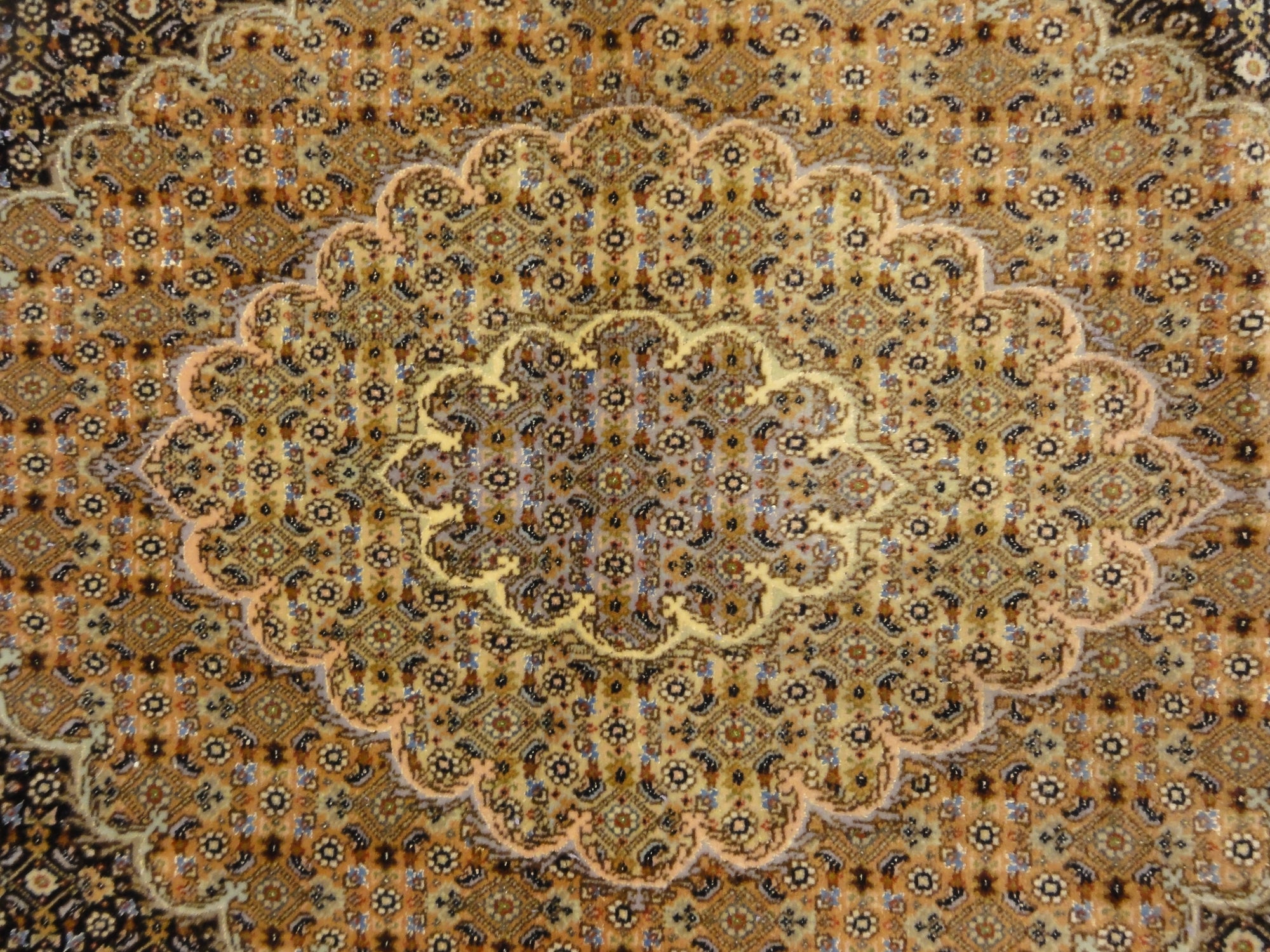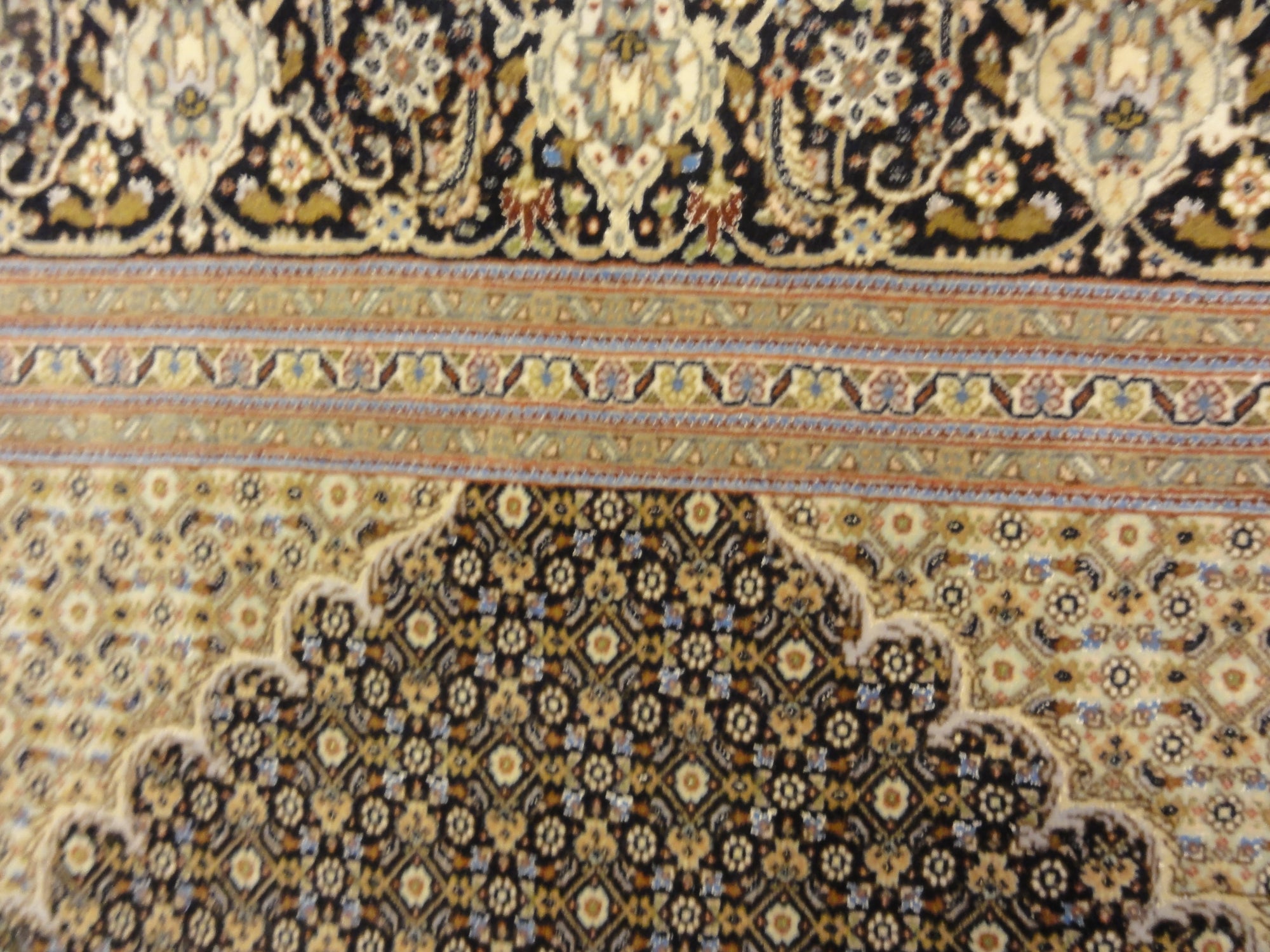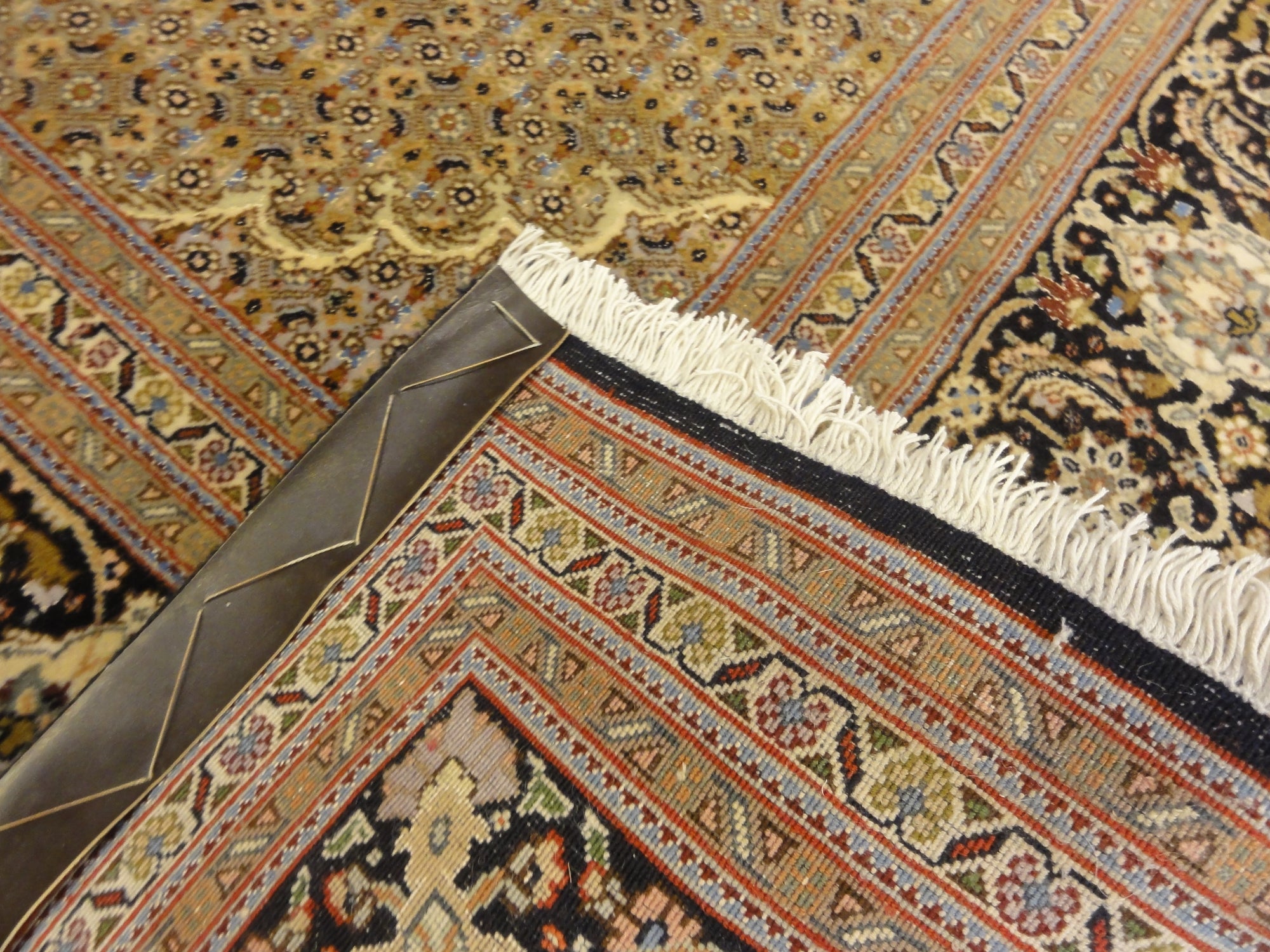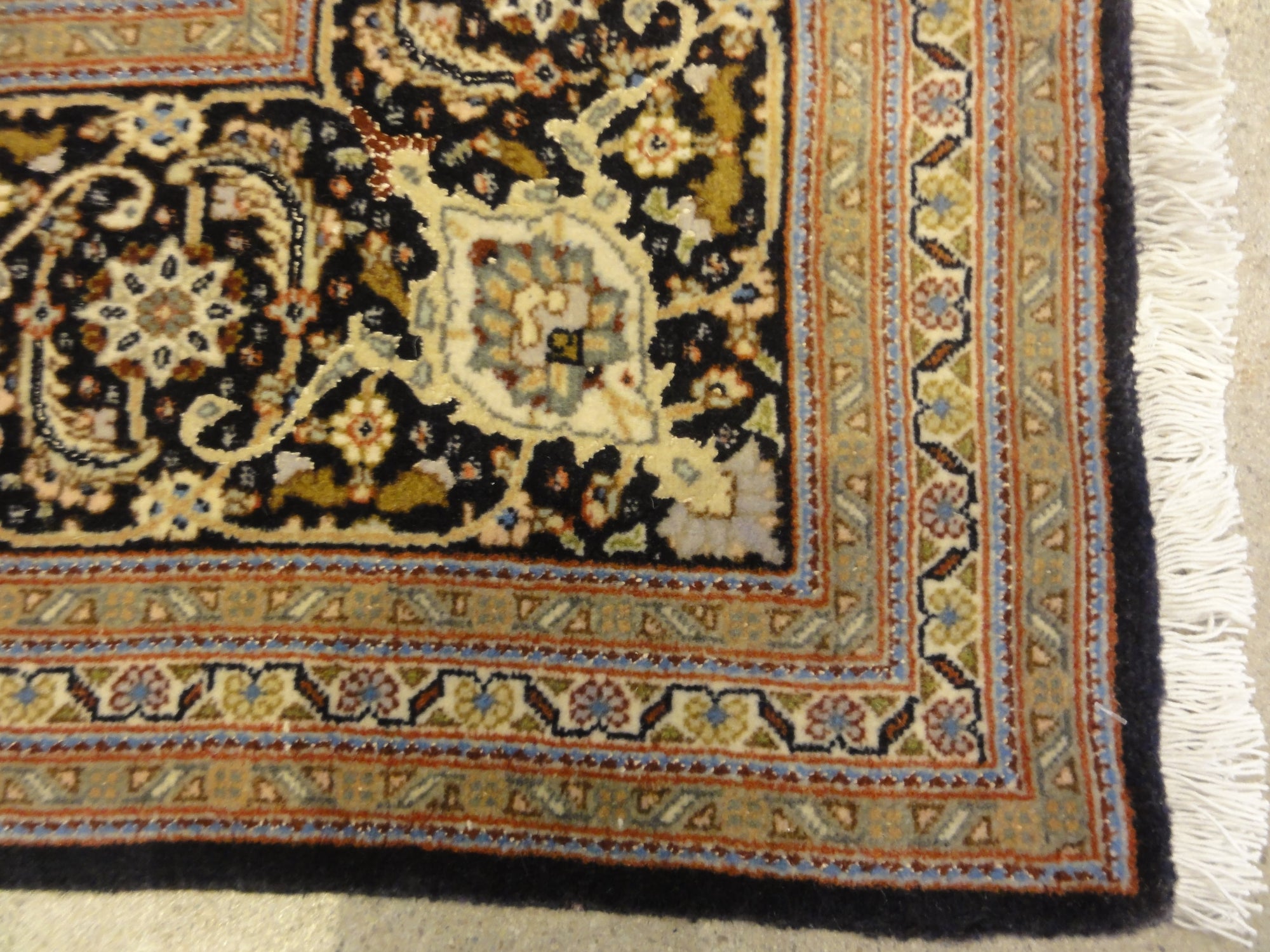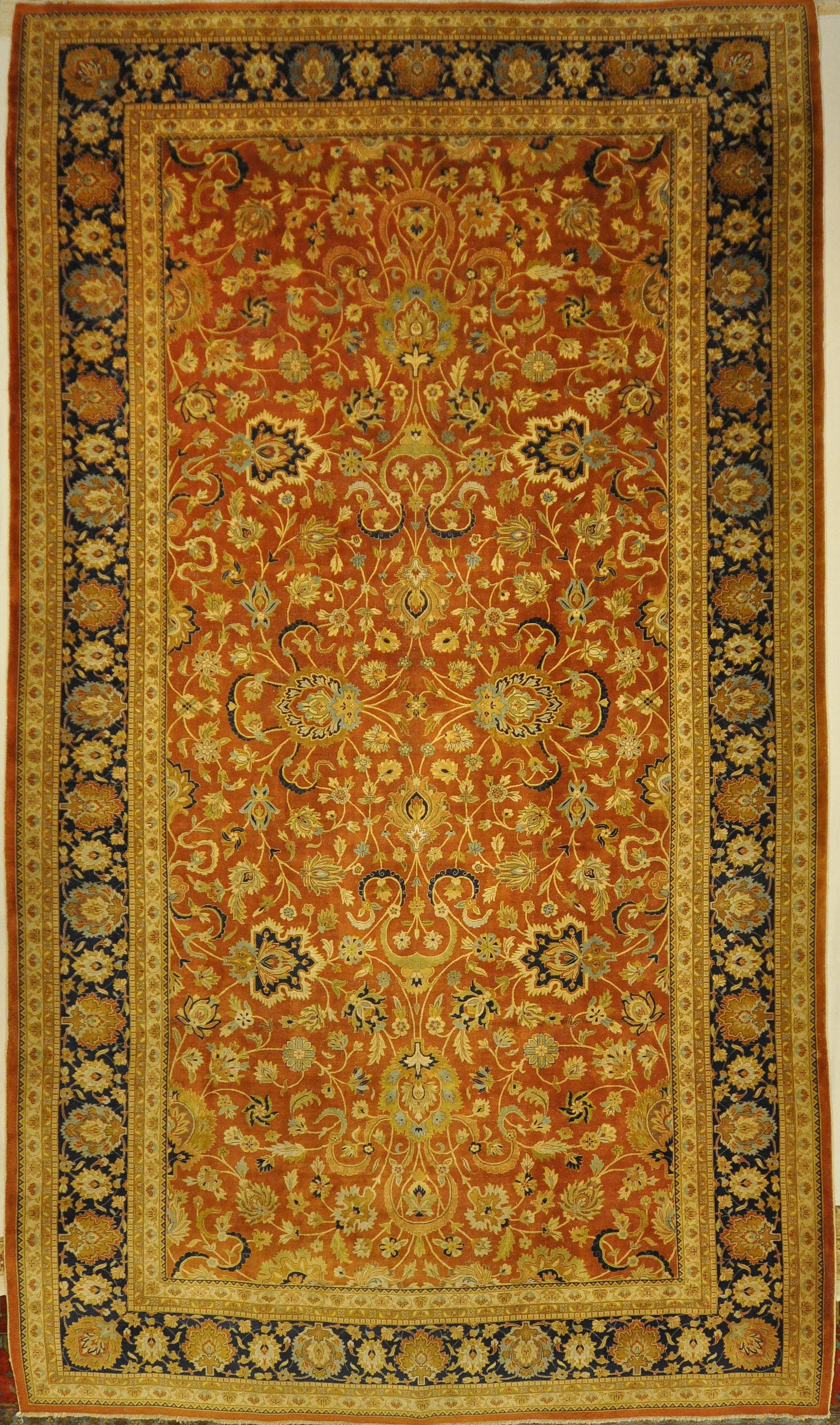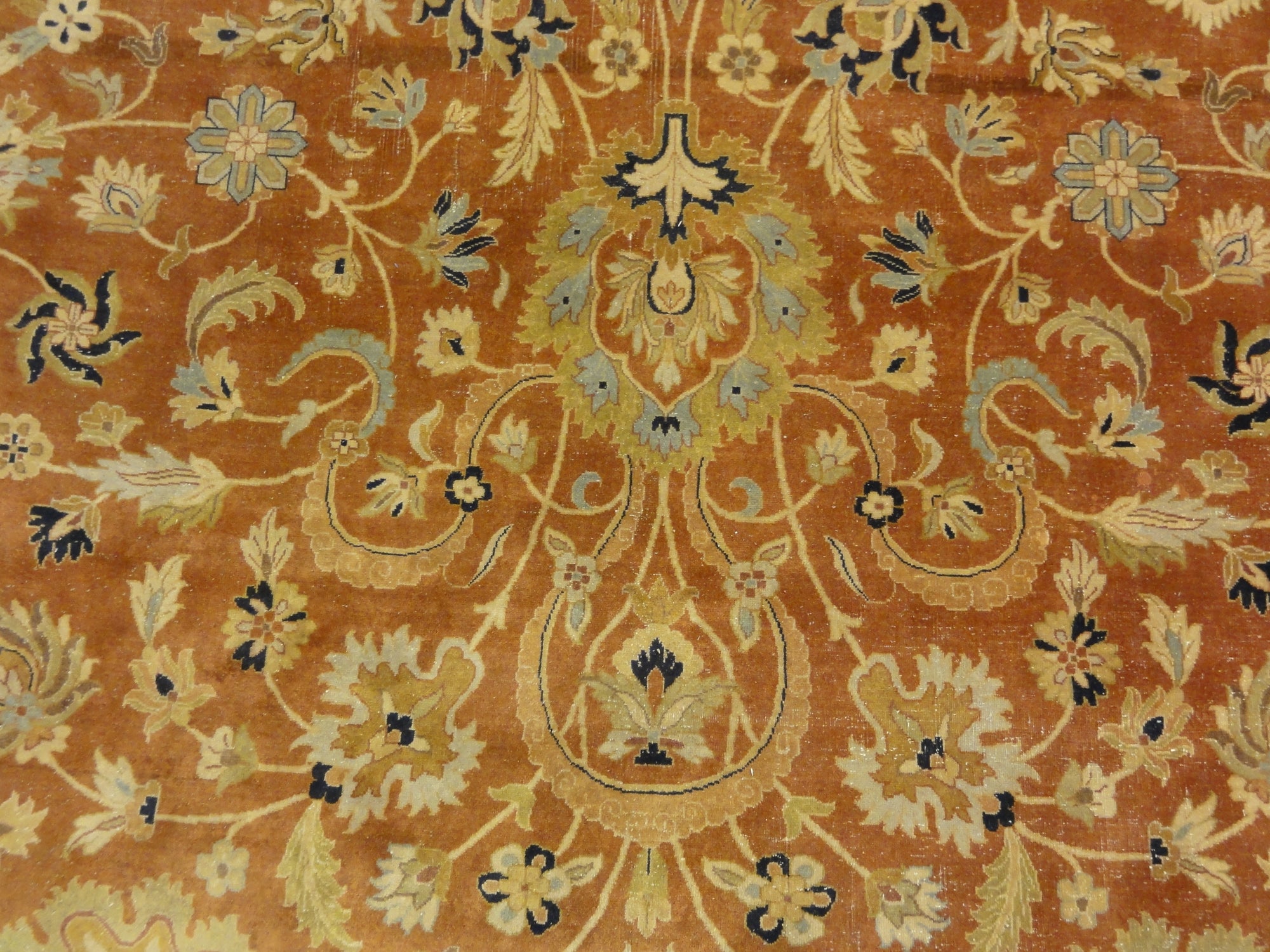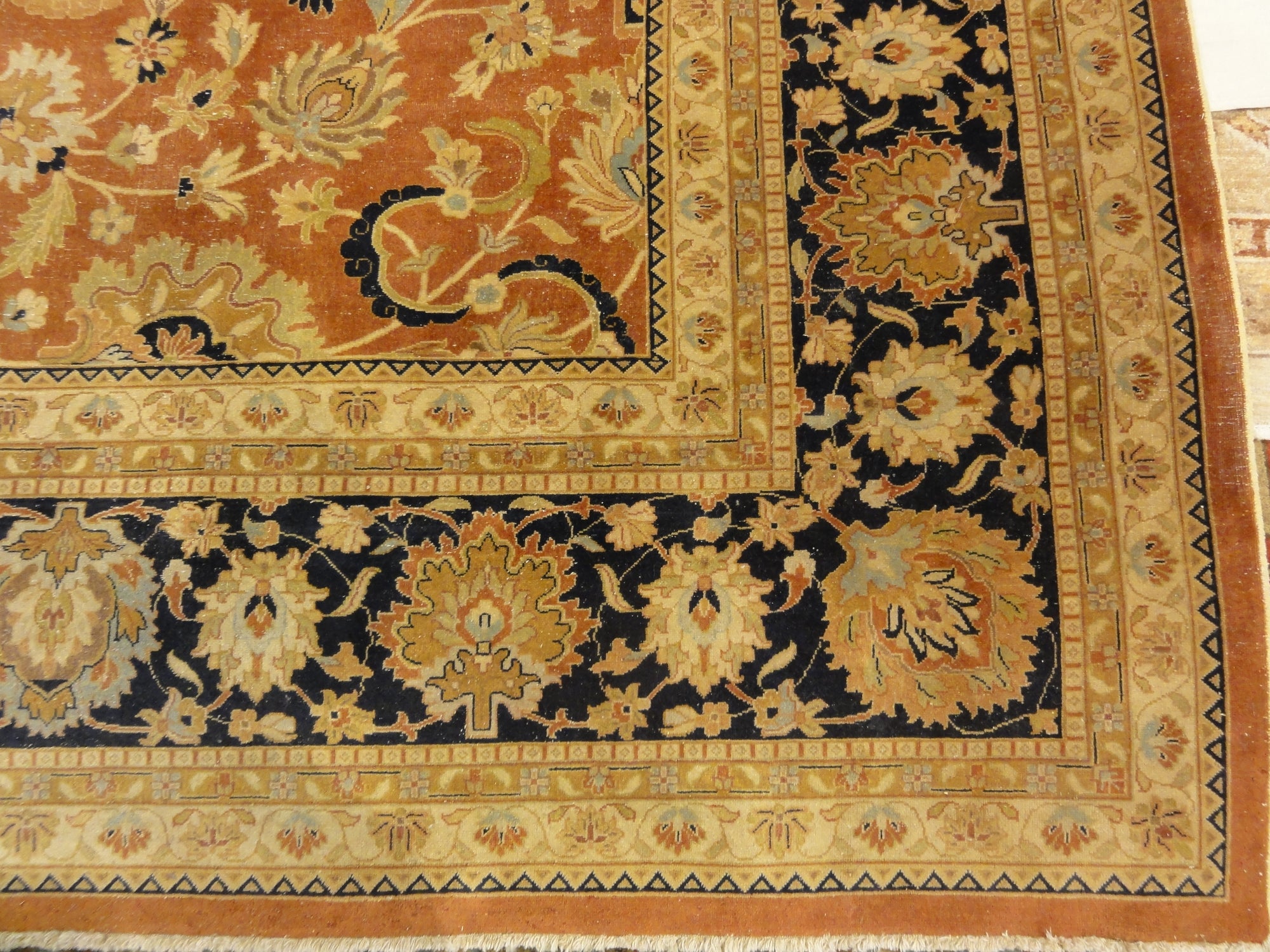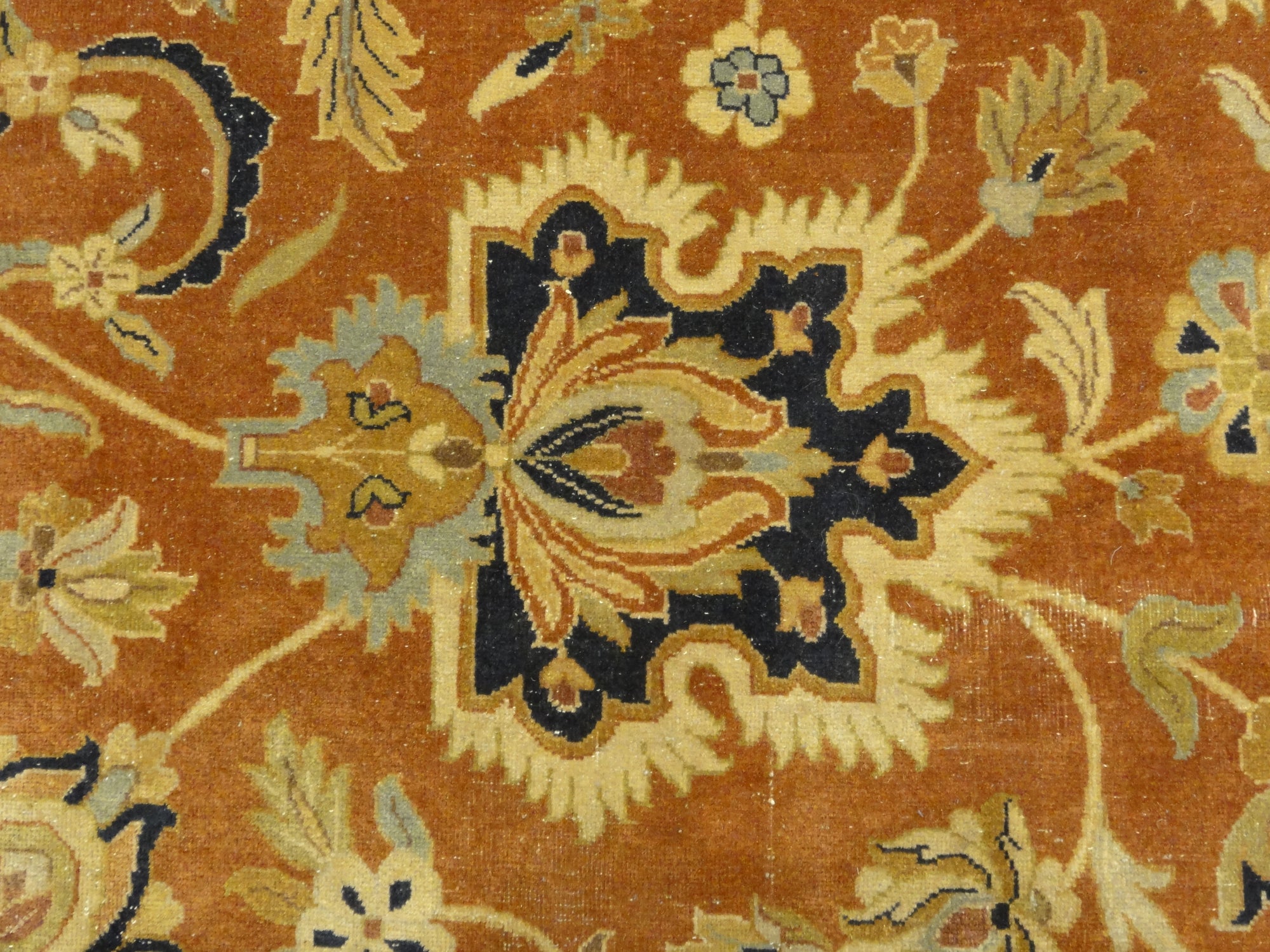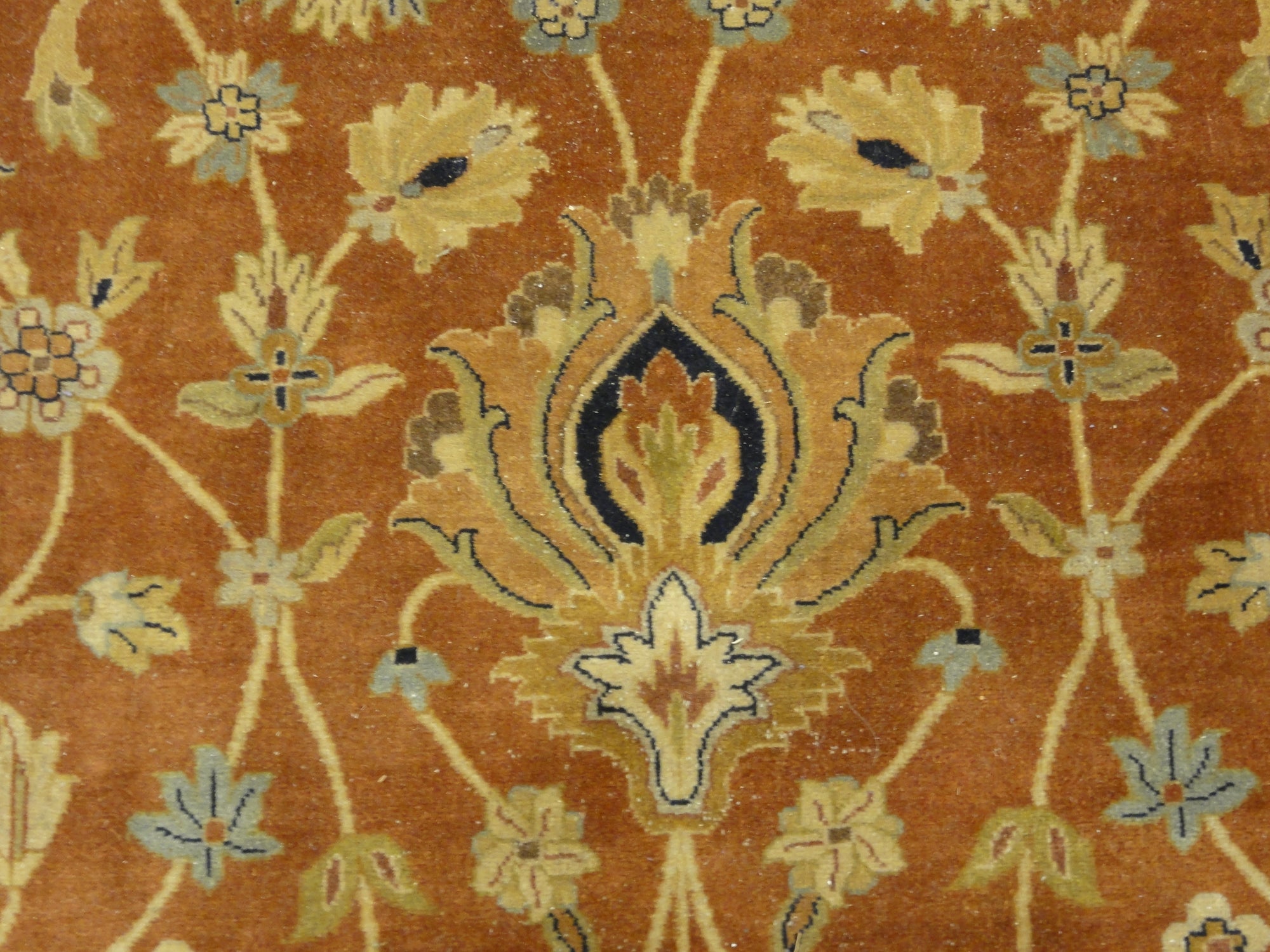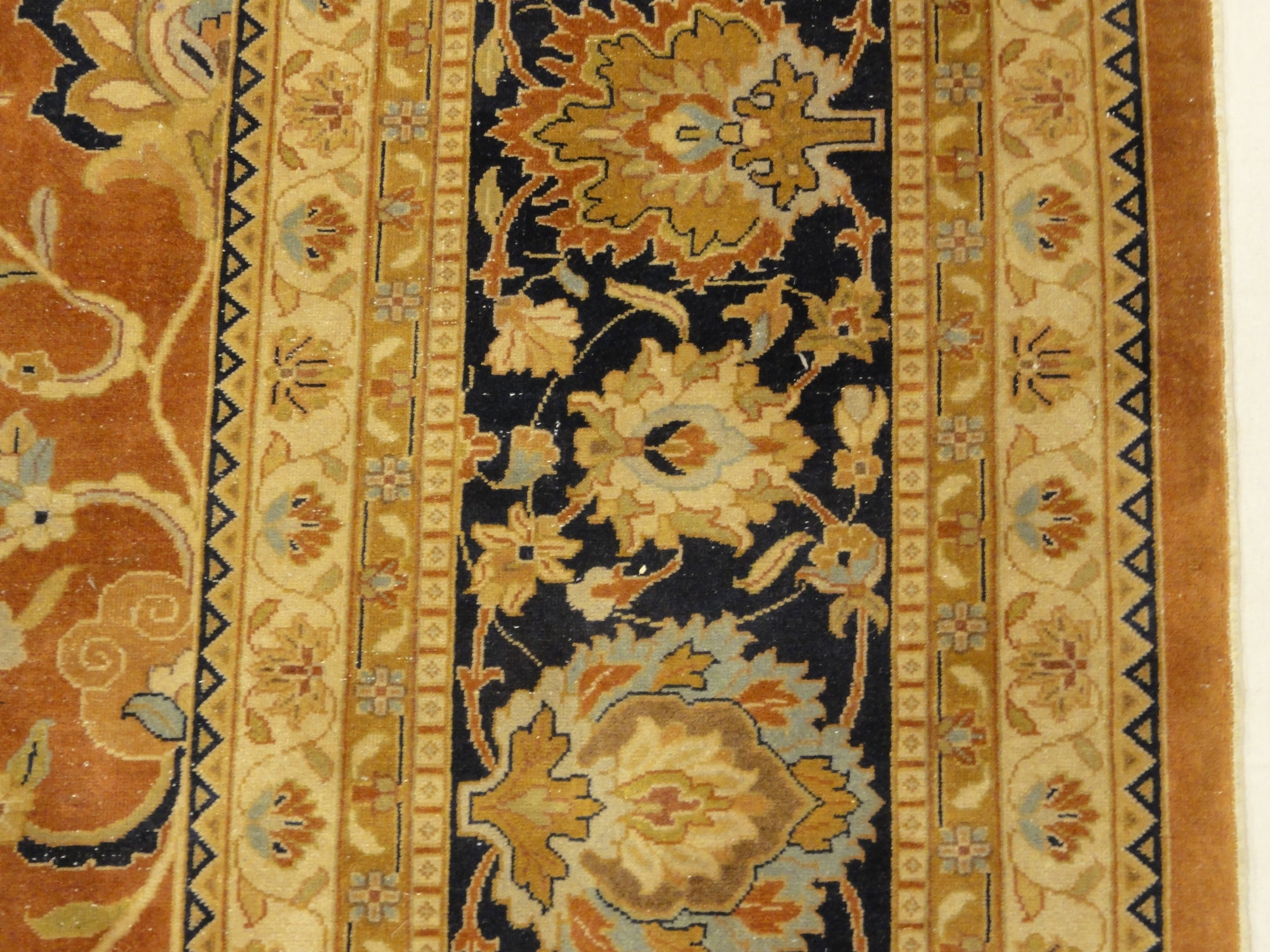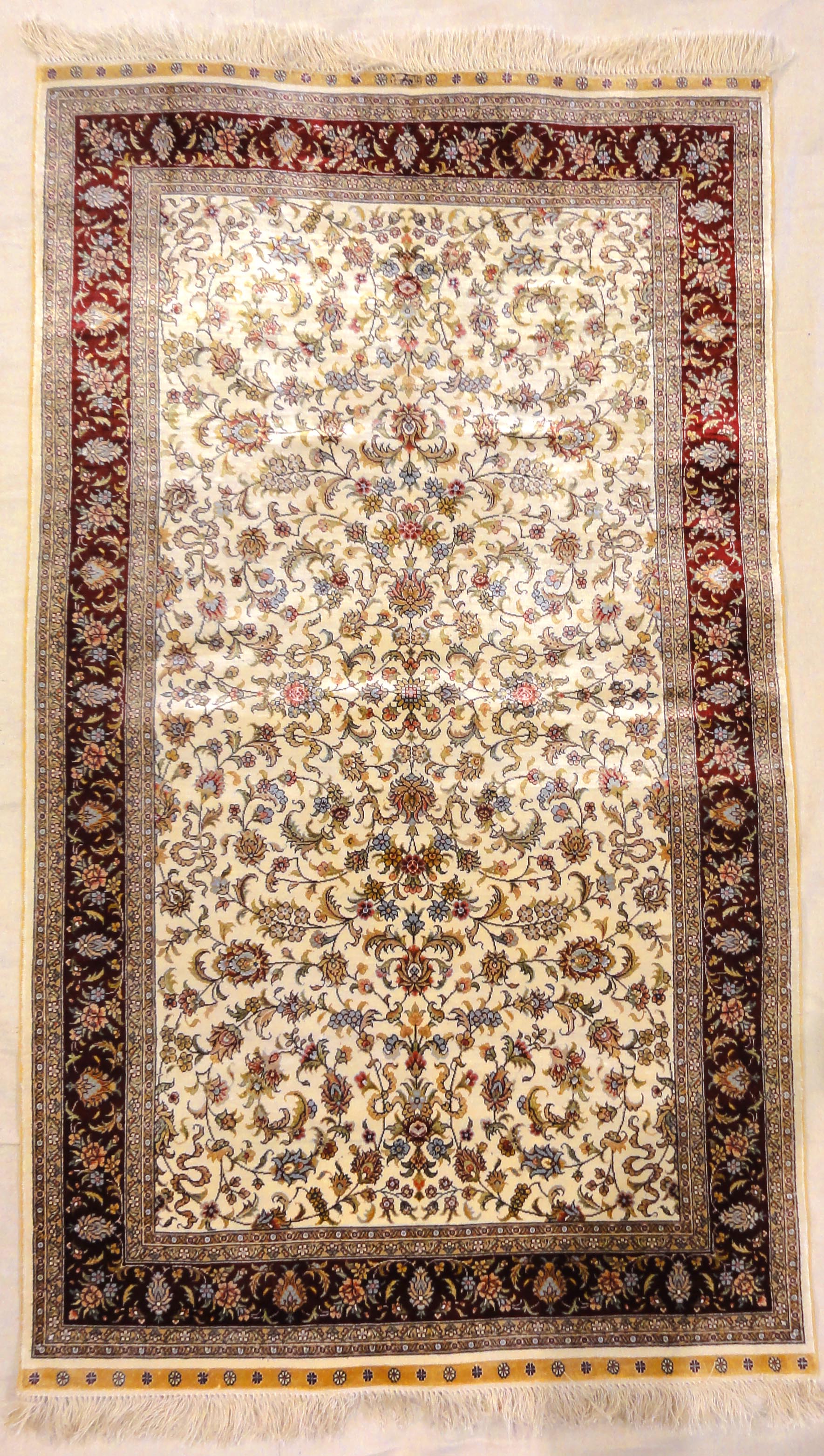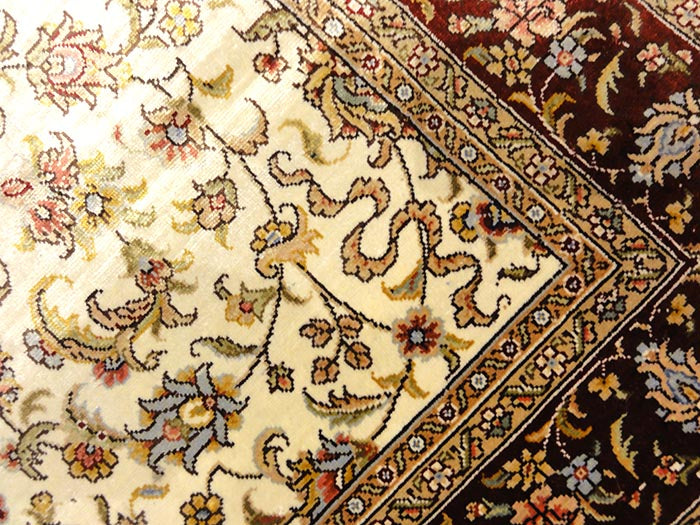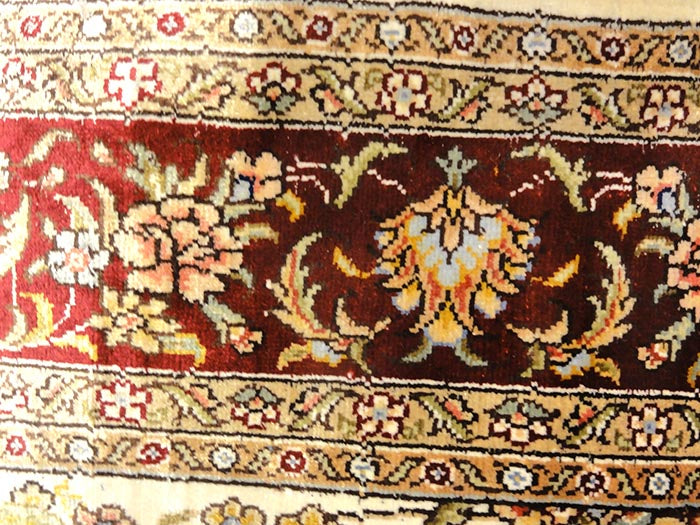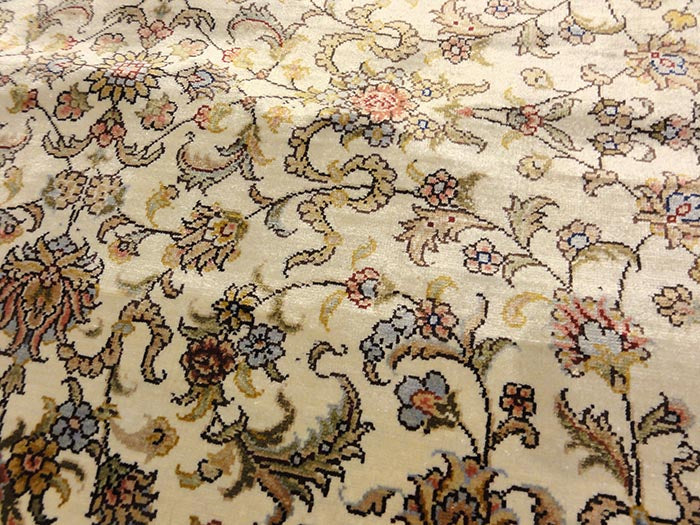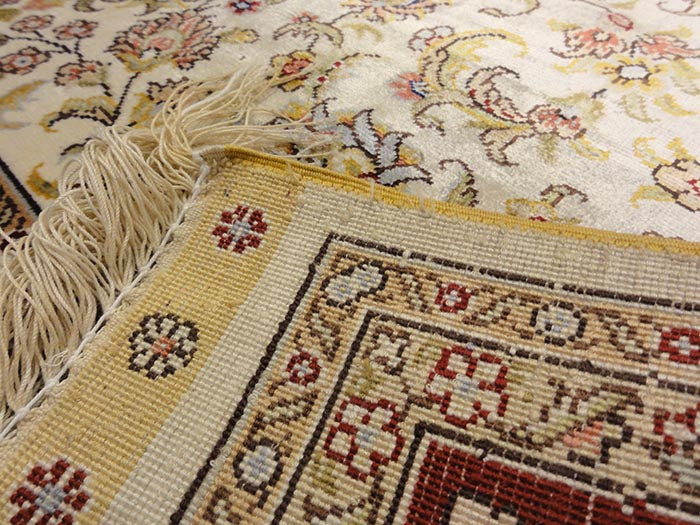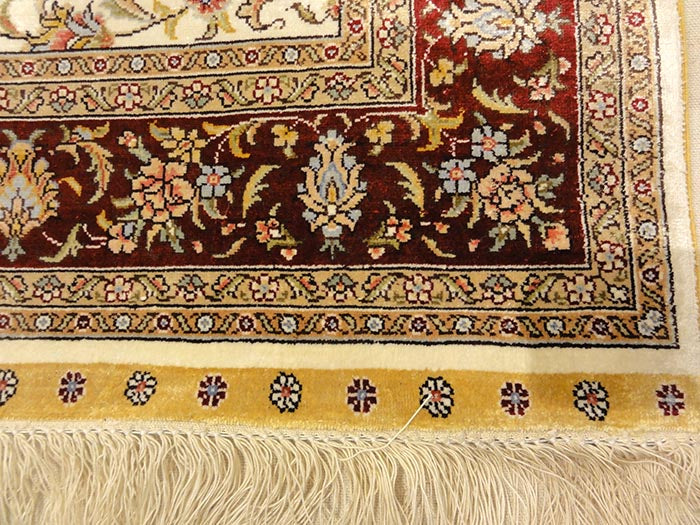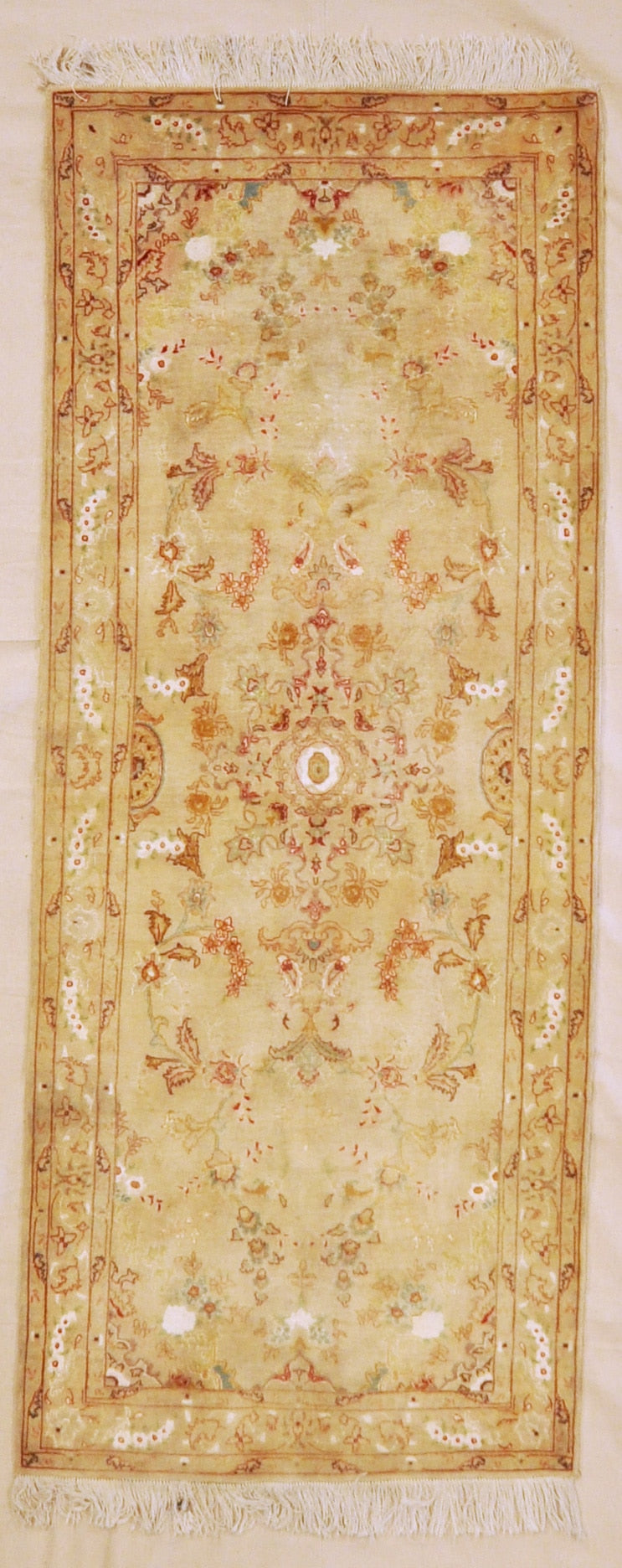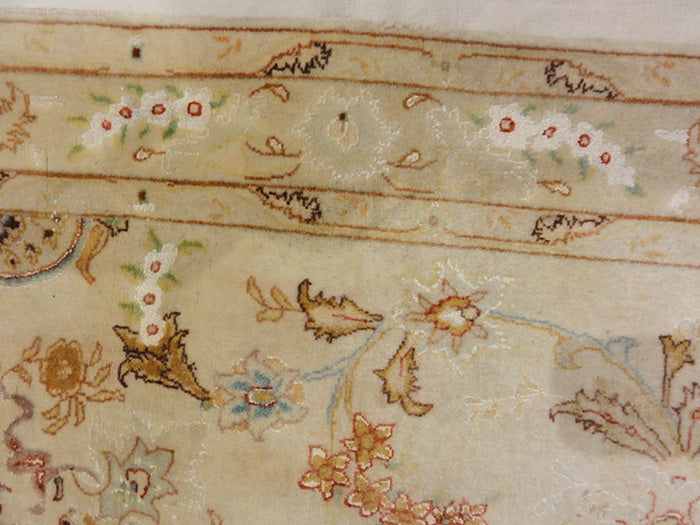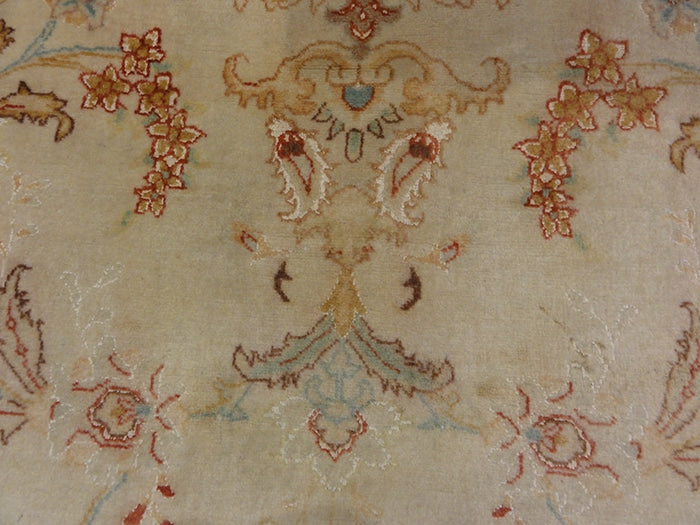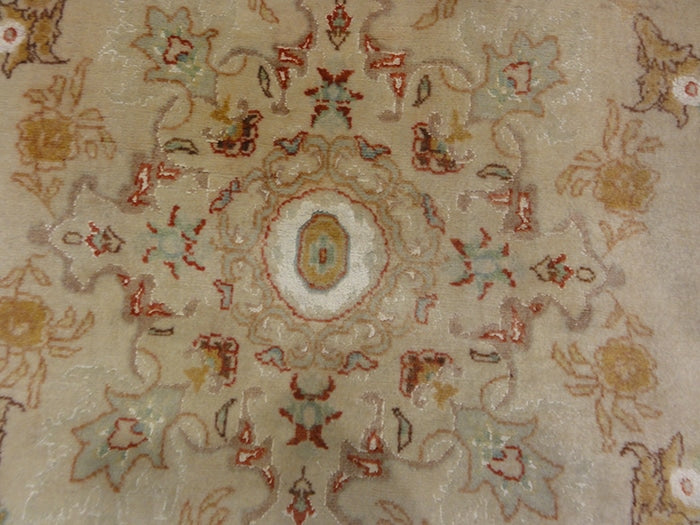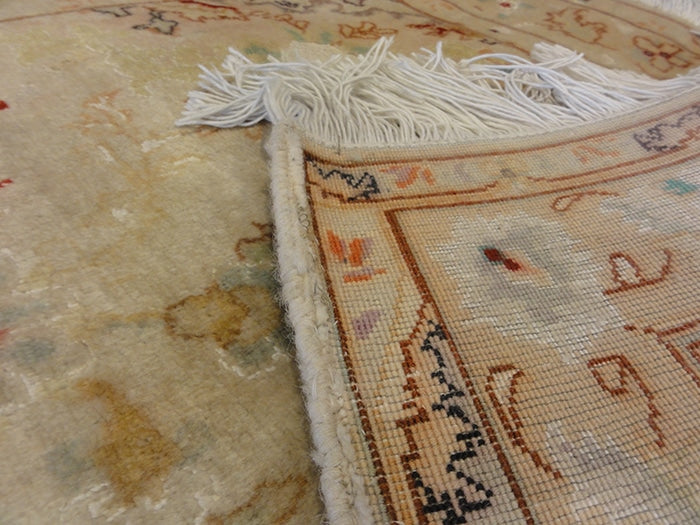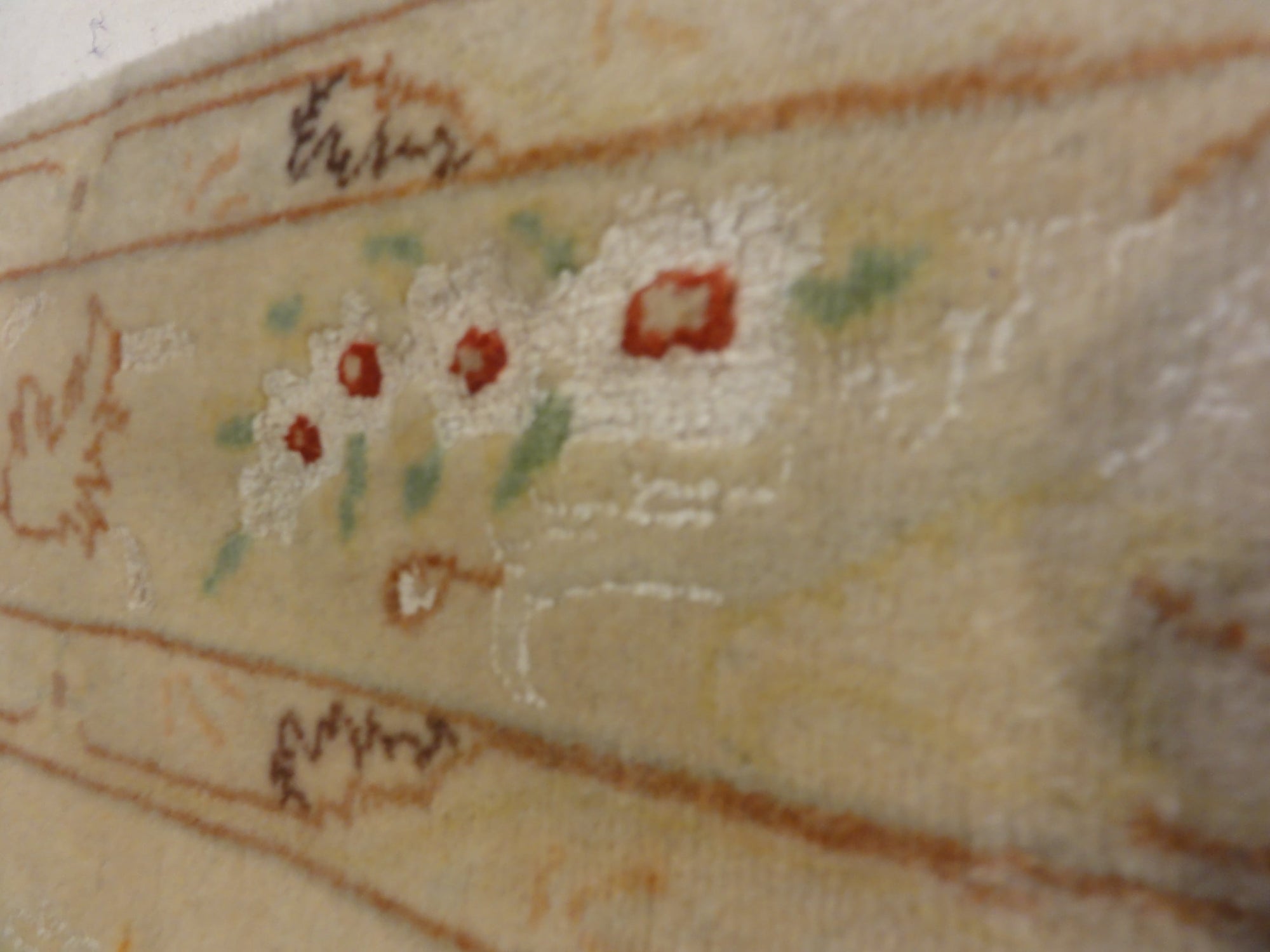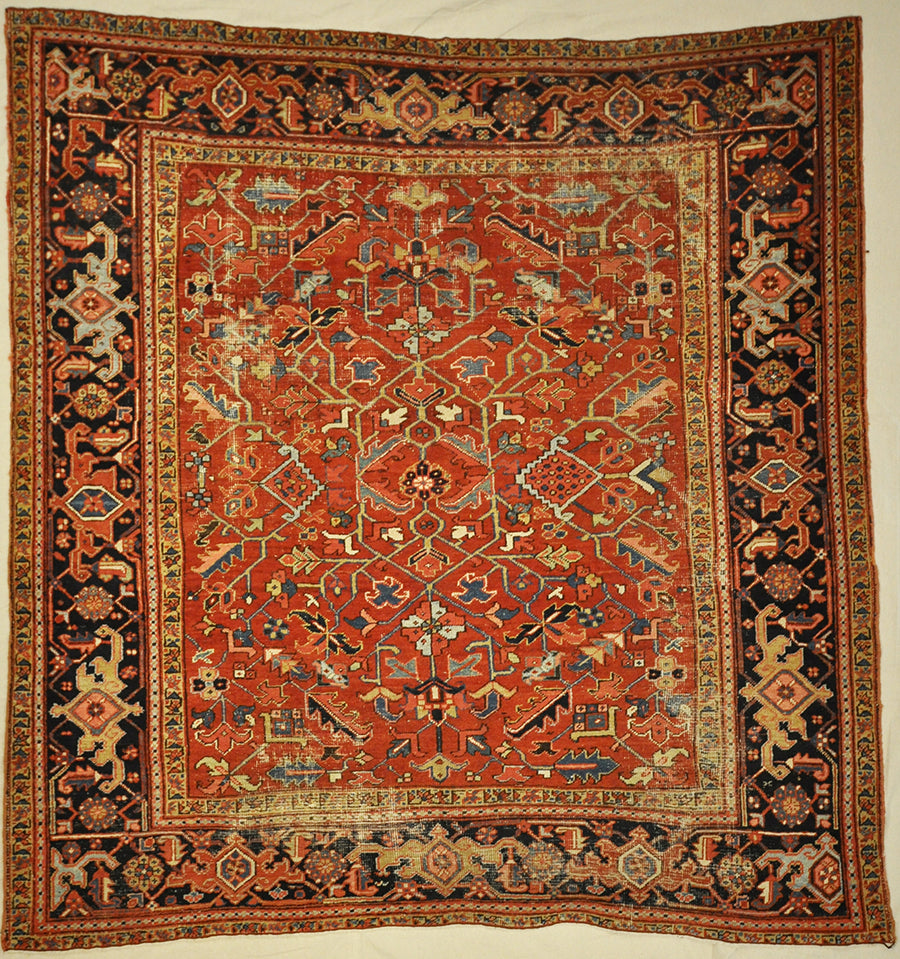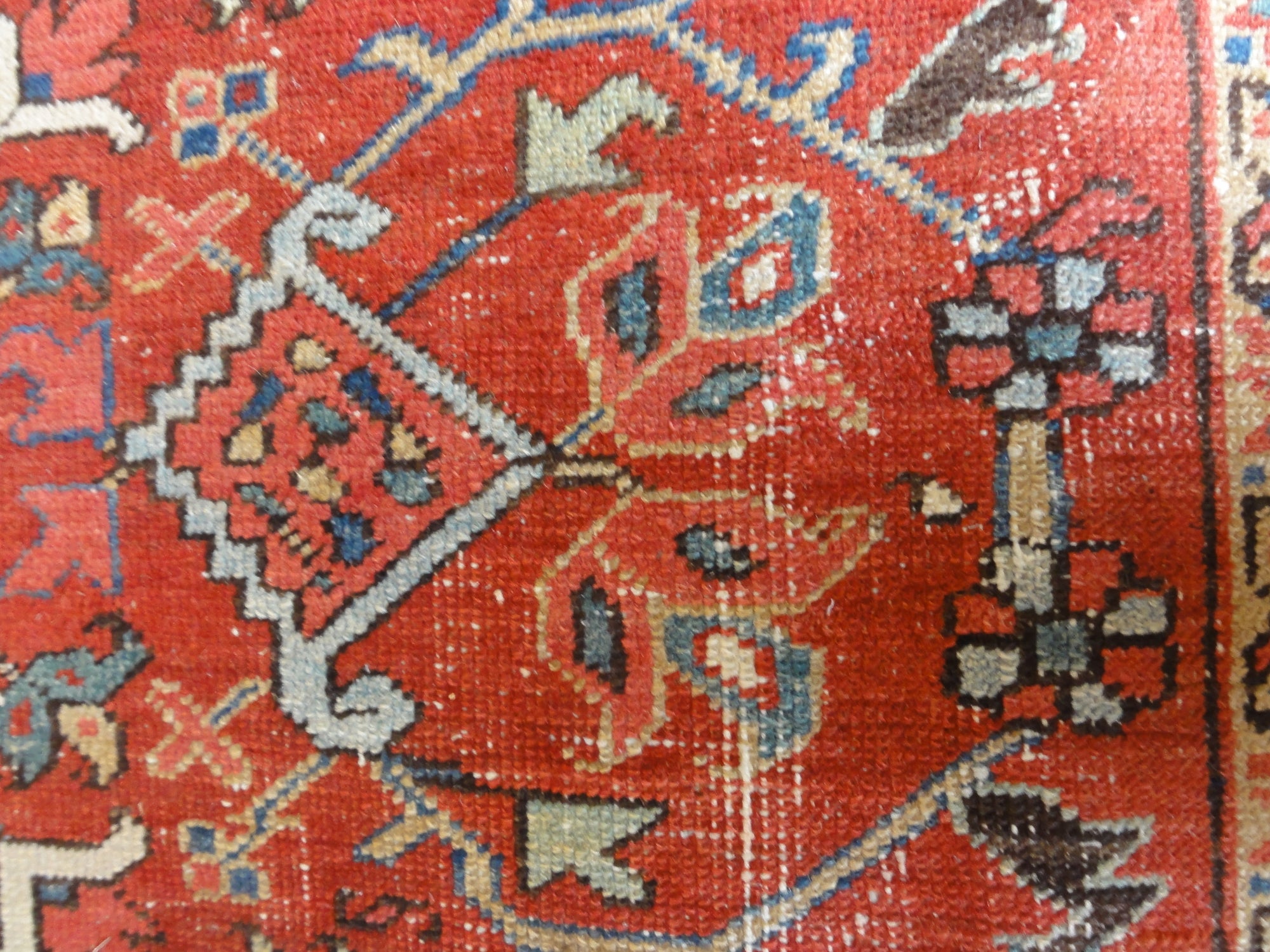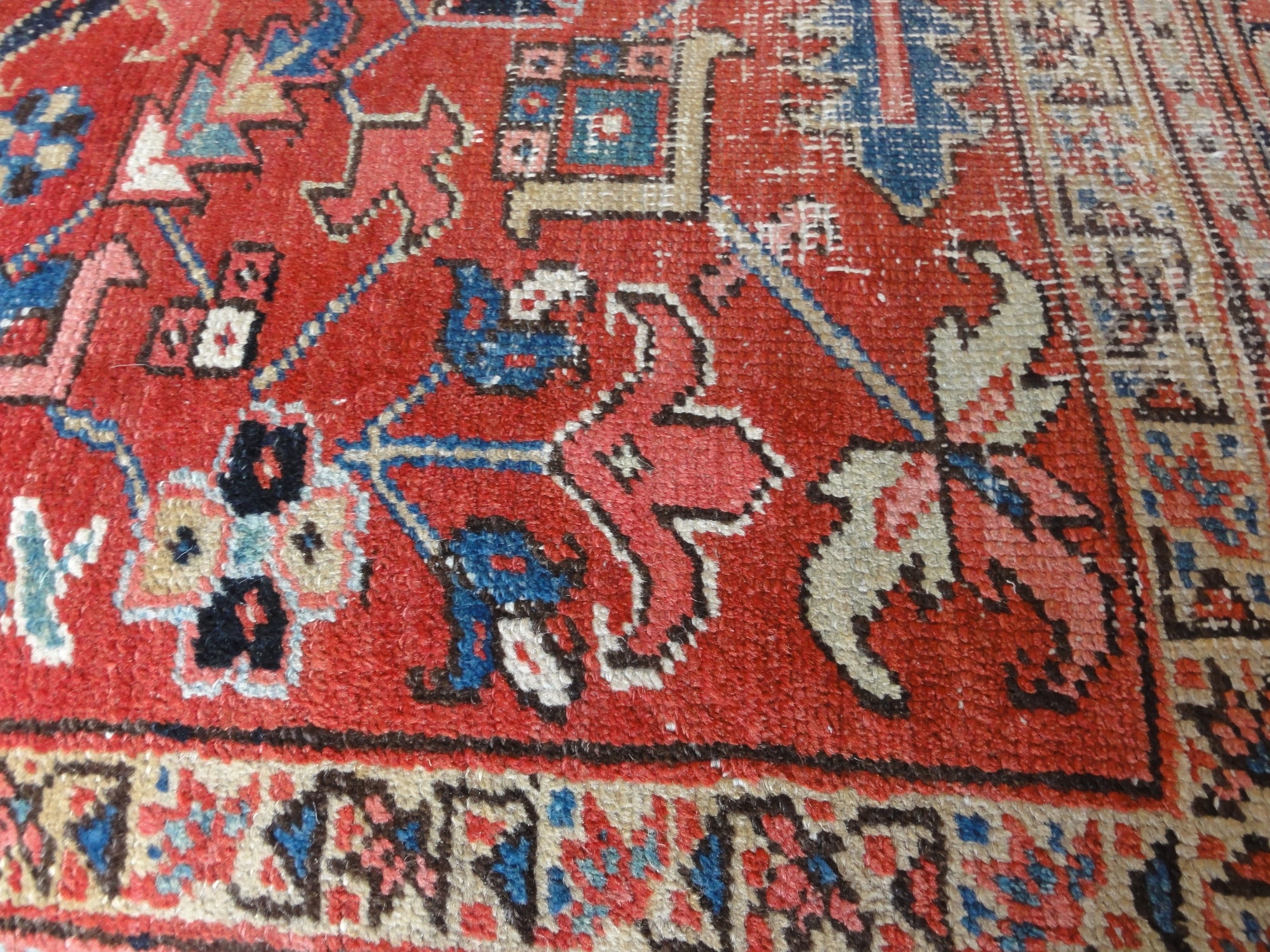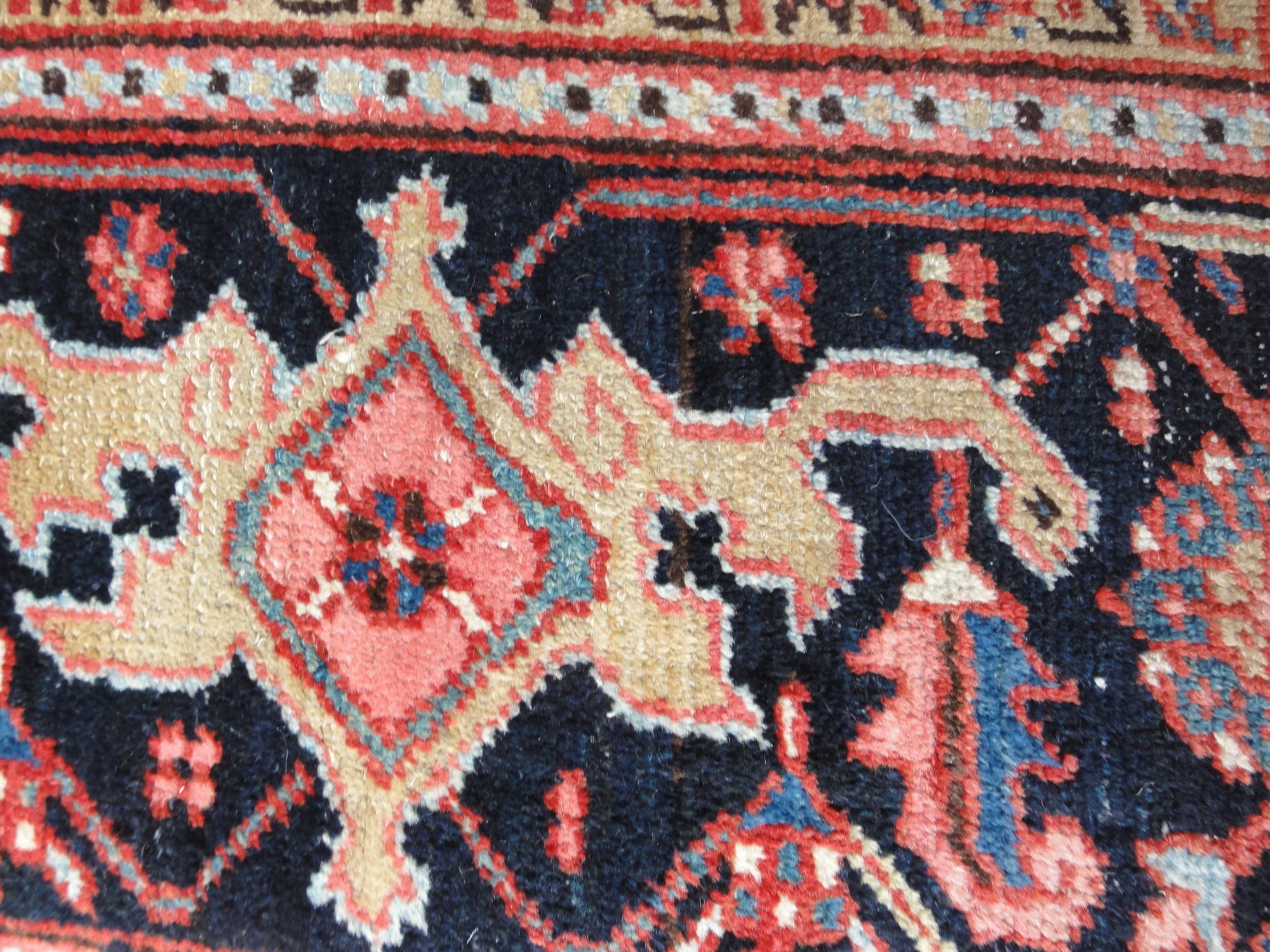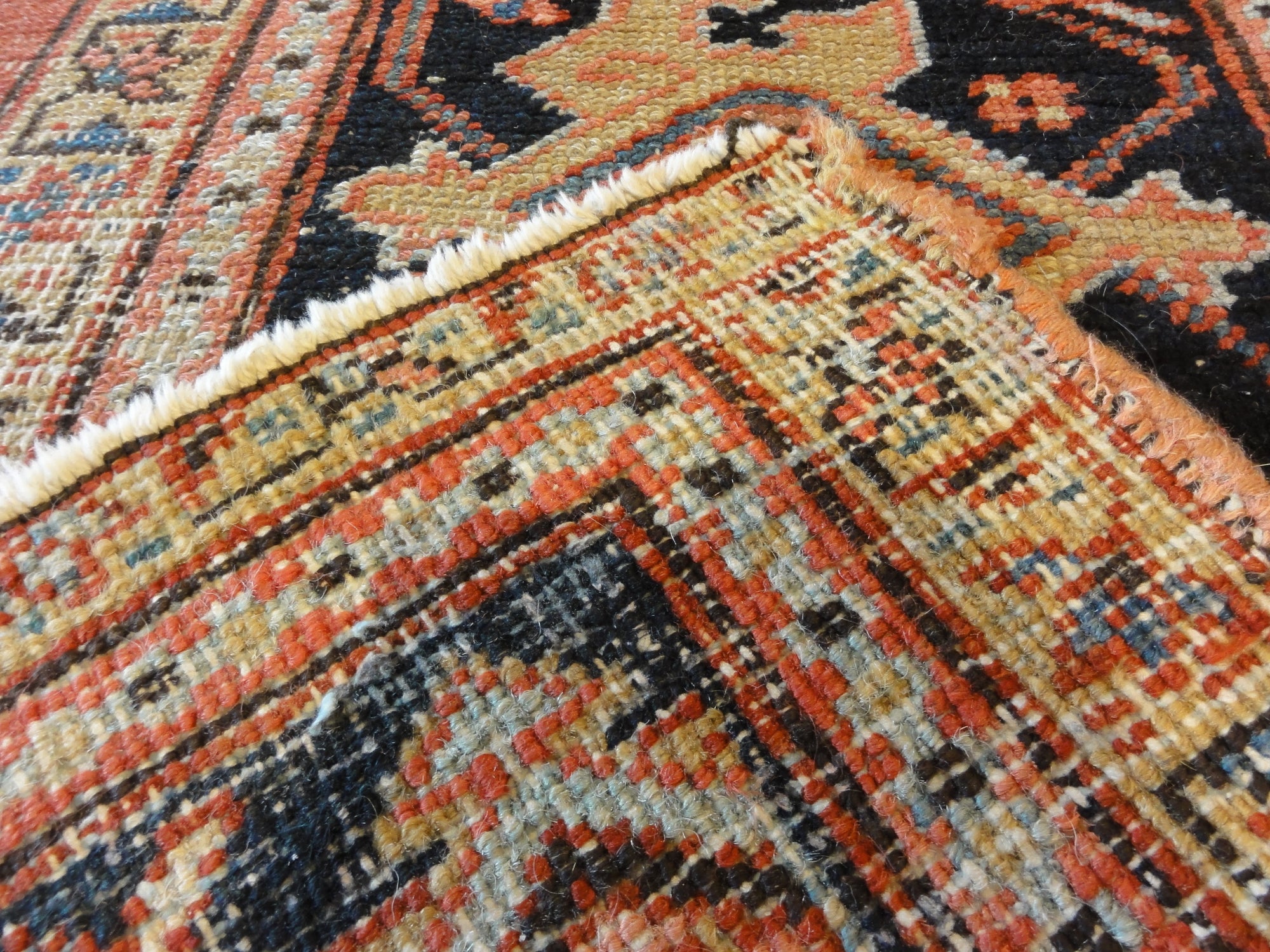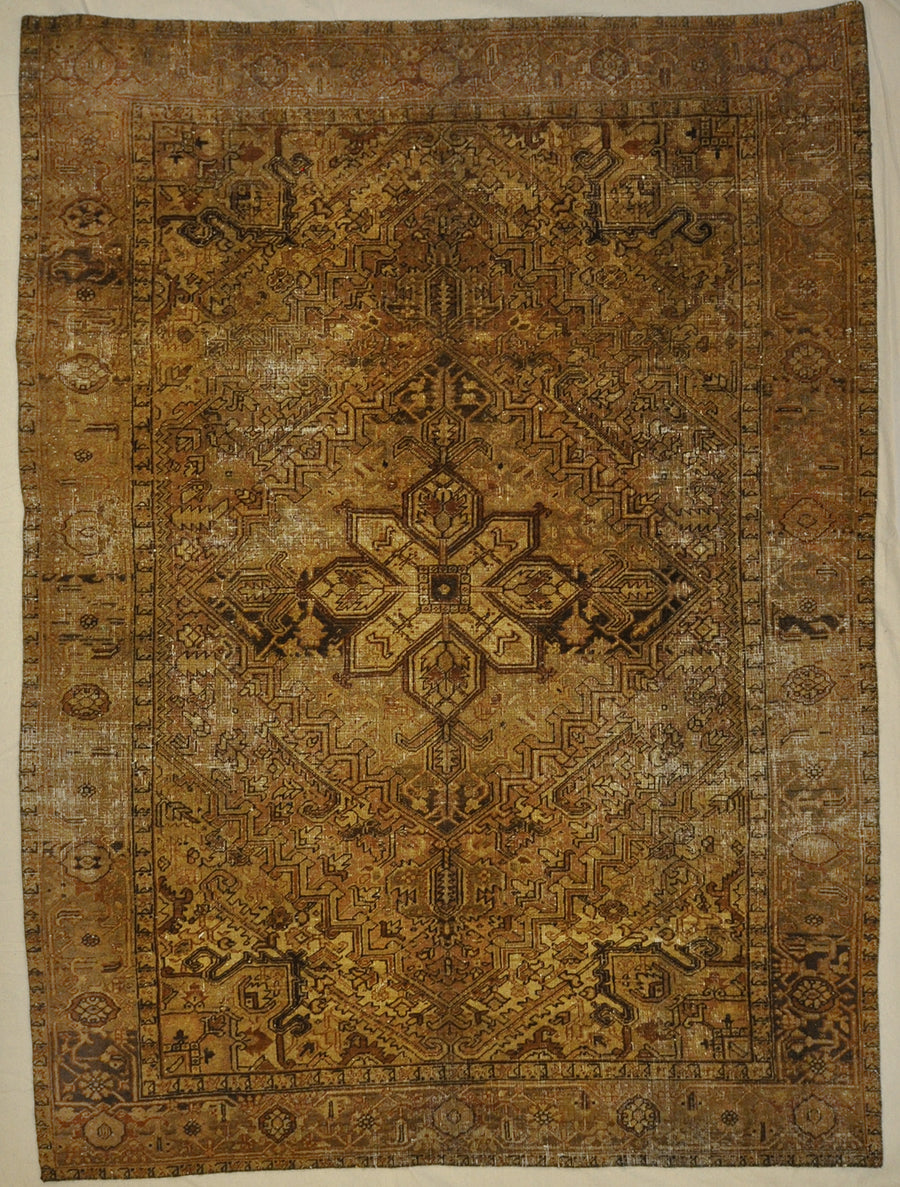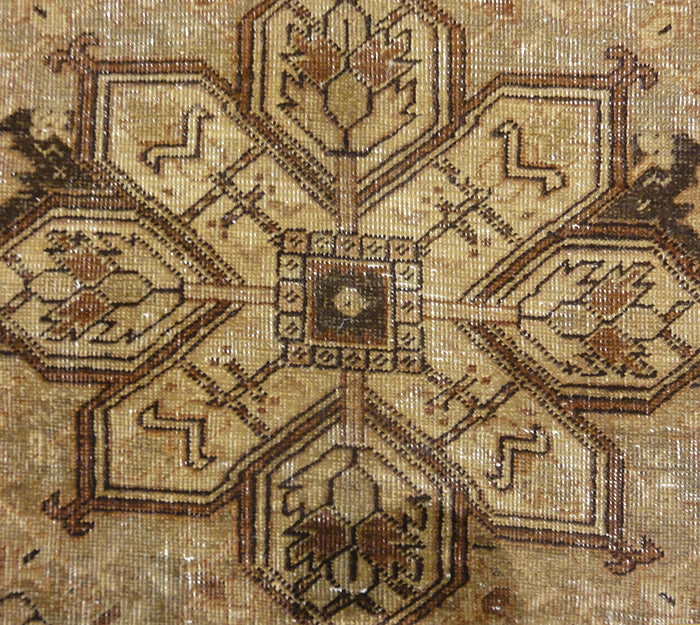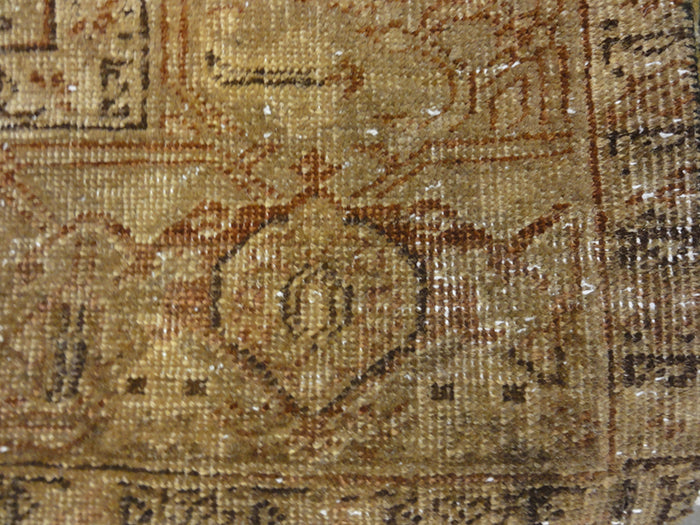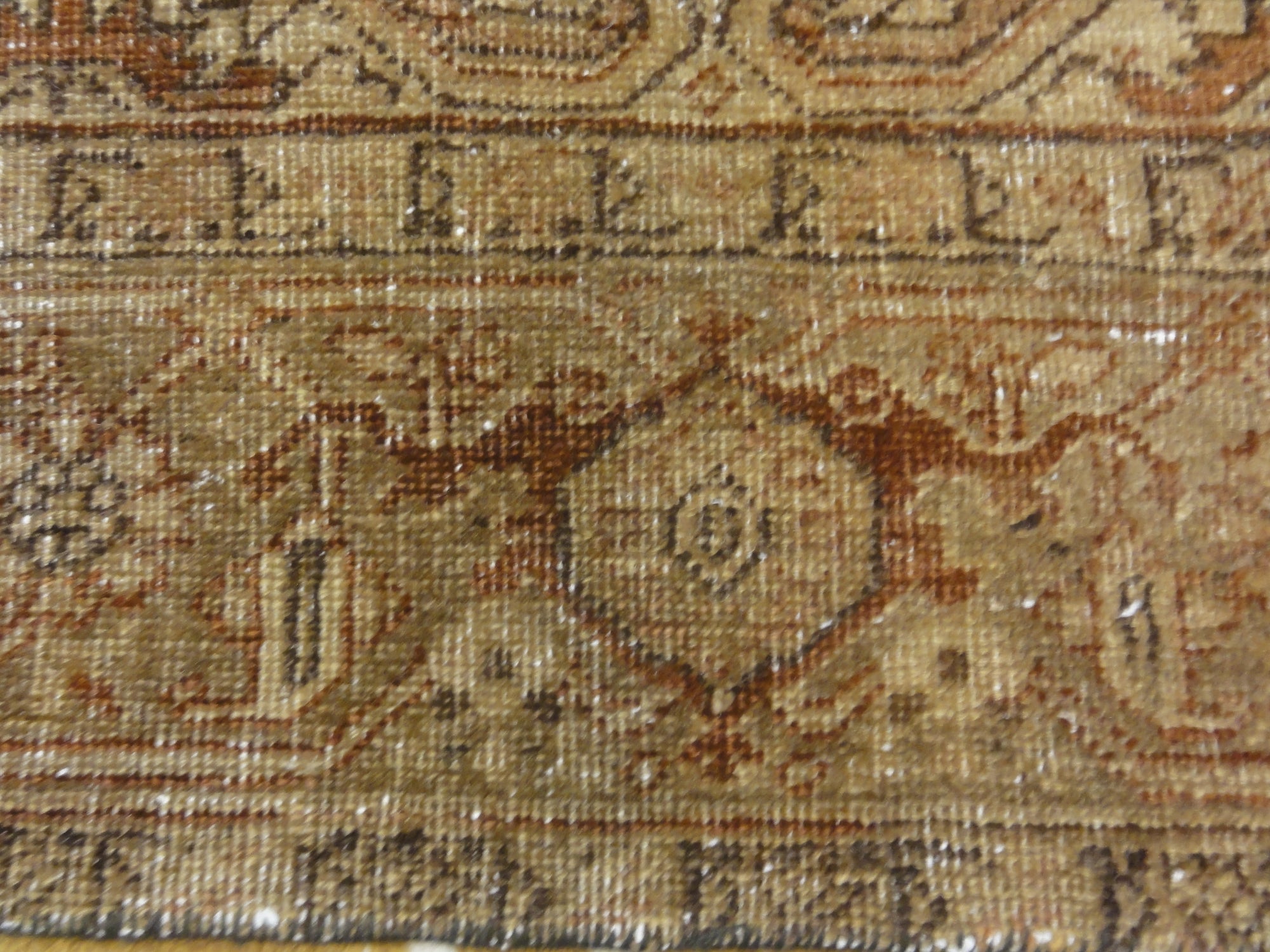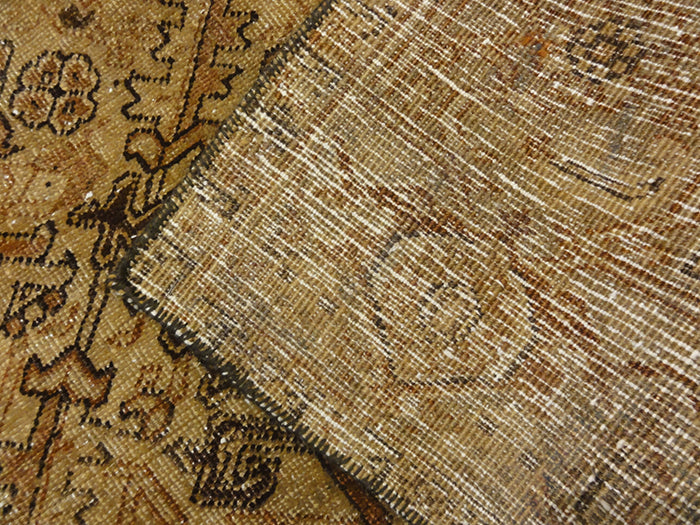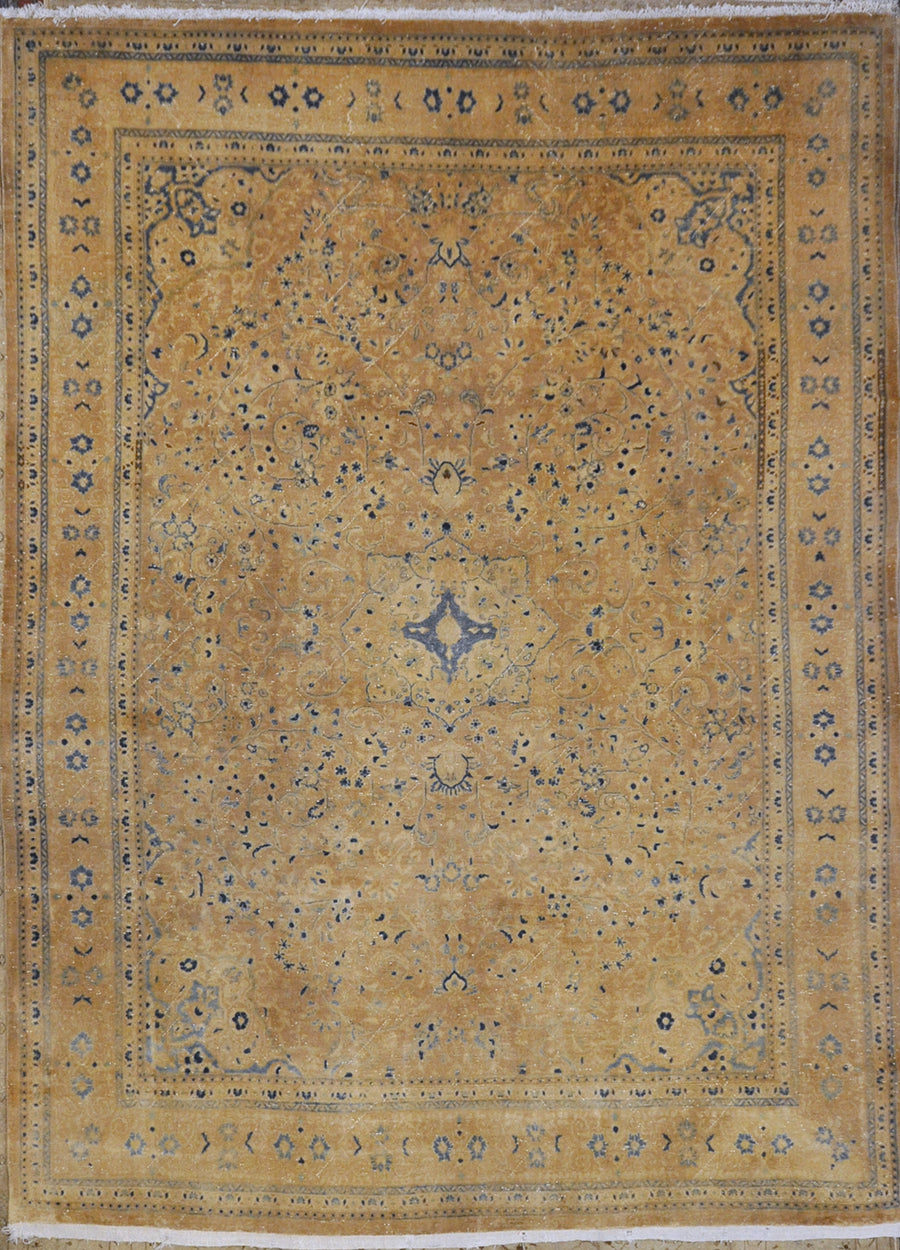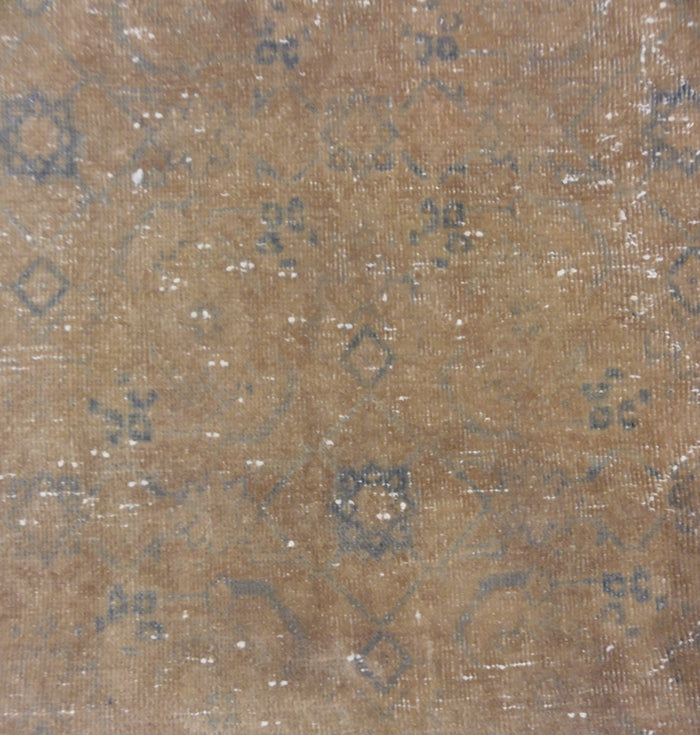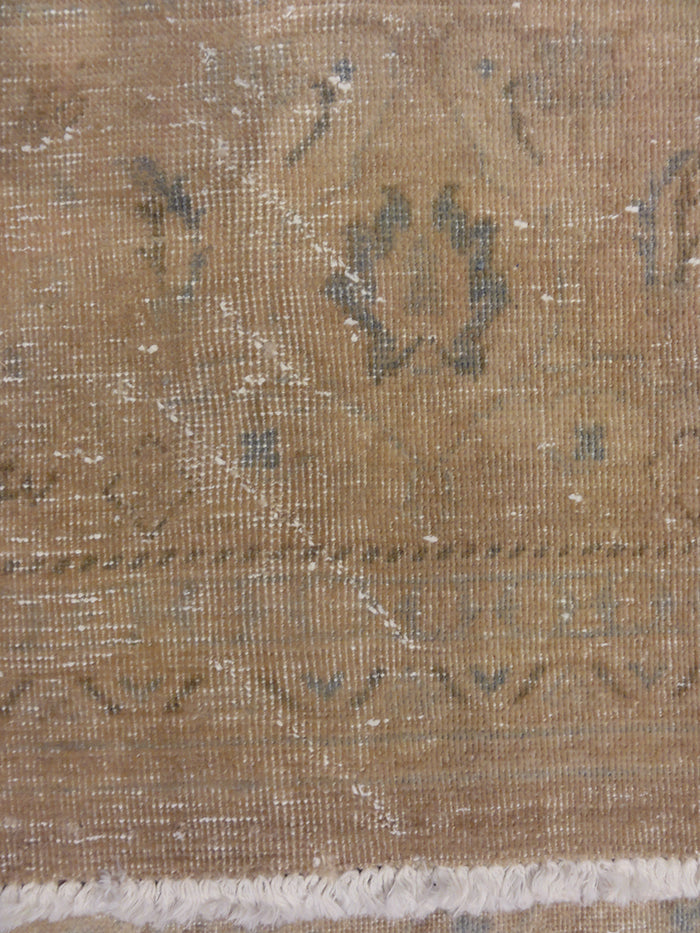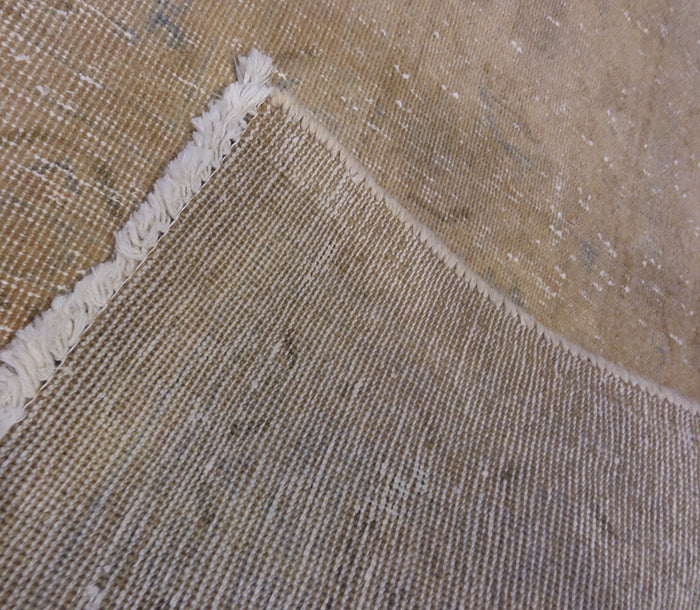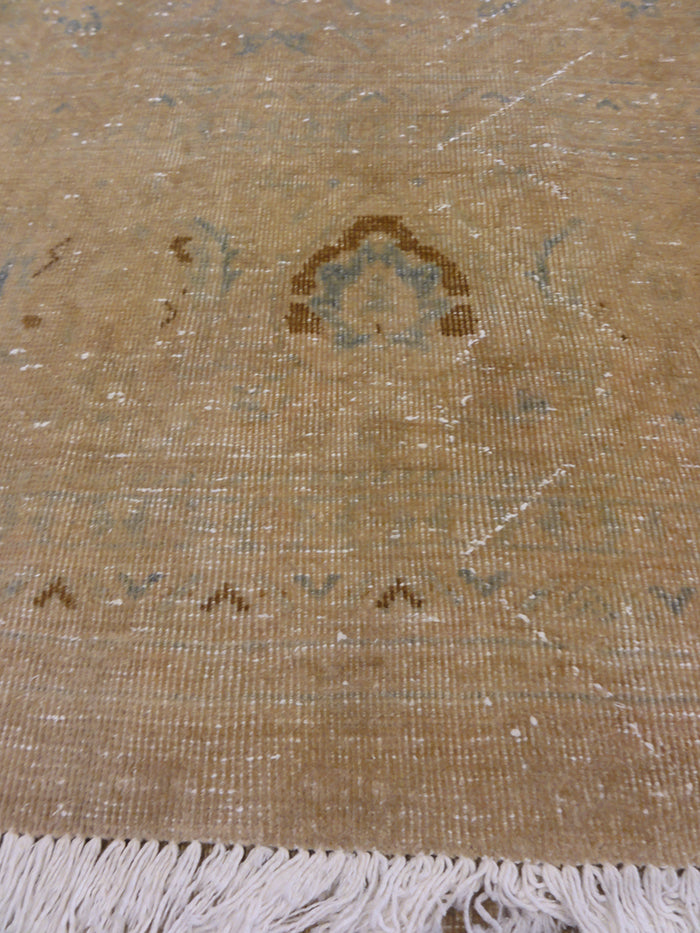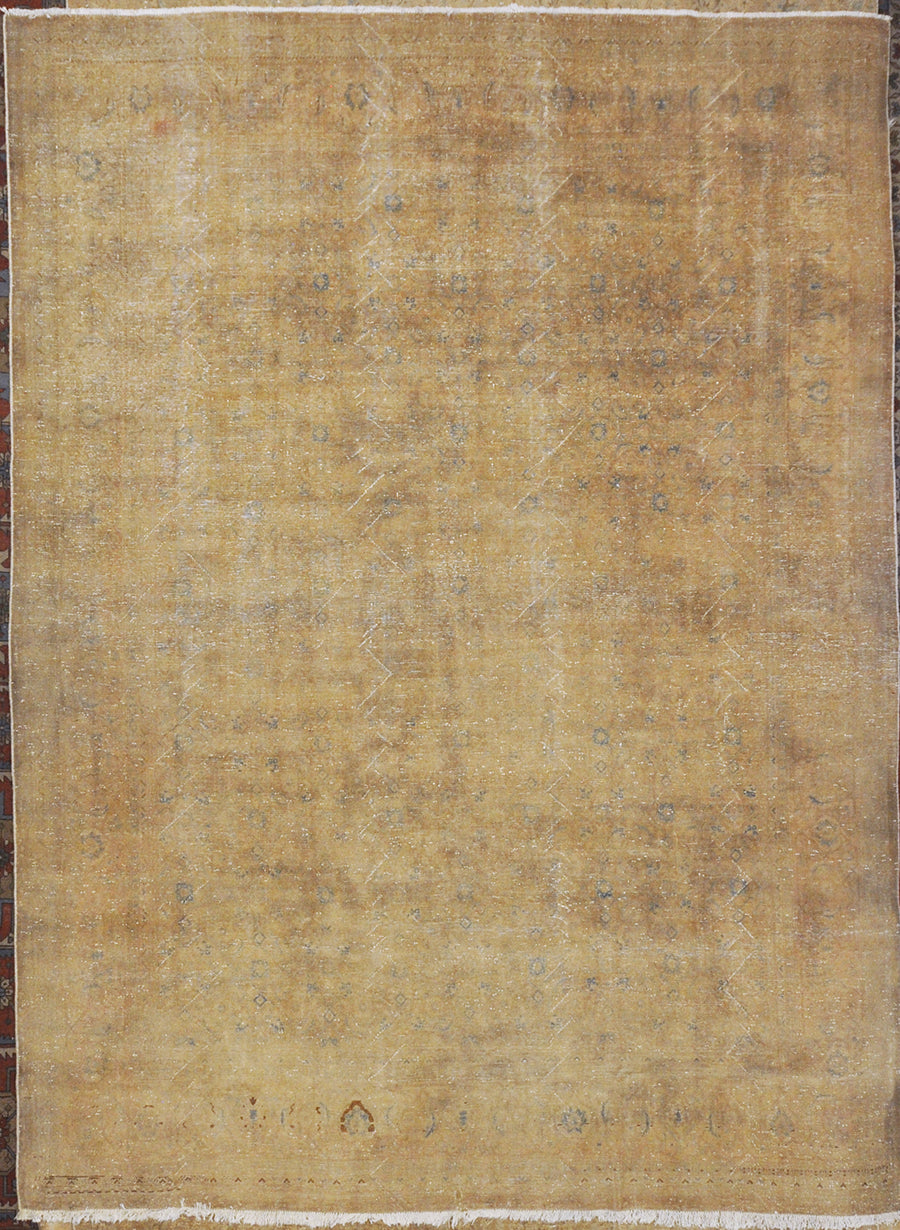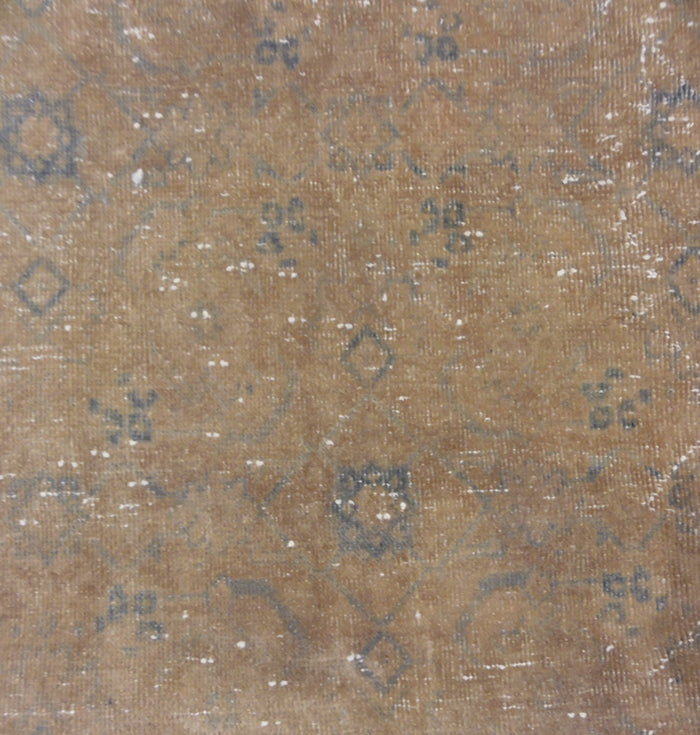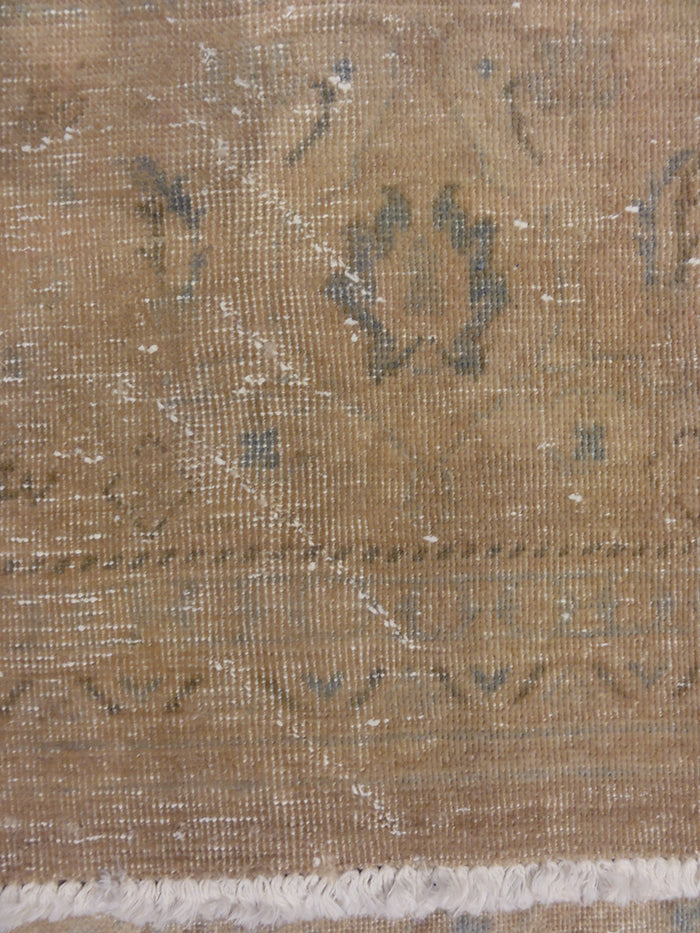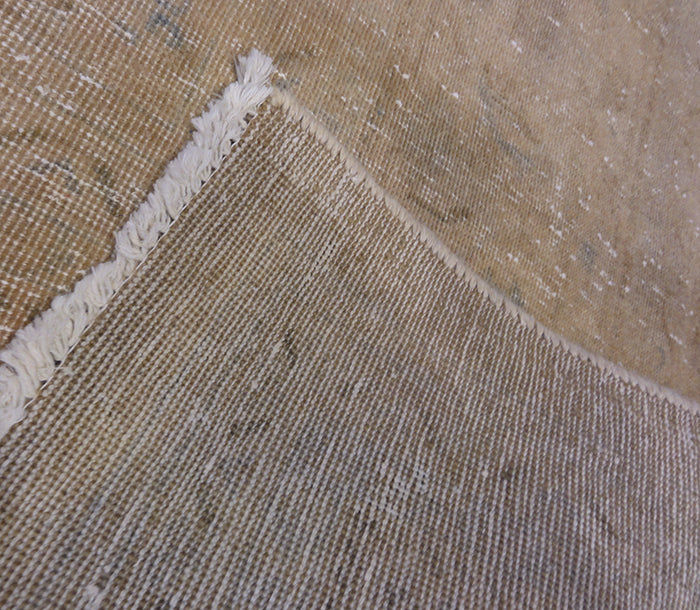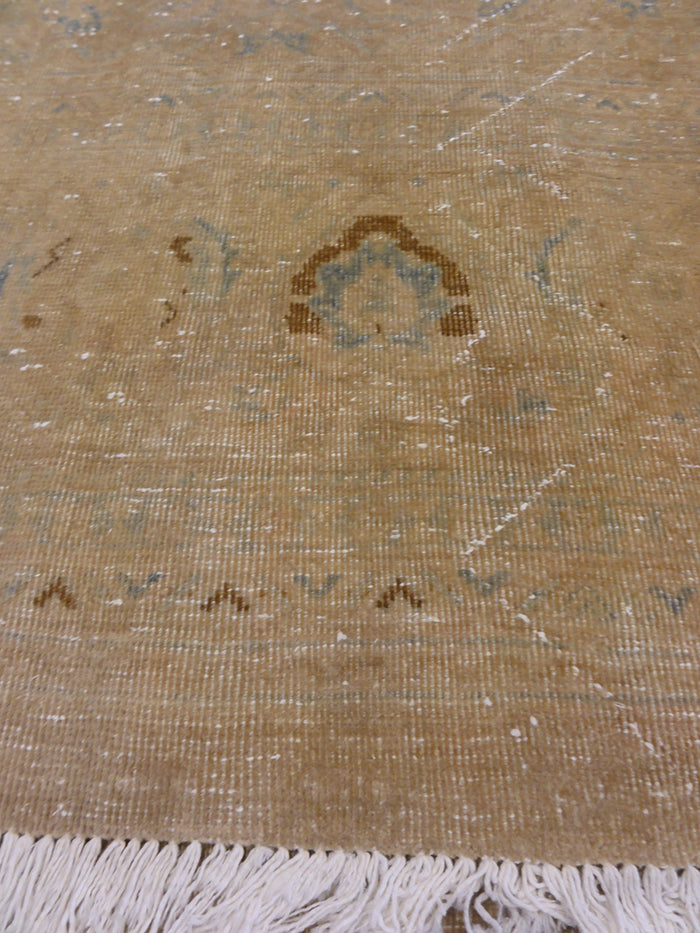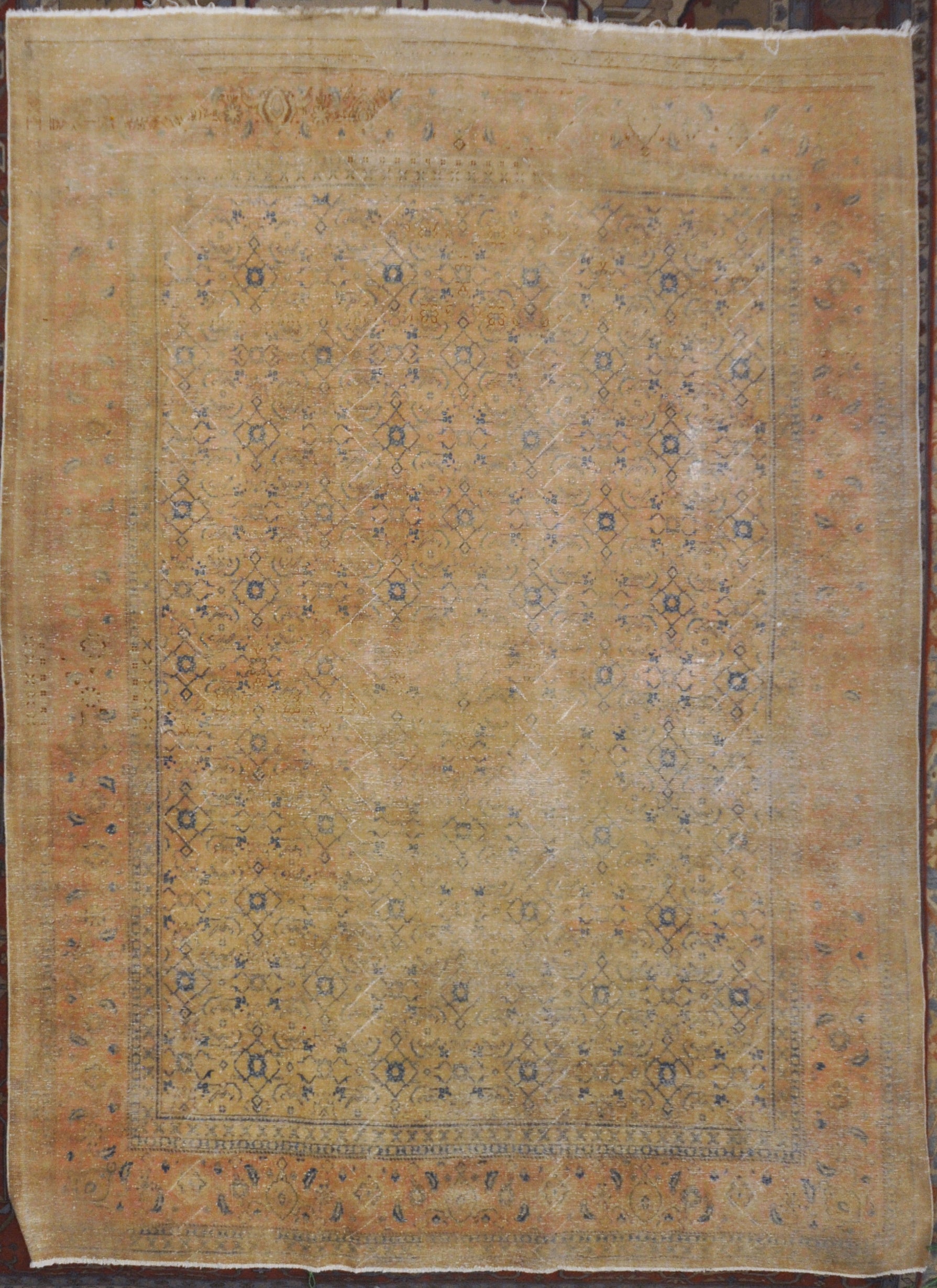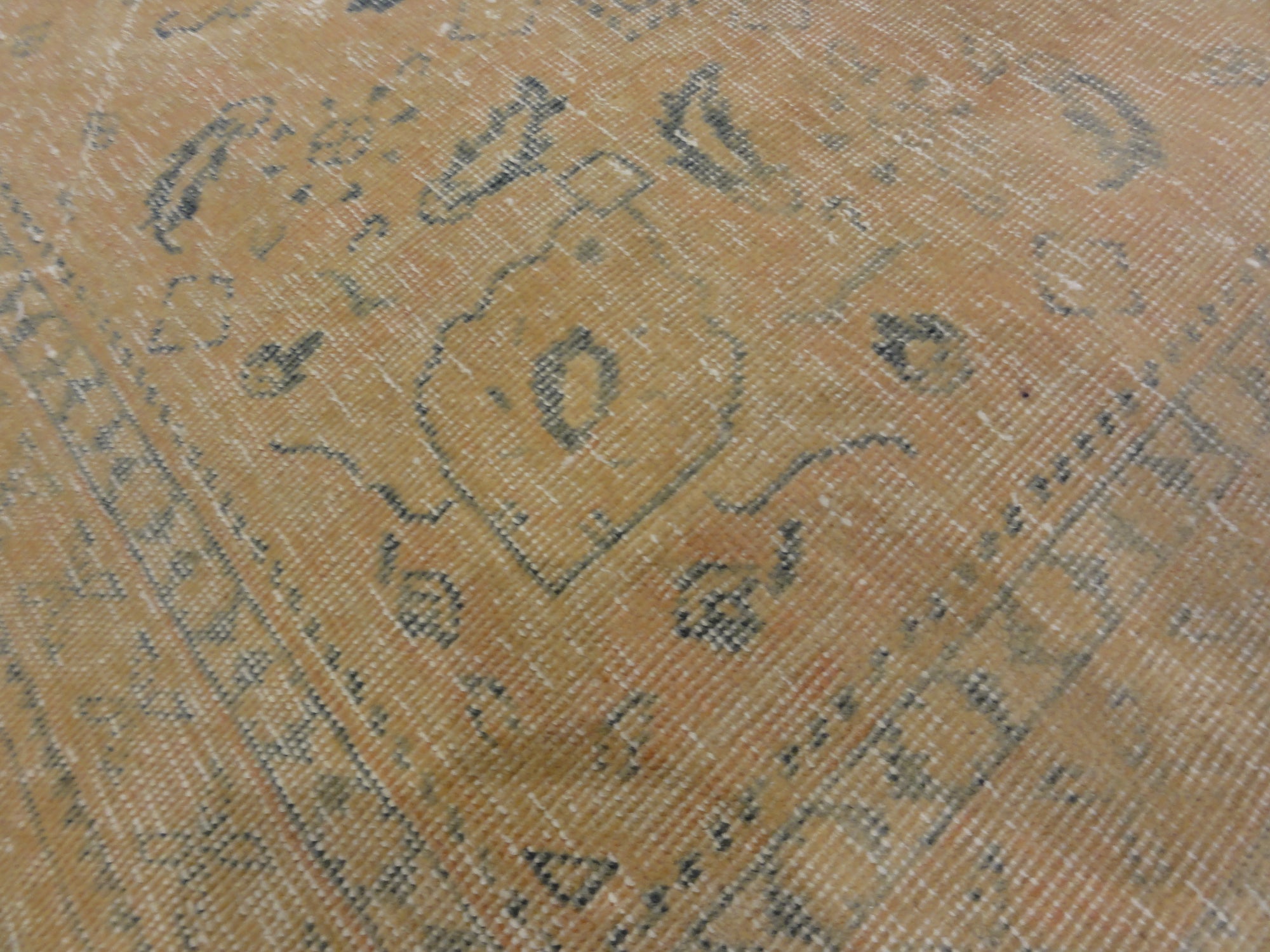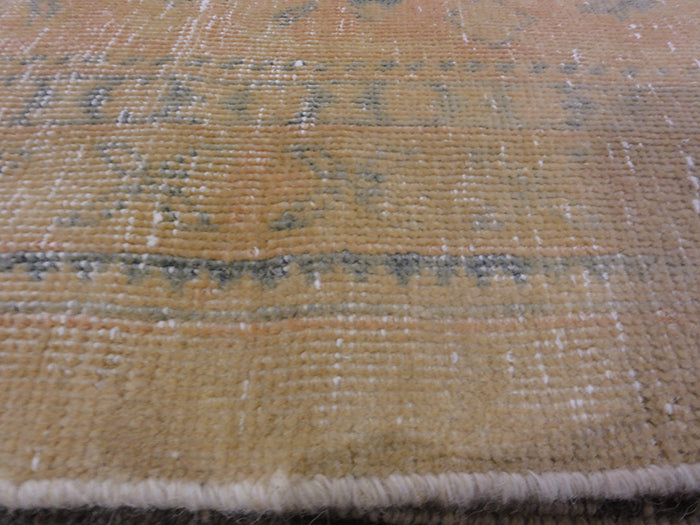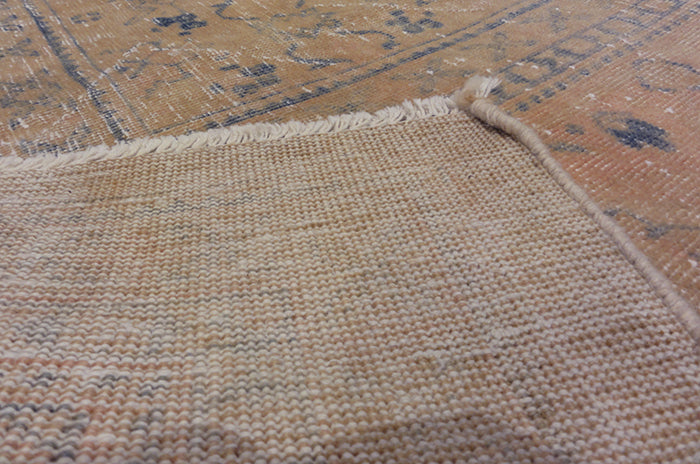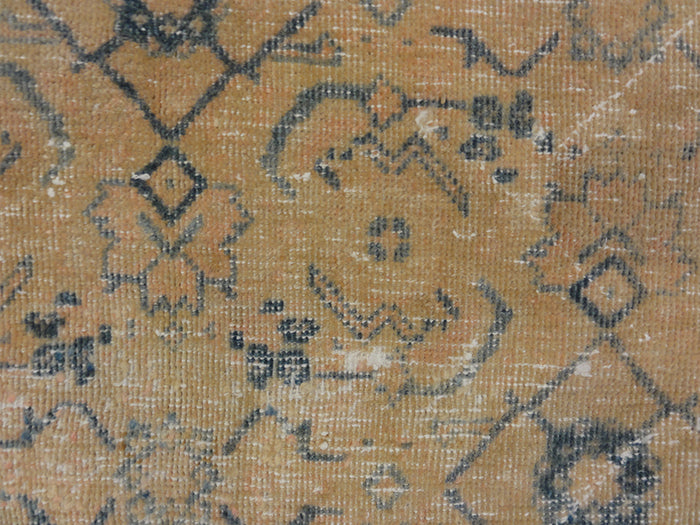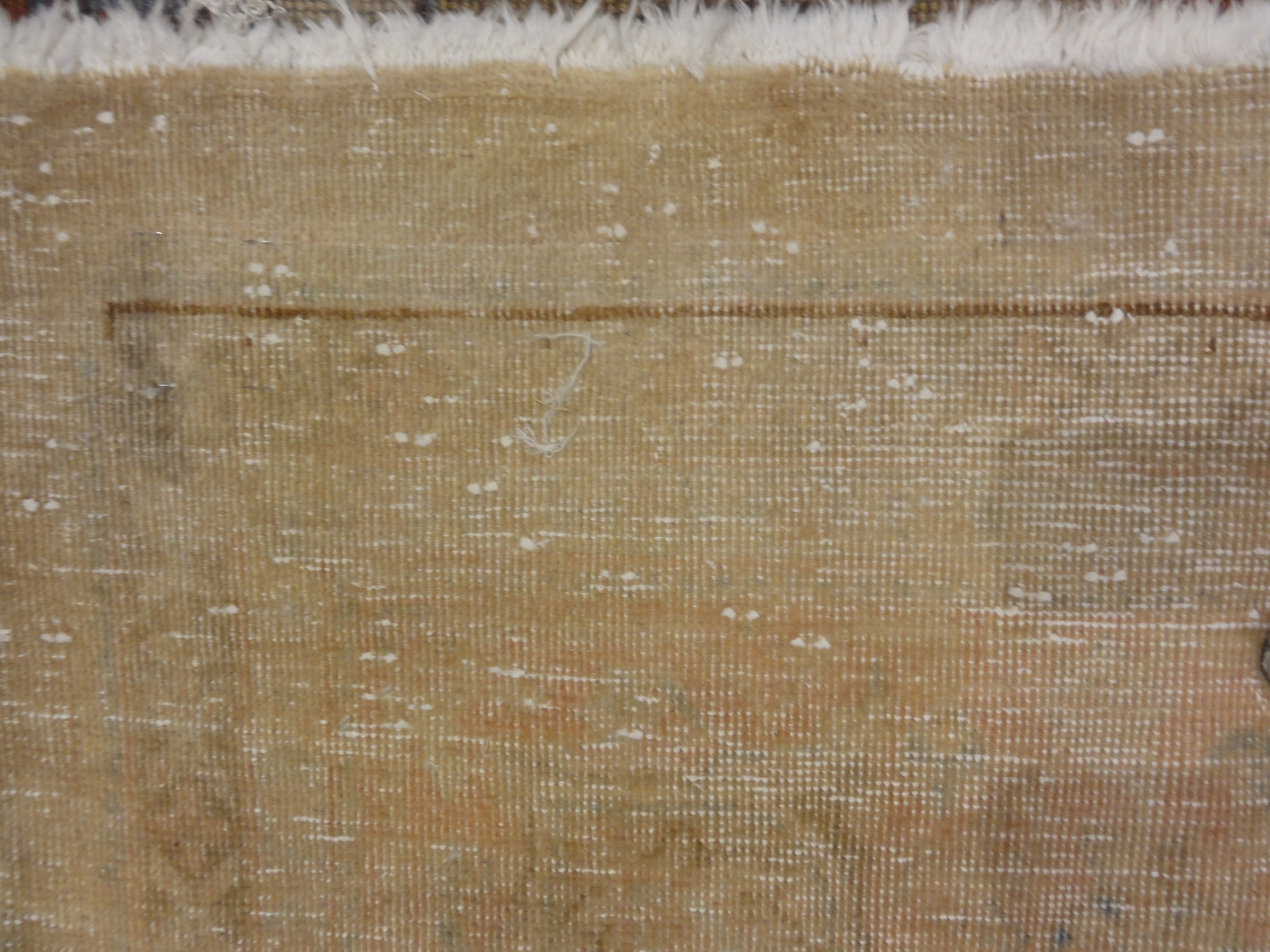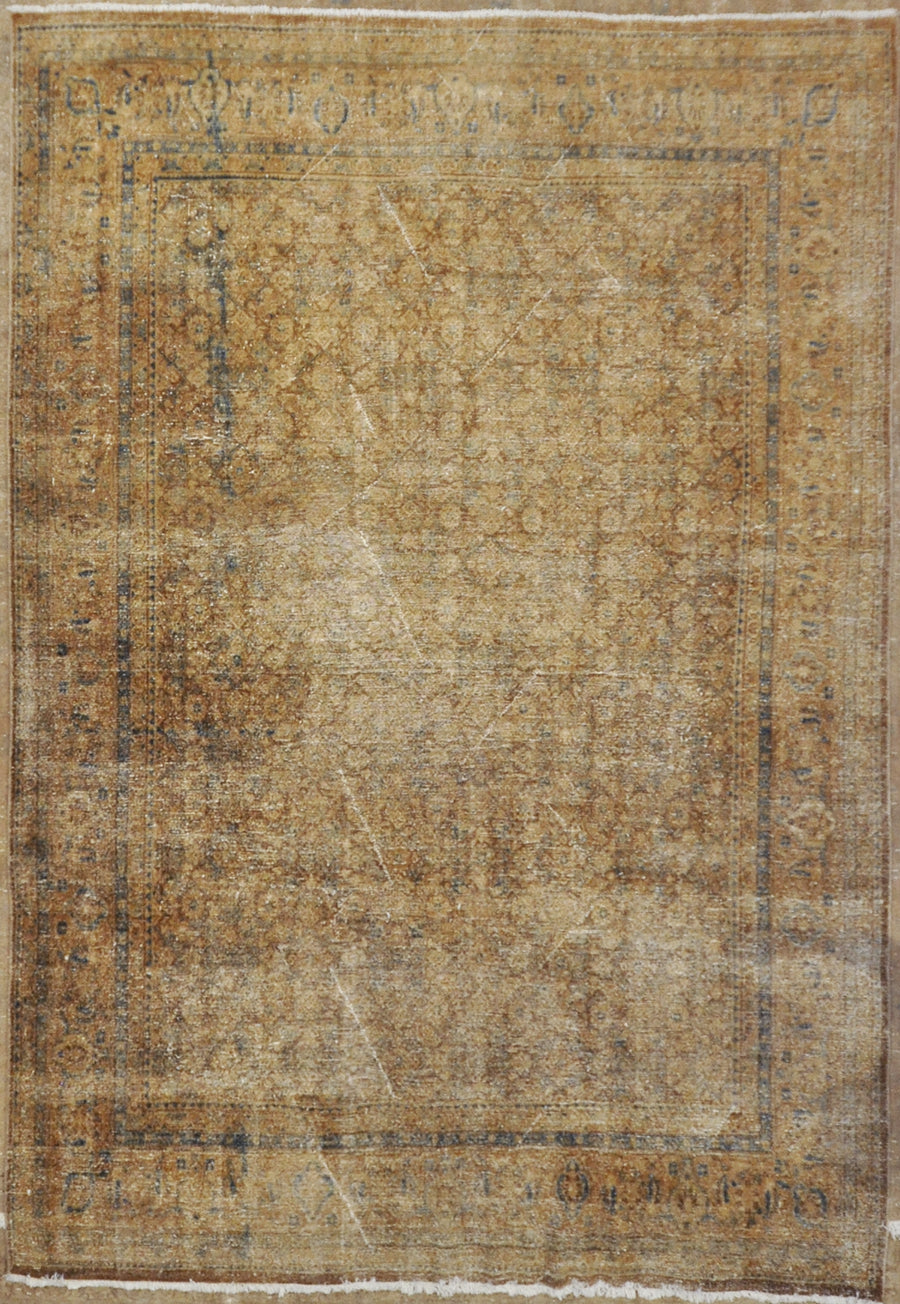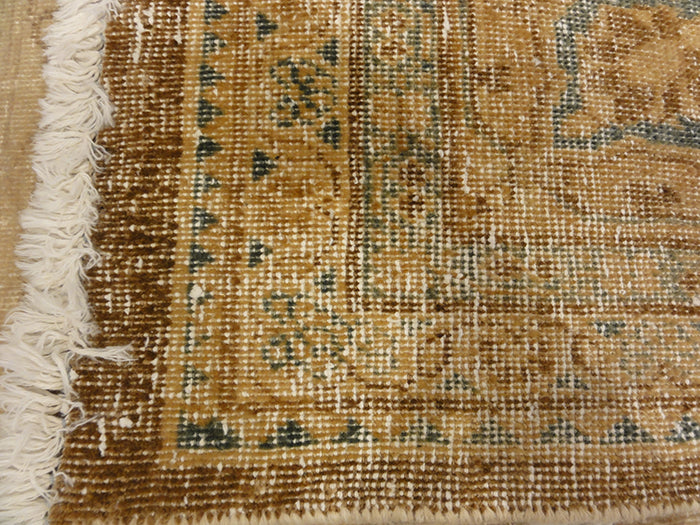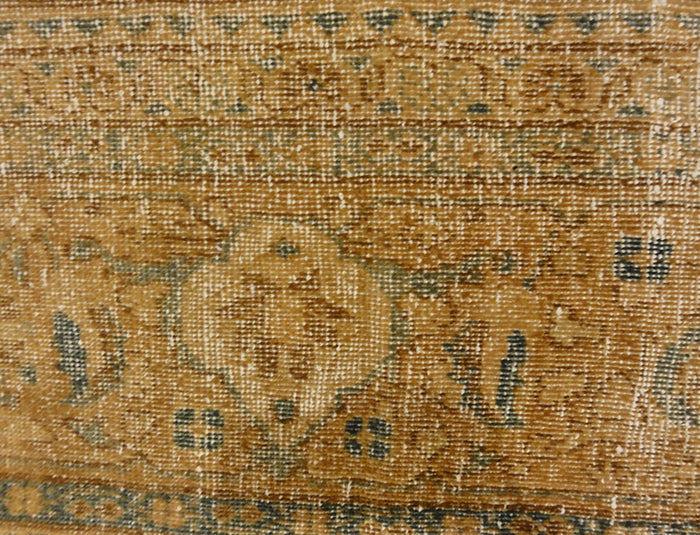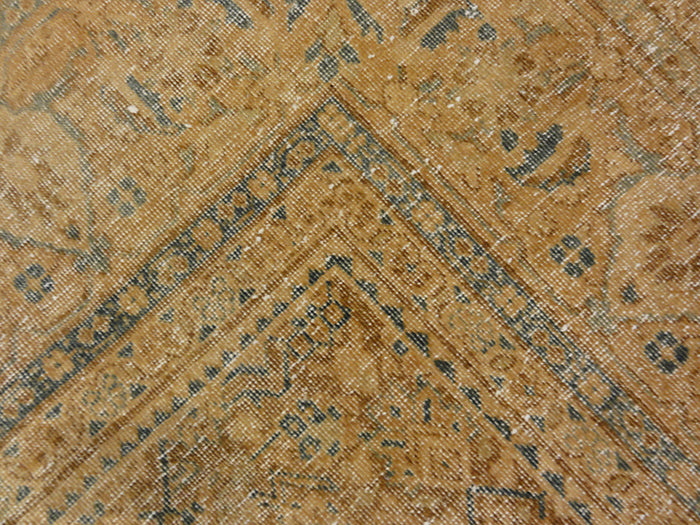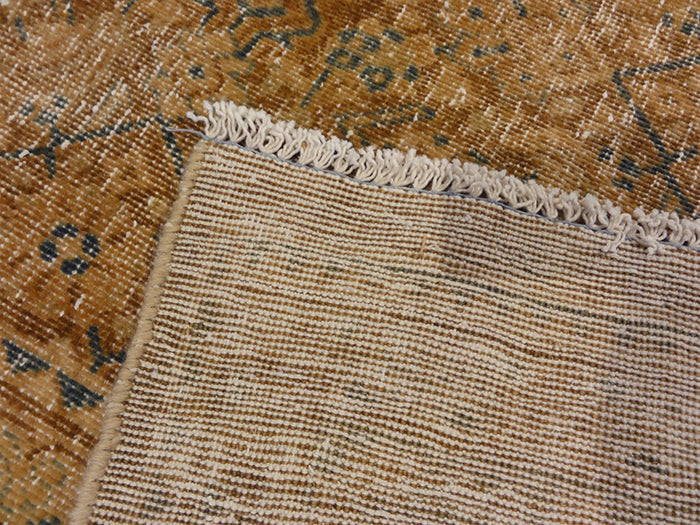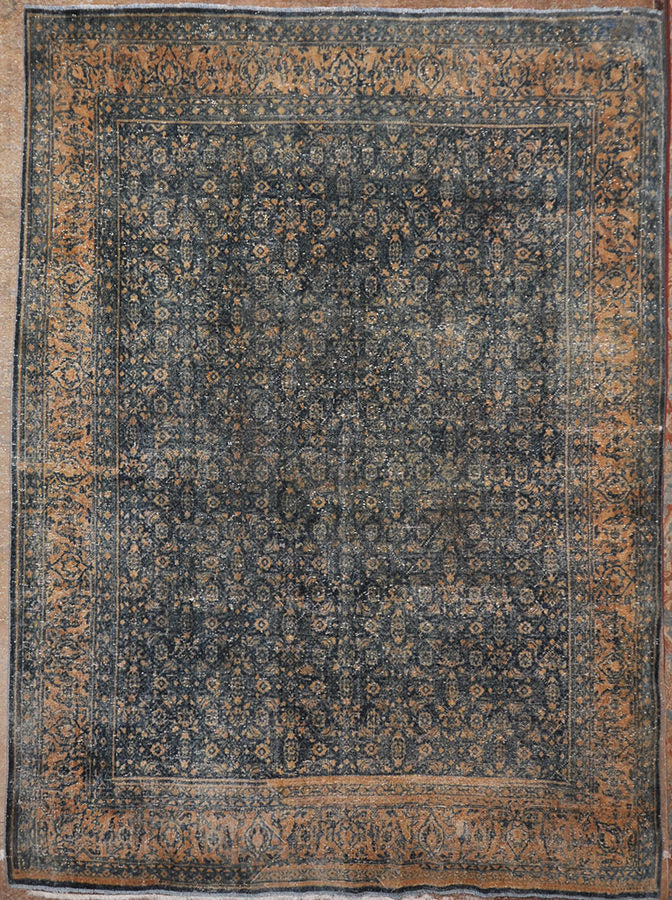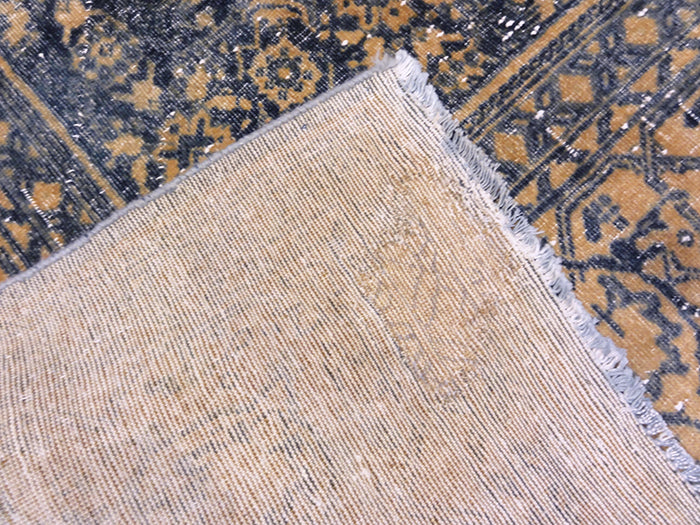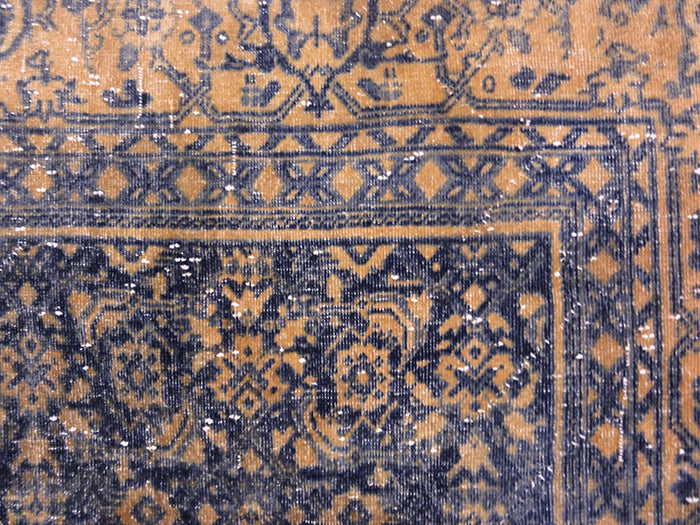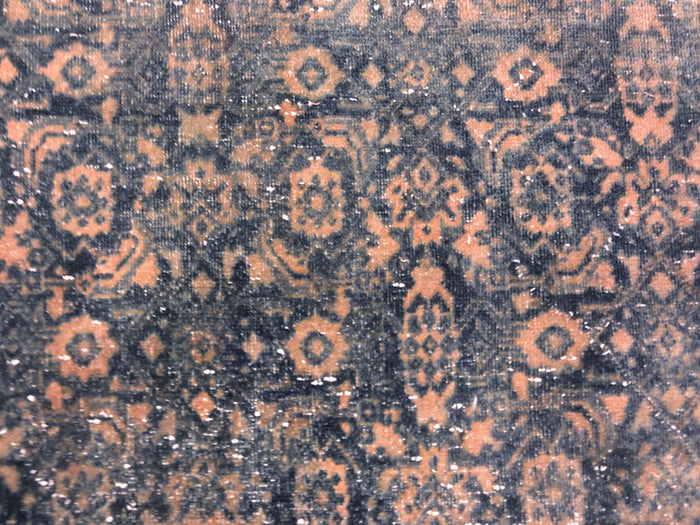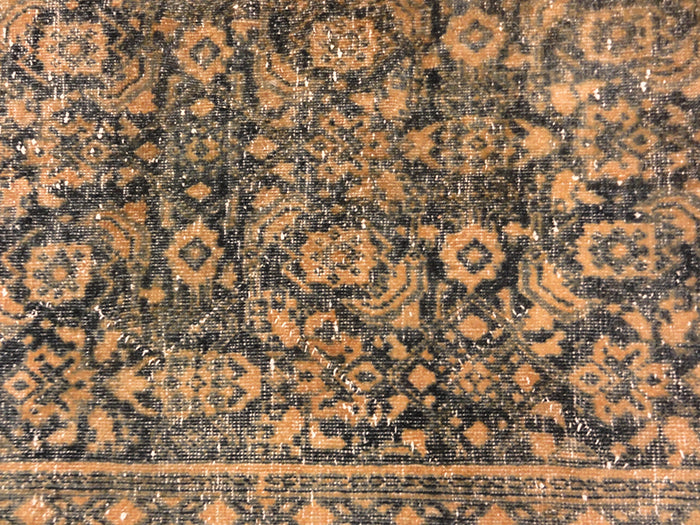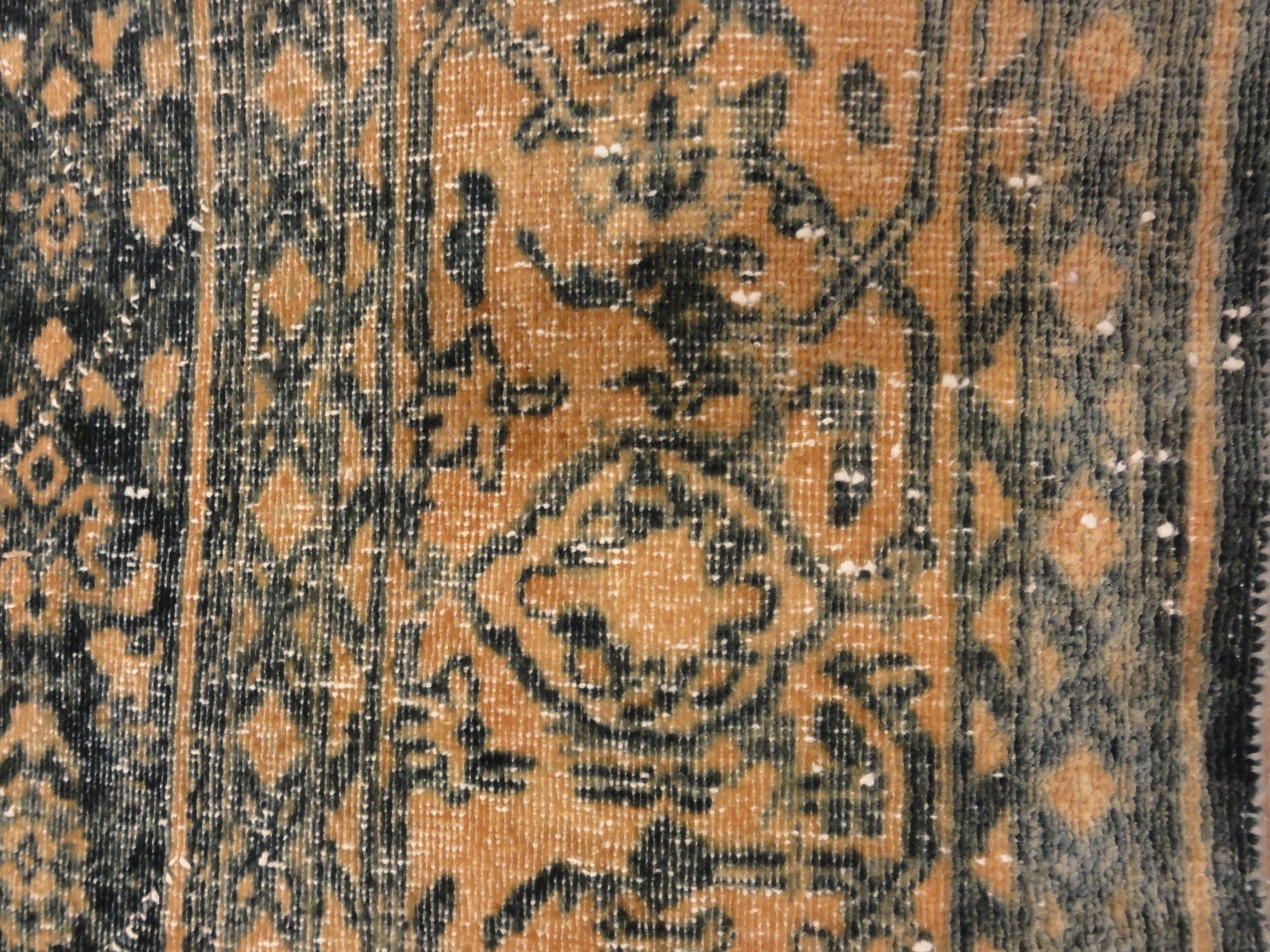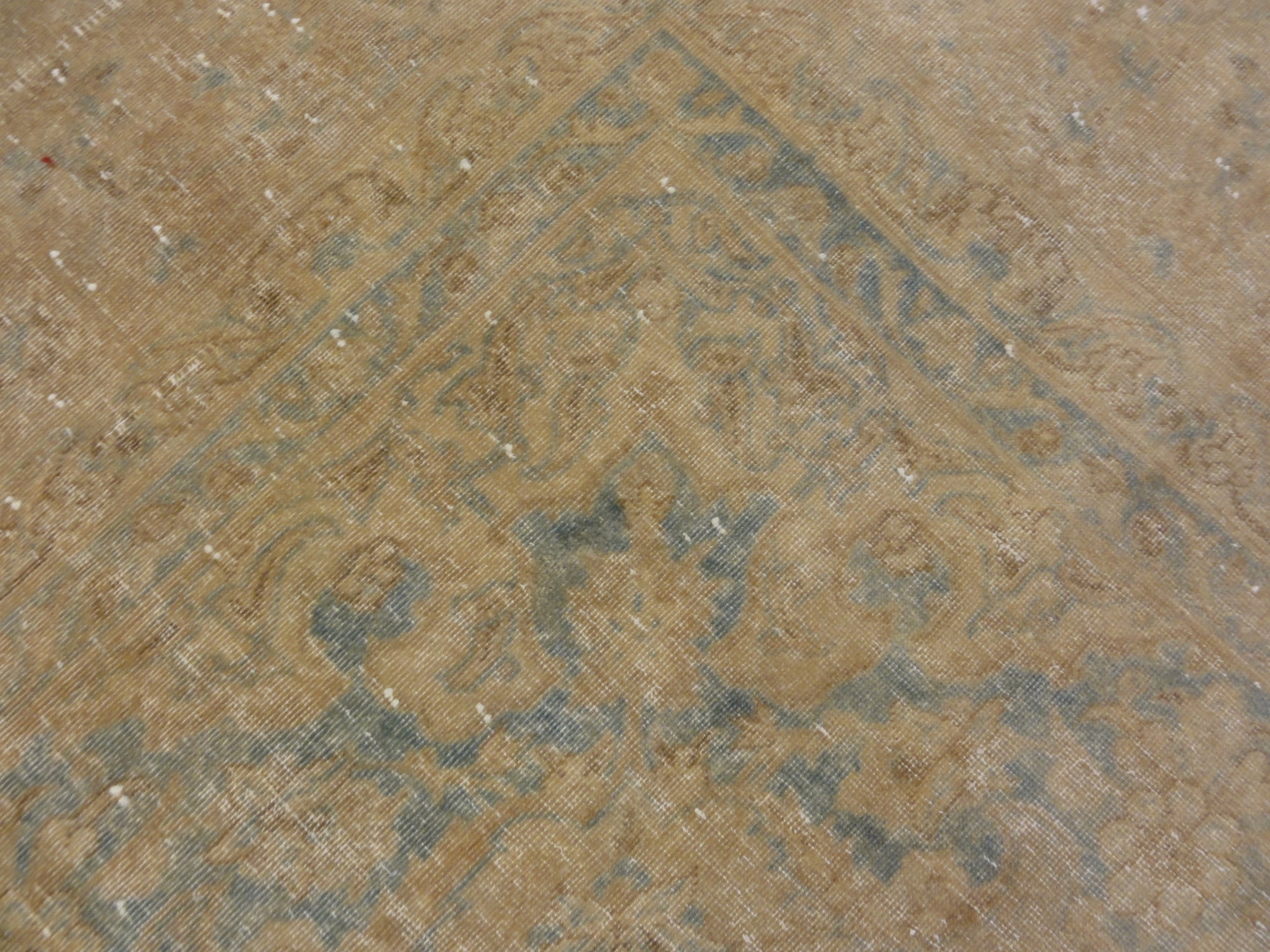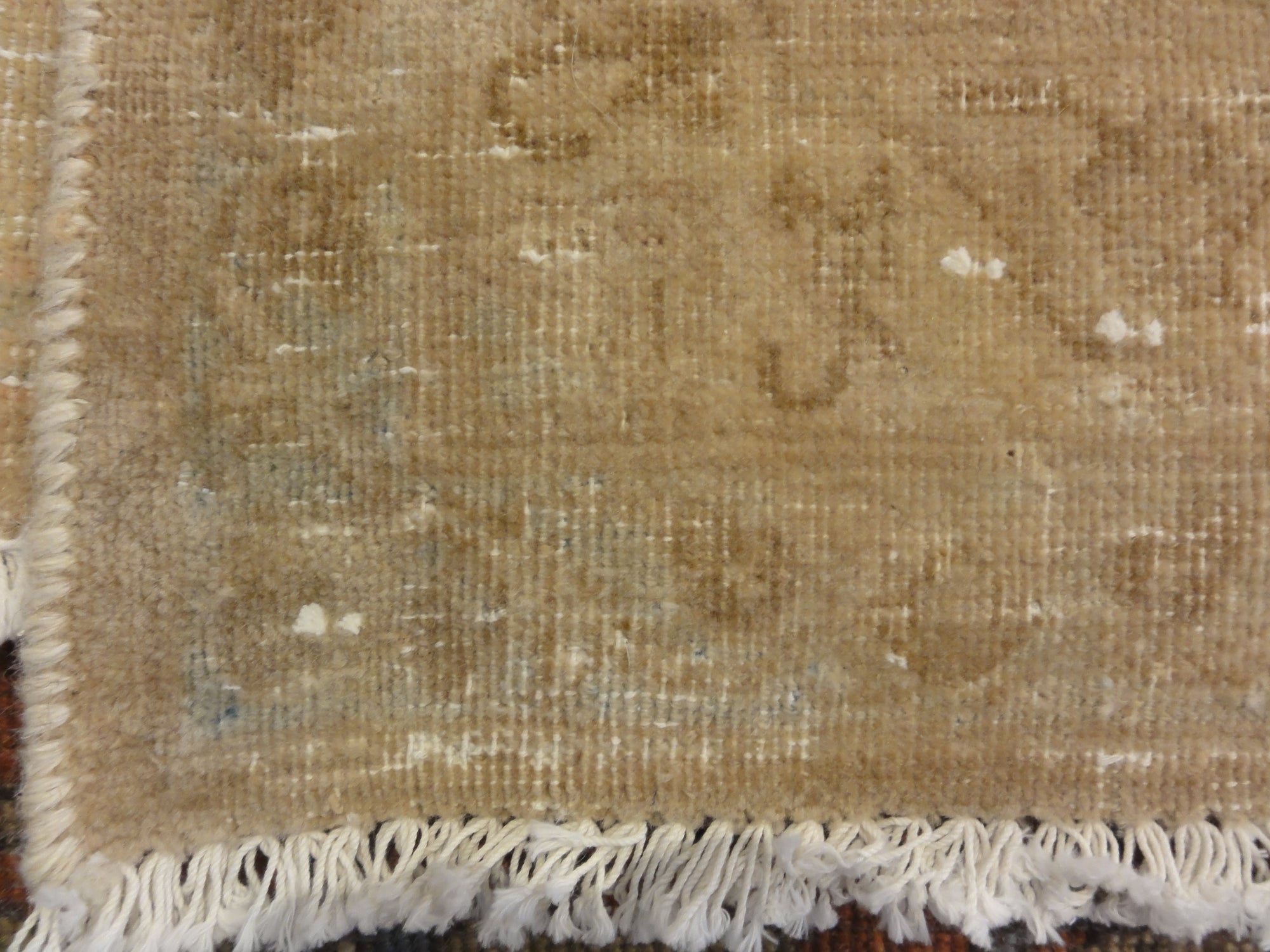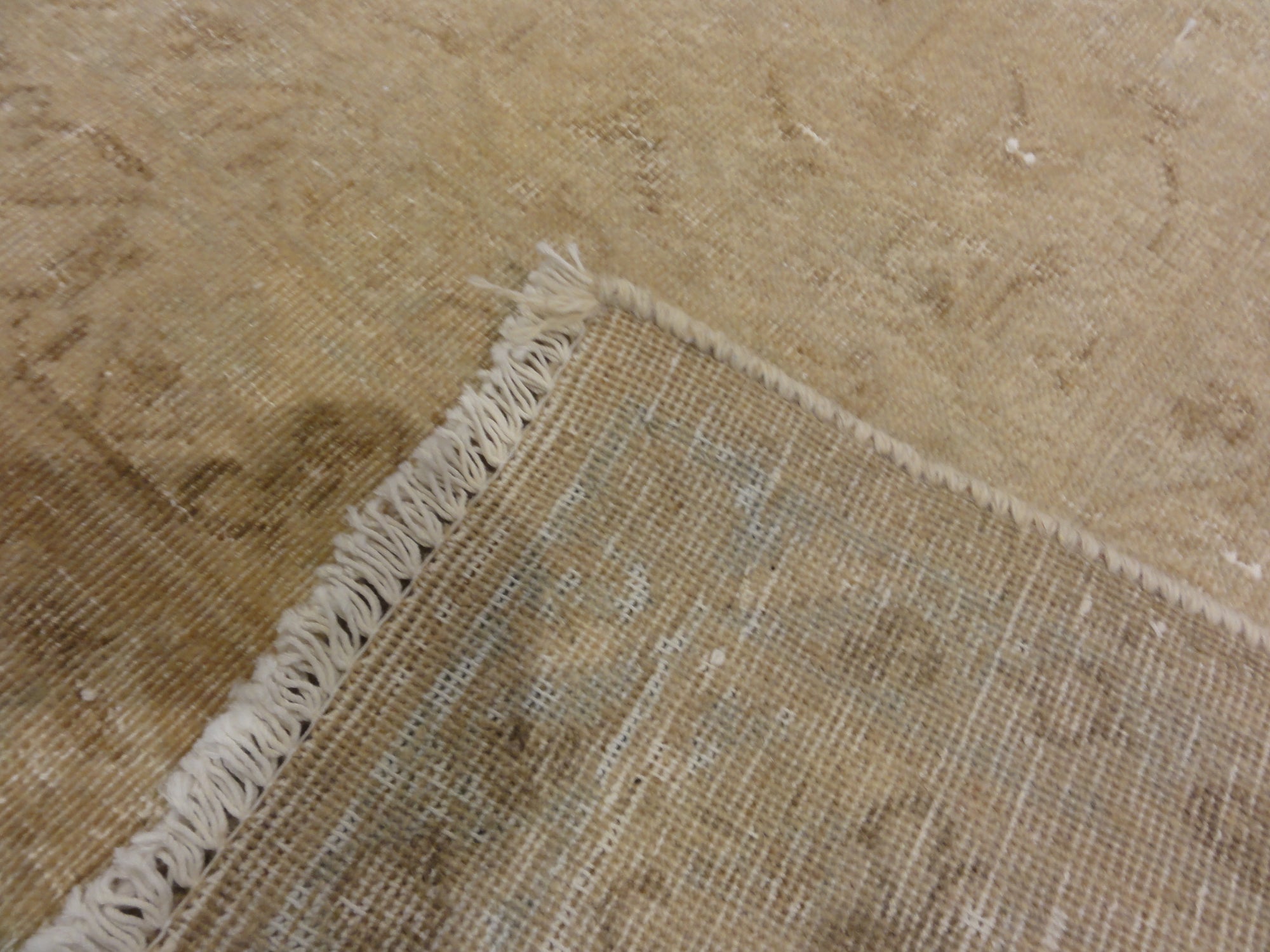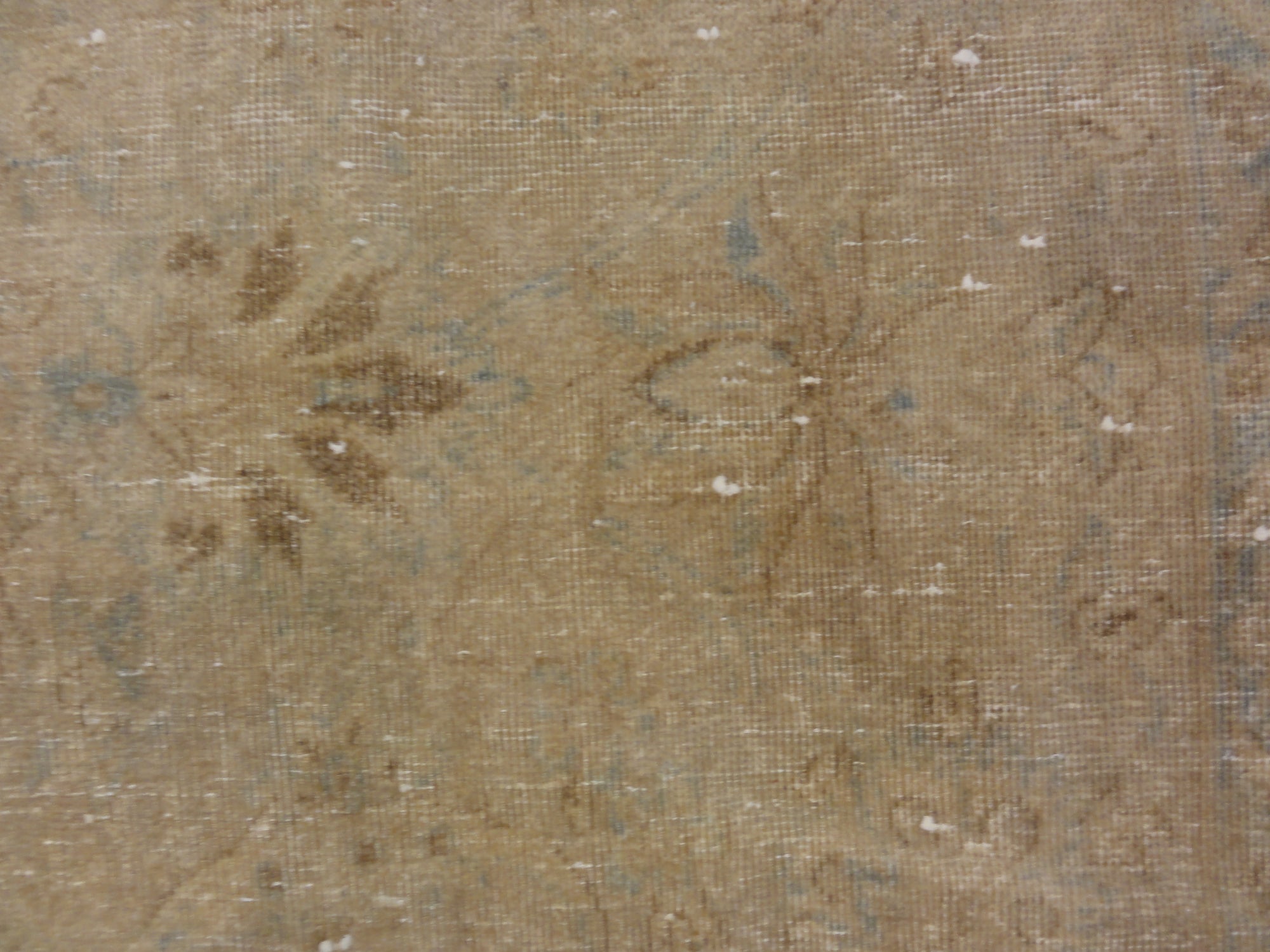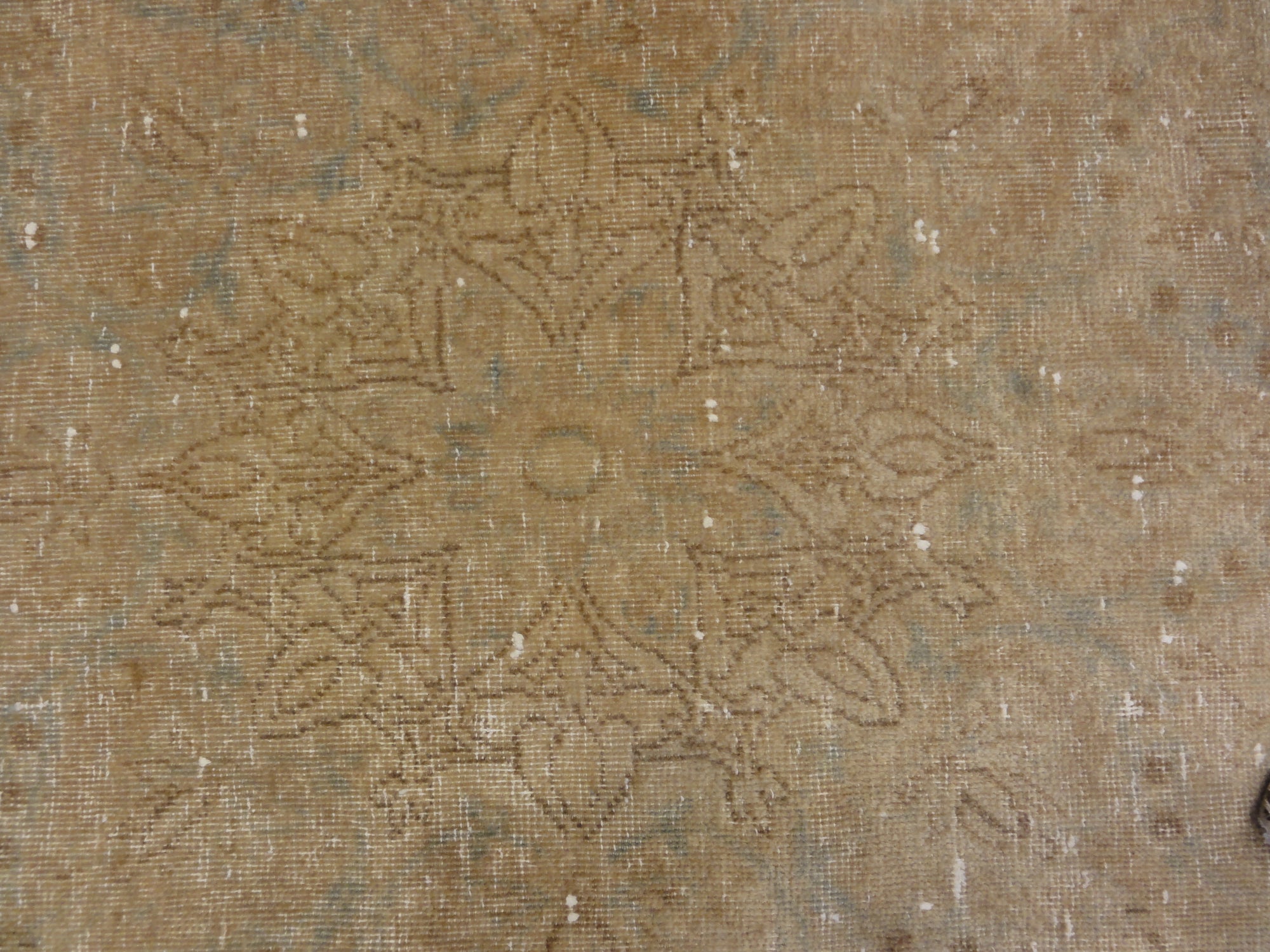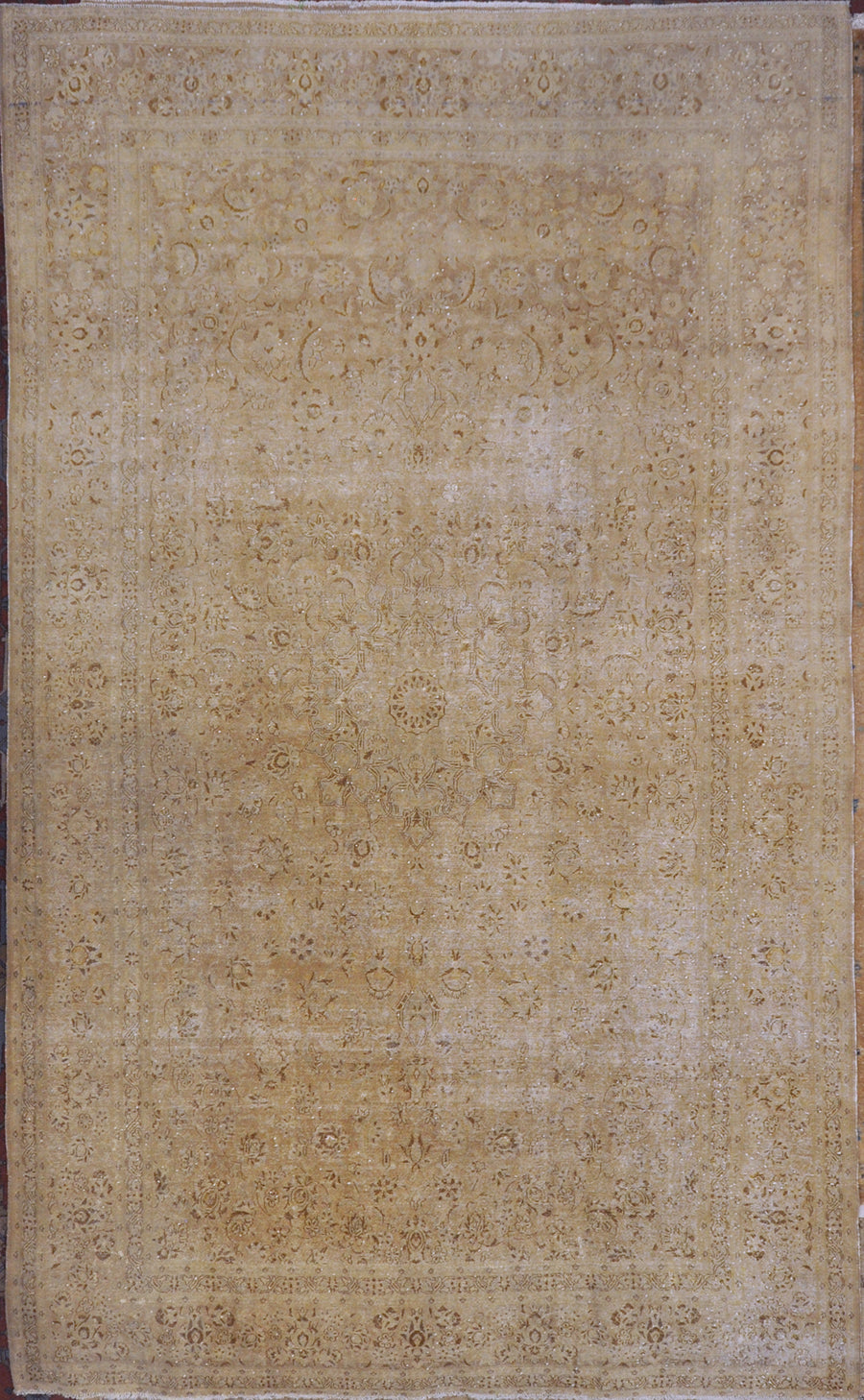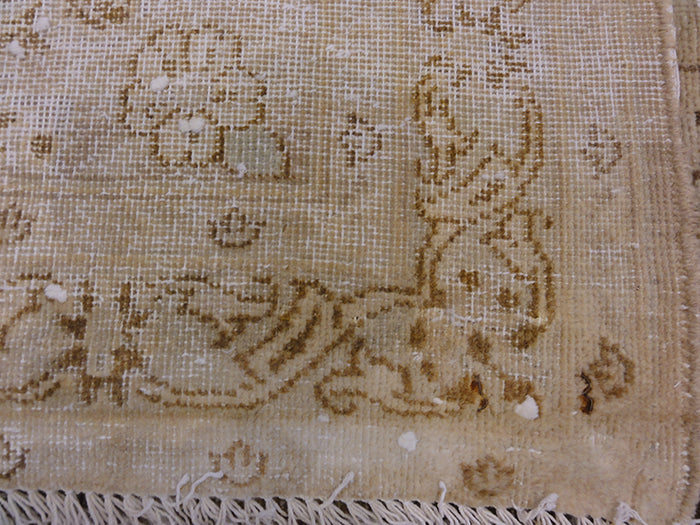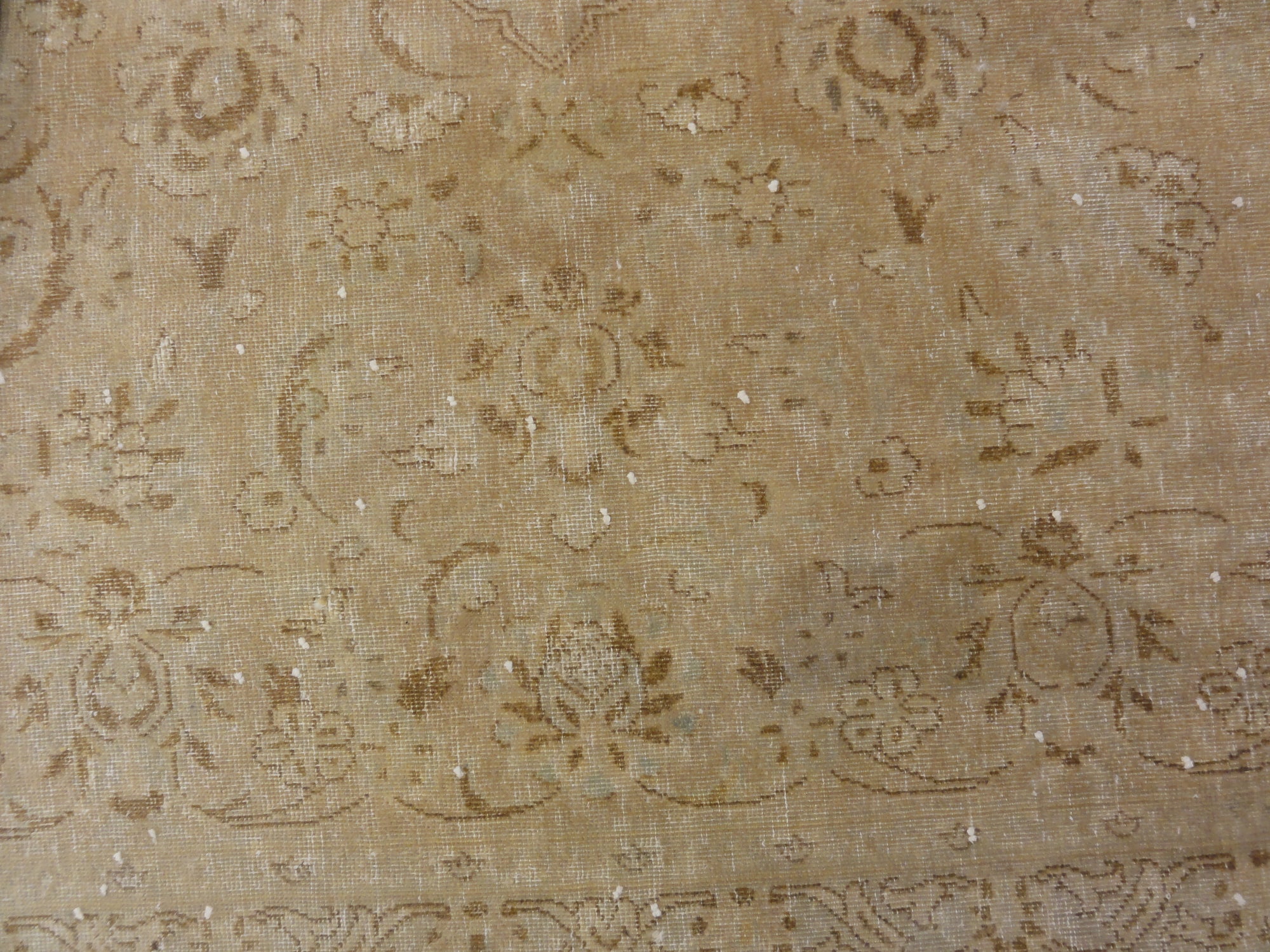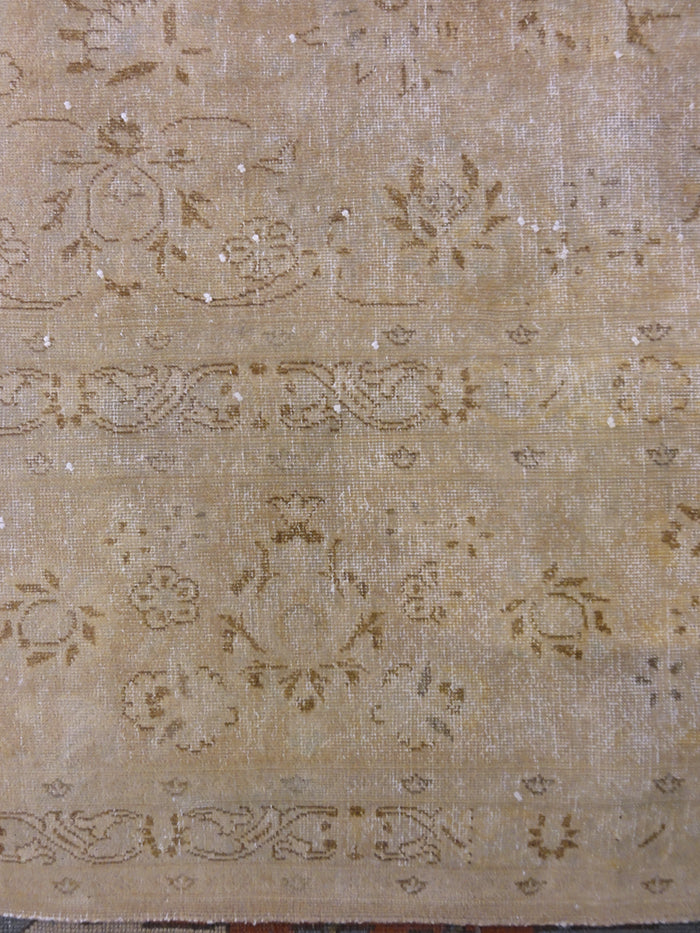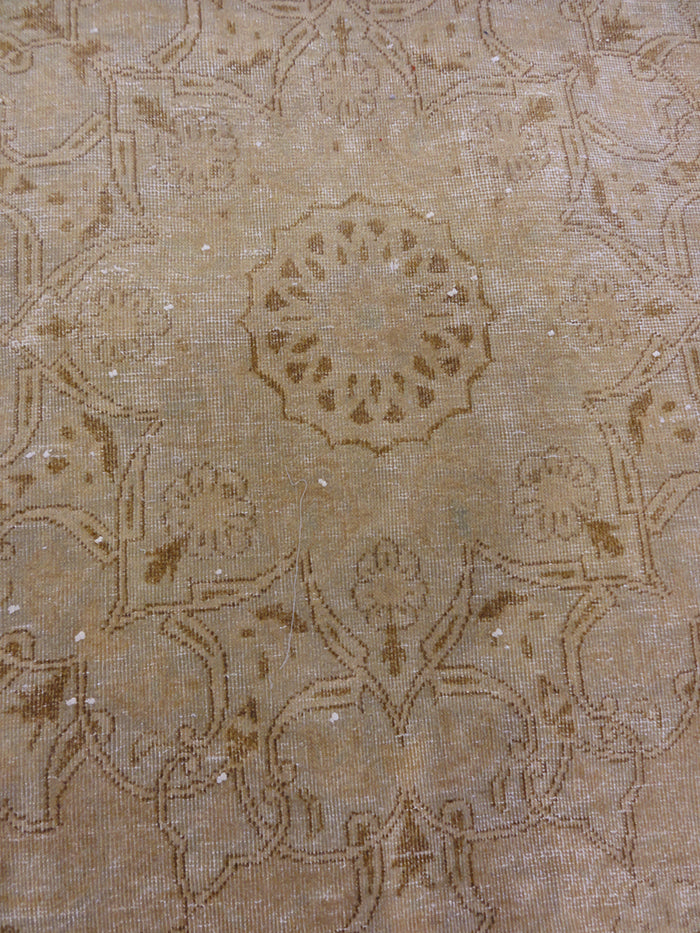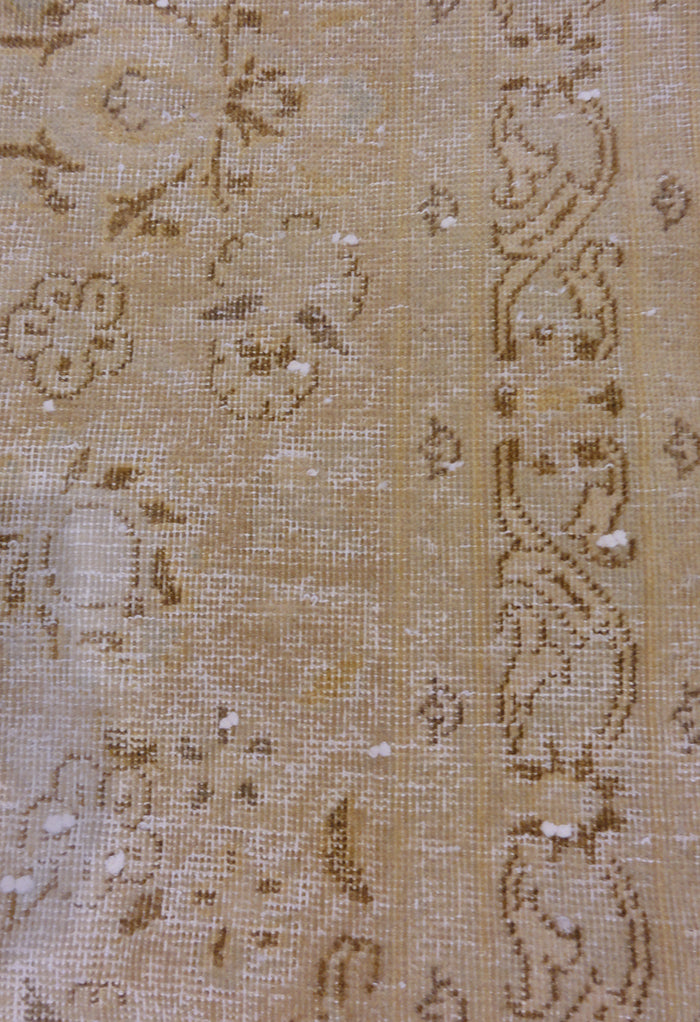Tabriz is the capital of Azerbaijan and the biblical Garden of Eden, a province northwest of Iran, is considered the center for creation of the design of antique rugs. It has survived repeated destruction by numerous earthquakes and invasions by the Mongols, Tamerlane, Ottomans and Afghans, as well as two Russian occupations. At the foot of the beautiful Elburz Mountains, Tabriz has a noteworthy history, both as the Persian market center most linked geographically to European and Western commerce, and as the source of the most venerated weavings: the inspired carpets of the Shah Abbas period during the 15th and 16th centuries. The city of Tabriz has been a known rug production center since the Safavid period (1501 to 1722 A.D.), and historical accounts indicate carpets were produced there as early as the Sassanid era (224 to 651 A.D.). Traditionally, Tabriz has been a city of master weavers, responsible for the creation of Tabriz Rugs. The ateliers in this influential carpet-weaving city established a strong reputation for classicism and quality that is still respected today. Tabriz carpets embody the graceful rendering of motif and precise weaving typical of Safavid works. During the late 19th century three Persian master-weavers, Haji Jalili, Sheik Safi and Kurban Dai contributed to Tabriz’s revival and Tabriz rug merchants began exporting High Quality Persian rugs to Western markets on a large scale.
Antique Tabriz rugs have been sought after by rug aficionados for decades. They are not only one of the finest groups of Persian rugs to have been produced in Persia and they are extremely decorative as well. Like Kashan and Isfahan carpets, Tabriz rugs capture the sophistication and refinement of the classical Safavid Court carpets. Reflected in many fine examples of antique Tabriz carpets is this rich heritage of the elegant court tradition combined with subtle innovations inspired by Western taste and artistry. The rugs of Tabriz are among the most beautiful and most desirable of antique Persian rugs, and have been manufactured in the Azeri speaking area of Northern Iran continuously for centuries. Since the middle of the 19th century, Tabriz has lead a resurgence in Persian carpet-weaving both for domestic use and for export. With strict standards of craftsmanship and quality of materials used, Tabriz rug weavers produced tight densely-knotted structures and elaborate floral displays. Some of the finest workshop Tabriz rugs, woven exclusively for carpet aficionados among the nobility, are technical achievements unsurpassed by any other weavings of the 20th century. Antique Tabriz Rugs are distinguished by their excellent weave and their remarkable adherence to the classical traditions of antique Persian rug design. But they cannot be distinguished by any particular pattern or by their coloration. Due to the sheer size of the rug industry in Tabriz the design as well as quality varies greatly. There is no traditional color scheme and the variety of color is limitless, ranging from rich jewel tones to subtle pastels. Tabriz rugs are precisely drawn and executed with care making them extremely popular among designers. This is partly caused by Tabriz's exposure to high levels of world trade as well as being a central hub for carpet export in Iran. Regional carpets feature effortless curve-linear designs, Safavid emblems, allover Herati (fish) patterns, spectacular medallions and masterful motifs of all shapes and sizes. Antique Tabriz rugs offer classical medallion designs and a host of allover patterns as well in every color imaginable, from brilliant rich tones to soft pastels. What sets them apart from other Persian rugs is their quality. Quality is exactly what can be found at our showroom, Rugs & More, where you’ll find several other Fine Rugs.
80 products









